Pilgrim Knowledge
Umrah for those who need it
Pilgrim Fund
Saving For Pilgrimage

Islamic Landmarks.com
Historical Islamic Sites

My Dua List
Easiest way to collect dua requests
Step by step Umrah
Detailed Hajj Guide
Tailored Guide
Sites, shops and more
Why Is Mecca Important To Muslims? – History, Facts & Significance
Table of Contents
Makkah, also spelled as Mecca, is the holiest city in Islam. It holds a unique place in the hearts of over 1.9 billion Muslims worldwide. It’s a place of deep spiritual significance, where believers congregate, seek blessings of Allah (SWT), and fulfill religious obligations as per the Sunnah of the Holy Prophet Muhammad (S.A.W).
Today, the Kaaba, Al-Masjid Al-Haram and other holy sites are the focal points of Islamic faith as millions of pilgrims from diverse backgrounds and walks of life visit them for Umrah or Hajj every year.
In this article, we look at the importance of Mecca in the lives of Muslims , its unique features, and the common religious practices and obligations that center the holy city in Saudi Arabia.

Why is Mecca important in Islam?
Indeed, the first House of worship established for mankind was that at Makkah – blessed and a guidance for the worlds.” – Surah Al-Imran, 3:96
Makkah is more than just a city in Saudi Arabia . It holds a unique place in the hearts of Muslims worldwide for several compelling reasons, mainly the following:
- Birthplace of the Holy Prophet Muhammad (Peace Be Upon Him)
Mecca, or Makkah, is the birthplace of the Prophet Muhammad SAW, the final messenger of Allah. He was born in the Year of the Elephant, marking 570 AD on the Gregorian calendar.
As the “Seal of the Prophets,” his mission was to convey Allah’s message to humanity. The revelation of the Quran and the establishment of Islamic teachings began in Makkah.
- Reception of the First Revelations
Makkah is where the Prophet Muhammad PBUH received the first divine revelations of the Quran. This momentous event occurred in the Cave of Hira , in the hills surrounding Makkah. It marked the beginning of the prophethood and signaled the initiation of the Quranic revelation, which serves as the foundational religious text for Muslims.
The Quran provides comprehensive guidance on faith, worship, morality, and social conduct, making it the compass for Muslims’ lives.
- The Kaaba (House of Allah)
The Kaaba, situated within the confines of the Masjid Al-Haram (the Grand Mosque), is in the heart of Makkah. The black cubic structure is considered the “House of Allah” and is the focal point for Muslim prayer, the Qibla.
Muslims worldwide face the Kaaba during their daily prayers, symbolizing their unity and spiritual connection. The Kaaba’s history is intertwined with the monotheistic legacy, as it was originally built by the Prophet Ibrahim (AS) and his son, Isma’il (AS) , dedicated to the worship of the creator of the universe.
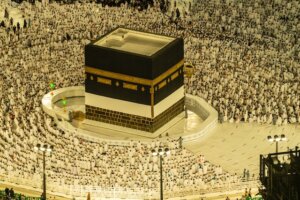
- Umrah and Hajj Pilgrimage
Makkah is the destination for two core pilgrimages in Islam: Hajj and Umrah. Hajj, one of the Five Pillars of Islam , is an obligatory pilgrimage that every Muslim who meets the conditions must undertake at least once in their lifetime.
The rituals of Hajj , which include circumambulating the Kaaba and standing on the plain of Arafat , are performed in and around Makkah. Umrah, in contrast, is a recommended but non-mandatory pilgrimage. Both journeys bring Muslims closer to Allah (SWT) and express devotion and humility.
What is Mecca?
The name “Mecca” has transcended its original reference to the holy city in Saudi Arabia, taking on a broader significance in Western culture.
It symbolizes a place of immense religious importance and any focal point or destination of great significance. Yet, “Why is Makkah important?” is a frequently asked question among muslims and non-muslims alike.
In Western contexts, “Mecca” signifies a location of supreme importance, reflecting the profound impact of the Islamic holy city’s spiritual and historical legacy on global consciousness.
This adaptation underscores its position as a gathering place where people unite for a common purpose or goal, reminiscent of how millions of Muslims gather in the city for religious pilgrimage.
While “Mecca” is used more broadly to evoke a sense of sanctuary or refuge, its primary and most sacred association remains with the Islamic holy city. There, the Kaaba is the central place of worship, and millions of diverse pilgrims congregate yearly for religious obligations.
“Mecca” has thus evolved into a symbol of unity, devotion, and the rich tapestry of Islamic history and faith, reflecting its importance locally and globally.
Where is Mecca located?
Makkah is located in the western region of Saudi Arabia, along the Red Sea coast. It’s inland from the Red Sea and lies approximately 70 kilometers from the port city of Jeddah.
The city is nestled within a valley, with the vast expanse of the surrounding desert adding to its unique geographical and spiritual character.
Why Do Muslims Go to Mecca?
Muslims from across the globe must undertake the pilgrimage to Makkah at least once in their lifetime if certain conditions are met. This pilgrimage is known as Hajj, one of the Five Pillars of Islam.
The Hajj obligation is an essential religious duty and serves as a way for Muslims to seek forgiveness, cleanse their souls, and strengthen their connection with Allah.
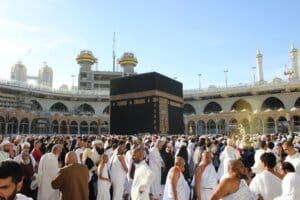
Why Do Muslims Pray Towards Mecca?
Muslims pray towards Mecca because it holds immense spiritual significance as the birthplace of Islam. The focal point of this devotion is the Kaaba, located within the Masjid al-Haram in Mecca.
This practice is deeply rooted in tradition, as it was the direction of prayer chosen by the Prophet Muhammad PBUH under divine guidance.
Praying in the direction of Mecca unites Muslims worldwide in their worship of Allah, emphasizing the central principle of tawhid, or the oneness of God.
It serves as a symbolic manifestation of the unity of the Muslim ummah, reinforcing the idea that all Muslims, regardless of their geographical location, are interconnected by their shared faith and devotion to the creator of the universe.
Why Is Hajj Important in Islam?
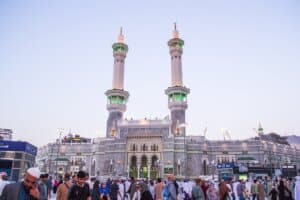
According to Western contexts, Islam is an Abrahamic religion. The Hajj pilgrimage has deep roots with Prophet Ibrahim (AS) and his son Isma’il (AS).
According to Islam, both prophets were commanded by Allah (SWT) to build the Kaaba, which now stands at the heart of the Masjid al-Haram in Mecca .
The construction of this house of worship was to establish the oneness of Allah and emphasize his universal sovereignty.
Hajj became mandatory in Islam as a continuation of this divine command. It serves as a commemoration of the trials faced by Prophet Ibrahim (AS) and his family.
The rituals performed during Hajj, such as circumambulating the Kaaba and standing at the plain of Arafat, are symbolic reenactments of events associated with the prophets.
Thus, Hajj is not merely a set of rites; it is a journey rooted in the shared history of the Abrahamic prophets, designed to strengthen the believers’ connection with Allah (SWT) and purify their souls.
Hajj is obligatory for every financially and physically capable Muslim who meets specific conditions. By undertaking this pilgrimage, Muslims not only cleanse themselves of past sins but also reaffirm their commitment to the monotheistic message of their forefathers and establish a profound sense of brotherhood and equality among themselves.
Similarly, Umrah importance can’t be understated. While it may not be mandatory, it’s still one of the most sacred journeys muslims undertake.
Interesting Facts About Mecca
Below are some interesting facts about Mecca for anyone planning to visit Saudi Arabia for Hajj or Umrah in the future:
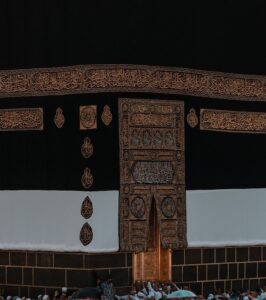
Annual Kaaba Kiswah Replacement
The Kaaba’s covering, known as the kiswah , is meticulously crafted from black silk and adorned with intricate gold embroidery. What’s intriguing is that it’s replaced annually, reflecting the reverence and care with which this sacred structure is looked after.
Exclusive Access to the Kaaba
While the general public can’t enter the Kaaba, a select few hold the keys to its interior. The honor of opening and entering the Kaaba is reserved for the keyholders, usually members of the Bani Shaybah family, who have been entrusted with this responsibility for generations.
Kissing the Black Stone
Embedded in the eastern corner of the Kaaba, the Black Stone, also known as the Hajar al-Aswad , is considered sacred. Pilgrims on Hajj and Umrah obligations often seek to kiss or touch the stone as a symbol of purification.
But did you know the stone wasn’t always black? Originally, it is believed to have been white. Over the centuries and through various events, including exposure to the sins of humankind, it turned black.
Why is Medinah Important in Islam?
Medinah, Islam’s second major holy city, carries immense historical and spiritual significance . In Medinah, the Prophet Muhammad (SAW) found refuge during a pivotal time in Islamic history.
His migration to Medinah, known as the Hijrah, marked the beginning of the Islamic calendar. This city became the birthplace of Islamic governance and ethics, where the first Muslim community was established.
Today, Medinah is home to the renowned Al-Masjid An-Nabawi, the second holiest mosque in Islam. The mosque encompasses the Prophet’s final resting place and is a destination for millions of Umrah or Hajj pilgrims and visitors who come to pay their respects.
Other Holy Sites in Makkah
Below are some of the key holy sites in Makkah apart from the Kaaba and Masjid al-Haram
The Mountains Surrounding Makkah
The hills and mountains around Mecca, such as Jabal Al-Noor , are of immense significance. The Cave of Hira, where the first revelations of the Quran were received by the Prophet Muhammad, is located in these mountains.
The Zamzam Well
The Zamzam Well is a sacred water source located within the Masjid al-Haram. This well is renowned for its continuous flow, even in the arid climate of Mecca. Pilgrims worldwide drink from it and take some home as a blessing.
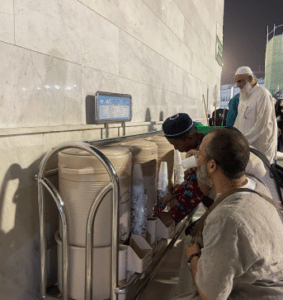
Prophet Ibrahim’s (AS) Footprints
Near the Kaaba, there’s a marker believed to be where the Prophet Ibrahim stood while constructing the Kaaba. It’s a blessed spot where millions of pilgrims pray and seek forgiveness.
Al Muallaa Cemetery
The Al Muallaa Cemetery in Makkah is the final resting place for several distinguished Prophet Muhammad (SAW) family members. Among those interred here are the Prophet’s wife, Khadijah bint Khuwaylid (AS), and his beloved uncle, Abu Talib.
Other Points of Interest in Makkah
While Masjid al-Haram and the other holy sites in Makkah are the primary hotspots for pilgrims and travelers, you can visit other interesting places when you’re done with the religious rituals and obligations. Popular points of interest include:
- Exhibition of the Two Holy Mosques Architecture (Mecca)
This captivating exhibition offers a unique window into the architectural grandeur of two of Islam’s most sacred sites, Masjid Al Haram in Makkah and Al Masjid Al Nabawi in Madinah.
Visitors can explore these magnificent structures’ intricate designs, engineering marvels, and history. The exhibition showcases the evolution of these mosques’ architecture, from humble beginnings to awe-inspiring modern-day structures hosting millions of worshippers.
- Clock Tower Museum
Nestled within the iconic Abraj Al Bait Towers, the Clock Tower Museum provides an immersive experience of Makkah’s history and cultural importance. It delves into the evolution of Makkah from a historic city to a bustling, cosmopolitan metropolis.
Visitors can explore the city’s expansion and history, the Grand Mosque’s development and its surroundings, and the immense cultural significance of Makkah for Muslims worldwide. The museum’s exhibits offer an educational and enriching experience, shedding light on the city’s transformation over the years and its central role in the Islamic world.
Summary – Why is Makkah Important?
Makkah’s significance in Islam is immeasurable. It’s the birthplace of the final messenger of Allah, Muhammad SAW. It’s home to the sacred Kaaba, the focal point of daily Muslim prayers.
Hajj, a religious obligation, draws millions of pilgrims to Makkah annually, emphasizing unity, equality, and spiritual rejuvenation.
Now that you understand the importance of Makkah in Islam,please book your flight to Saudi Arabia to perform Hajj or Umrah with our amazing packages. We pray that Allah SWT opens the door to each of you.
“And proclaim to the people the Hajj; they will come to you on foot and on every lean camel; they will come from every distant pass.” – Quran, Surah Al-Hajj (22:27)

0% of readers found this article helpful. Did you?
Report an issue
Through His Names
New course with Ustadh Shabbir Hassan
Your content goes here
“Pilgrimage to this House is an obligation by Allah upon whoever is able among the people.” — Qur’an 3:97
Want a guided tour of Jannatul Baq? Learn more here.
Alert: It is recommended that you take a drawstring bag for your shoes. Keep them close to you because they can get lost fairly easily.
Recommended Reads
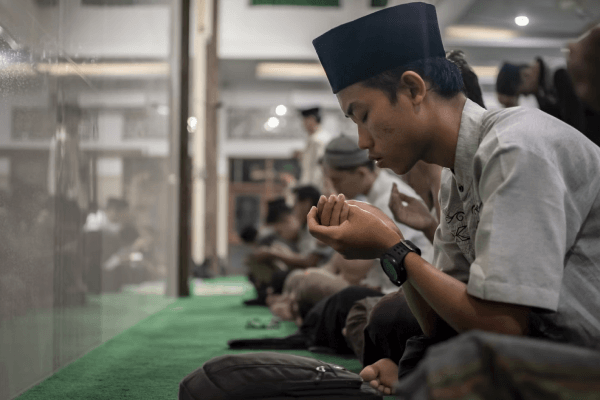
8 minute read

Masjid Al Bayah – Pledge Between The Muslims & Ansar
5 minute read
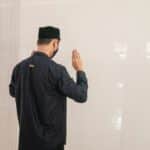
Masjid Jirranah – Mosque, Miqat & Distribution of War Spoils
4 minute read
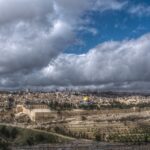
Gates of Masjid Al Aqsa – Complete List Of 11 Babs/Doors

Gates of Masjid Al Nabawi – List of all 42 Doors
19 minute read
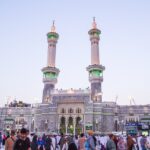
Gates of Masjid Al Haram – Complete List of All Gates/Doors
14 minute read
Recommended Videos
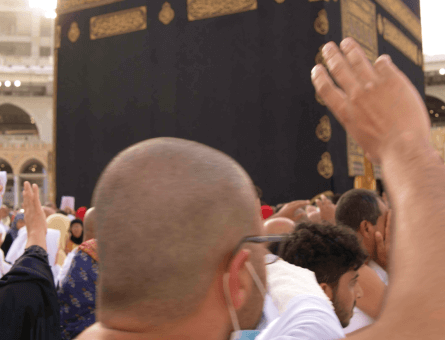
What is the Spiritual Significance of the Tawaf?
· 7.5K views
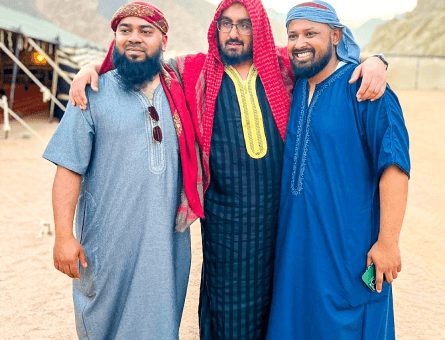
Why is Mount Nur important?
· 2.7K views
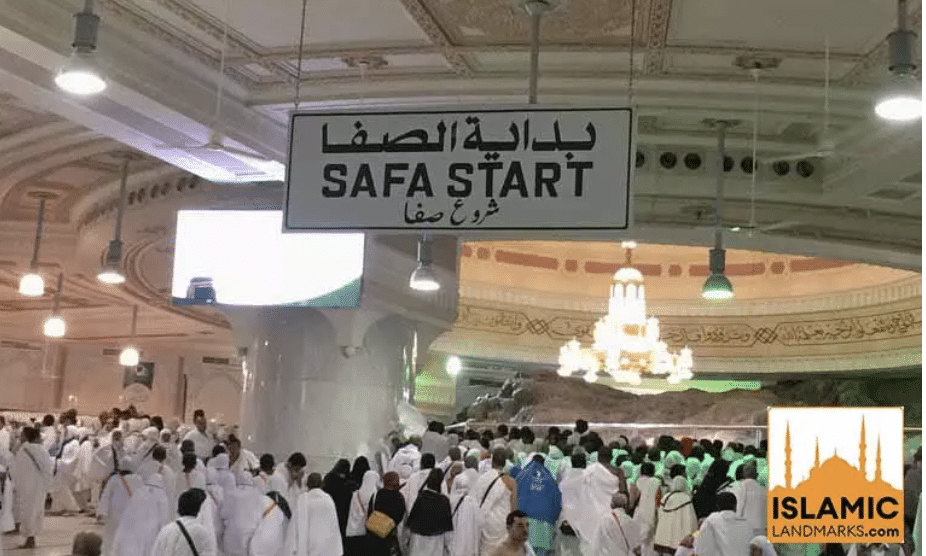
The History of Mount Safa
· 2.4K views

E9 I The Healer I Through His Names
· 6.9K views
Thanks for your contribution!
We’ve recorded your feedback. A team member will be reviewing this shortly.
Verified by mark
This article has been verified for authenticity by Why Is Mecca Important To Muslims? – History, Facts & Significance.
Prophet Ibrahim's (AS) Footprints
Summary - why is makkah important.
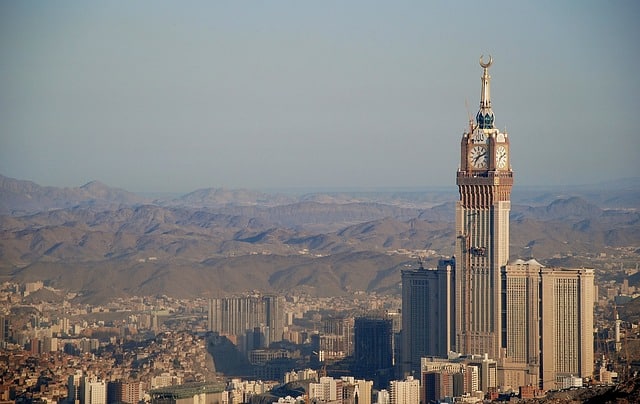
- Explore Europe
- Explore Asia
- Explore Africa
- Explore Americas
- Best Restaurants
- Airplane Travel
A Trip To Mecca: The Best Guide For Muslim Tourists
Whether you’re a Muslim or not, at least once you’ve heard about the city of Mecca . Mecca is a city located in Saudi Arabia that is considered by Muslims to be the holiest place in Islam . Every year, millions of Muslims make a pilgrimage (known as the hajj) to Mecca, and it is also a popular destination for Muslim tourists from all over the world.
Our guide, written by experts will cover everything you need to know about planning a trip to Mecca, including how to get there, where to stay, what to see and do, and how to make the most of your experience. We’ll also provide some valuable tips for staying safe and avoiding cultural misunderstandings.
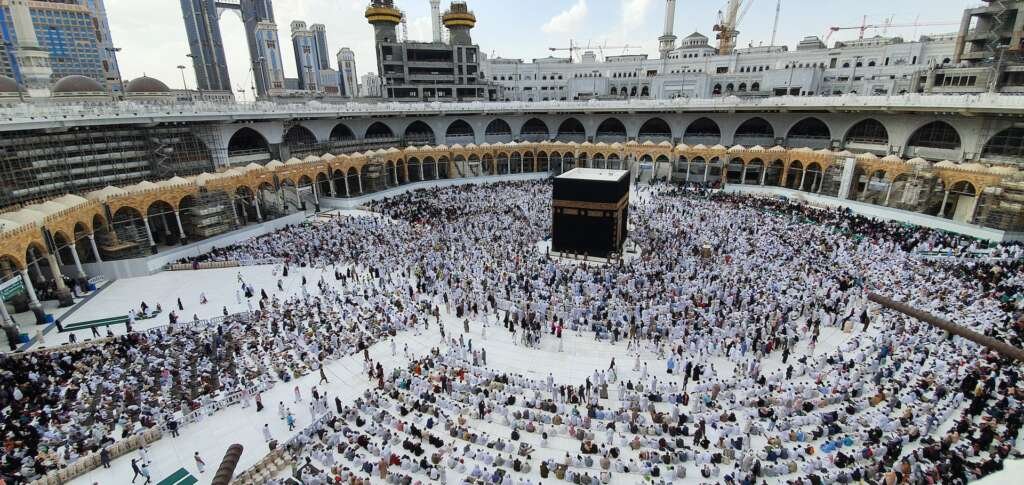
Introduction: Why Visit Mecca?
Mecca is the holiest city in the Islamic faith and a mandatory pilgrimage site for all able-bodied Muslims. Located in present-day Saudi Arabia, Mecca was where the Prophet Muhammad was born and received the revelation of the Quran. For people who follow Islam, Mecca is a place of great religious significance and a reminder of the central tenet of their faith: the Oneness of God.
For Muslims, the trip to Mecca is a once-in-a-lifetime religious obligation. Every year, millions of Muslims from all over the world make the journey to Mecca. The trip is an opportunity to perform the hajj or pilgrimage, and to stand in solidarity with other Muslims from all walks of life. Mecca is also a place of great historical and cultural significance.
The city is home to the Kaaba, the holiest site in Islam, as well as the Al-Masjid al-Haram, the largest mosque in the world. For many Muslims, visiting Mecca is a deeply moving and spiritual experience. It is a chance to connect with their religion on a personal level and to feel closer to God.
How to Get There: Flights, Trains, and Buses
The best way to get there is by plane. There are direct flights to Mecca from major airports all over the world, including London, Paris, New York, and Dubai. You can also take a train or bus to Mecca, but these options are less convenient and usually take longer. The journey by bus or train is also more expensive.
Before your trip to Mecca, it is important to check the visa requirements of Saudi Arabia in advance. Citizens of many countries, including the United States, will need to obtain a special visa to enter the country.
Accommodation: Where to Stay in Mecca
When planning a trip to Mecca, it’s important to choose the right place to stay. There are a few things to keep in mind, such as proximity to the holy sites and the overall atmosphere of the hotel. Luckily, there are plenty of great options in Mecca, so you’re sure to find the perfect place for your needs.
If you’re looking for a luxurious and modern hotel, the Ritz-Carlton Mecca is a great choice. It’s located just minutes from the Grand Mosque, making it convenient for those who want to spend time praying and exploring the holy city. The hotel also has an on-site spa and restaurant, so you can relax and enjoy yourself during your stay.
For a more traditional trip , consider staying at the Dar Al Tawhid Hotel. This hotel is located right next to the Grand Mosque, making it easy to get to your prayers on time. The hotel has a more traditional feel, with Arabic architecture and furnishings. However, it still offers all the amenities you need for a comfortable stay, such as an on-site restaurant and laundry service.
Attractions: What to See and Do in Mecca
There are plenty of things to see and do in Mecca, whether you’re interested in religious sightseeing or exploring the city’s culture and history. Here are some of the highlights:
• Visit the Grand Mosque: The Grand Mosque is the holiest site in Islam and a mandatory pilgrimage site for all able-bodied Muslims. It is located in the center of Mecca and is home to the Kaaba, the most sacred object in Islam.
• Explore the Old City: The Old City of Mecca is full of history and culture. wander through the narrow streets and alleyways and soak up the atmosphere. Be sure to visit the King Fahd Gate, one of the city’s most iconic landmarks.
• Visit the Museum of Islamic Art: The Museum of Islamic Art is located in the Old City of Mecca and houses a collection of artifacts from the Islamic world. This is a great place to learn more about the history and culture of Islam.
• Go shopping: Mecca is a shopper’s paradise, with plenty of malls and markets to explore. For a truly unique shopping experience, head to the Gold Souk, where you can find everything from gold jewelry to traditional Arabic sweets.
• Take a day trip: Mecca is located close to many other interesting places in Saudi Arabia. Consider taking a day trip to Jeddah, the Red Sea, or Mada’in Saleh.
Food Guide: What To Eat While in Mecca
I think we can all agree that we would not be able to enjoy our trip to Mecca or any other city without the right food. What to eat in Mecca? There are many great options for food lovers, whether you’re looking for a quick bite or a sit-down meal.
If you’re looking for something quick and easy, consider grabbing a shawarma from one of the many street vendors in the city. Shawarma is a type of kebab that is very popular in the Middle East . It’s made with chicken, lamb, or beef that is cooked on a spit and then shredded and served in a pita bread with salad and sauce.
For a sit-down meal, there are plenty of great restaurants to choose from. If you’re looking for traditional Arabic cuisine, try Al-Baik. This restaurant is known for its delicious chicken dishes, and it has several locations throughout the city.
Tips for Staying Safe and Avoiding Cultural Misunderstandings
As with any travel destination , there are a few things to keep in mind to ensure a safe and enjoyable trip. Here are some tips for staying safe while in Mecca:
• Dress modestly: Remember that you are visiting a holy city, so it is important to dress respectfully. Women should cover their hair and wear loose-fitting clothing that covers their arms and legs. Men should also dress modestly, with long pants and shirts that cover the chest and shoulders.
• Don’t take photos of people without permission: Many people consider it disrespectful to take photos of people without their permission, so be sure to ask before taking any photos.
• Don’t touch or point at the Kaaba: The Kaaba is the most sacred site in Islam, and it is considered disrespectful to touch or point at it. If you want to take a photo of the Kaaba, be sure to do so from a distance.
• Don’t drink alcohol: Alcohol is not allowed in Saudi Arabia, so be sure to abstain while in Mecca.
• Don’t use drugs: Drug use is illegal in Saudi Arabia and can lead to stiff penalties, including jail time.
• Don’t lose your temper: It’s important to remain calm and respectful while you’re enjoying your trip to Mecca, even if you don’t agree with everything you see or hear while in Mecca. Losing your temper could lead to a misunderstanding or even a dangerous situation.
Can Non-Muslims Visit Mecca?
Non-Muslims are not allowed to enter Mecca. The only exceptions are diplomats and other officials who need to enter for business reasons. Even they are required to respect the religious customs of the city. Muslims who are not on a pilgrimage are also not allowed into Mecca. The holy city is reserved for those who are performing the pilgrimage rites.
Anyone caught trying to enter Mecca without permission can be arrested and deported. There have been some recent changes, however. In 2019, Saudi Arabia began issuing visas to non-Muslim tourists from 49 countries. Visitors are still not allowed into the holiest sites, but they can now see some of the other sights in and around Mecca.
Related Stories
Top 10 things to do in bangkok in 2024, important things you need to know before visiting chennai, guangzhou faq: itinerary, shopping, visa requirements etc, about parrotio.
Parrotio.com is a travel blog created in 2022 by travel enthusiasts who wanted to share their love of adventure and exploration with the world. Our platform is an always-growing collection of articles on the best destinations, restaurants, hotels and tours that are handpicked by a team of experts.
Can You Bring Seashells on a Plane in 2024?
29 best us cities to visit in december, can you bring a razor on a plane tsa..., can you bring deodorant on a plane tsa rules, is it safe to travel to puerto vallarta in..., how to fold a suit for travel: step by..., can you bring snacks on a plane, can you bring food on a plane tsa guidelines, can you bring sarms on a plane, can you bring safety pins on a plane in....
We make it easy to find and share the best trips from people like you in one place. It's an always-growing collection of articles on top destinations, hotels, restaurants, tours and more that are handpicked by our team of experts.
Quick Access
Using our platform.
- Terms of Service
- Privacy Policy
- Refund Policy
Stay up to date with notifications from The Independent
Notifications can be managed in browser preferences.
UK Edition Change
- UK Politics
- News Videos
- Paris 2024 Olympics
- Rugby Union
- Sport Videos
- John Rentoul
- Mary Dejevsky
- Andrew Grice
- Sean O’Grady
- Photography
- Theatre & Dance
- Culture Videos
- Food & Drink
- Health & Families
- Royal Family
- Electric Vehicles
- Car Insurance deals
- Lifestyle Videos
- UK Hotel Reviews
- News & Advice
- Simon Calder
- Australia & New Zealand
- South America
- C. America & Caribbean
- Middle East
- Politics Explained
- News Analysis
- Today’s Edition
- Home & Garden
- Broadband deals
- Fashion & Beauty
- Travel & Outdoors
- Sports & Fitness
- Sustainable Living
- Climate Videos
- Solar Panels
- Behind The Headlines
- On The Ground
- Decomplicated
- You Ask The Questions
- Binge Watch
- Travel Smart
- Watch on your TV
- Crosswords & Puzzles
- Most Commented
- Newsletters
- Ask Me Anything
- Virtual Events
- Betting Sites
- Online Casinos
- Wine Offers
Thank you for registering
Please refresh the page or navigate to another page on the site to be automatically logged in Please refresh your browser to be logged in
What is Hajj and why do Muslims go to Makkah?
Muslims from around the world descend upon makkah for the annual hajj pilgrimage- here’s all you need to know, article bookmarked.
Find your bookmarks in your Independent Premium section, under my profile
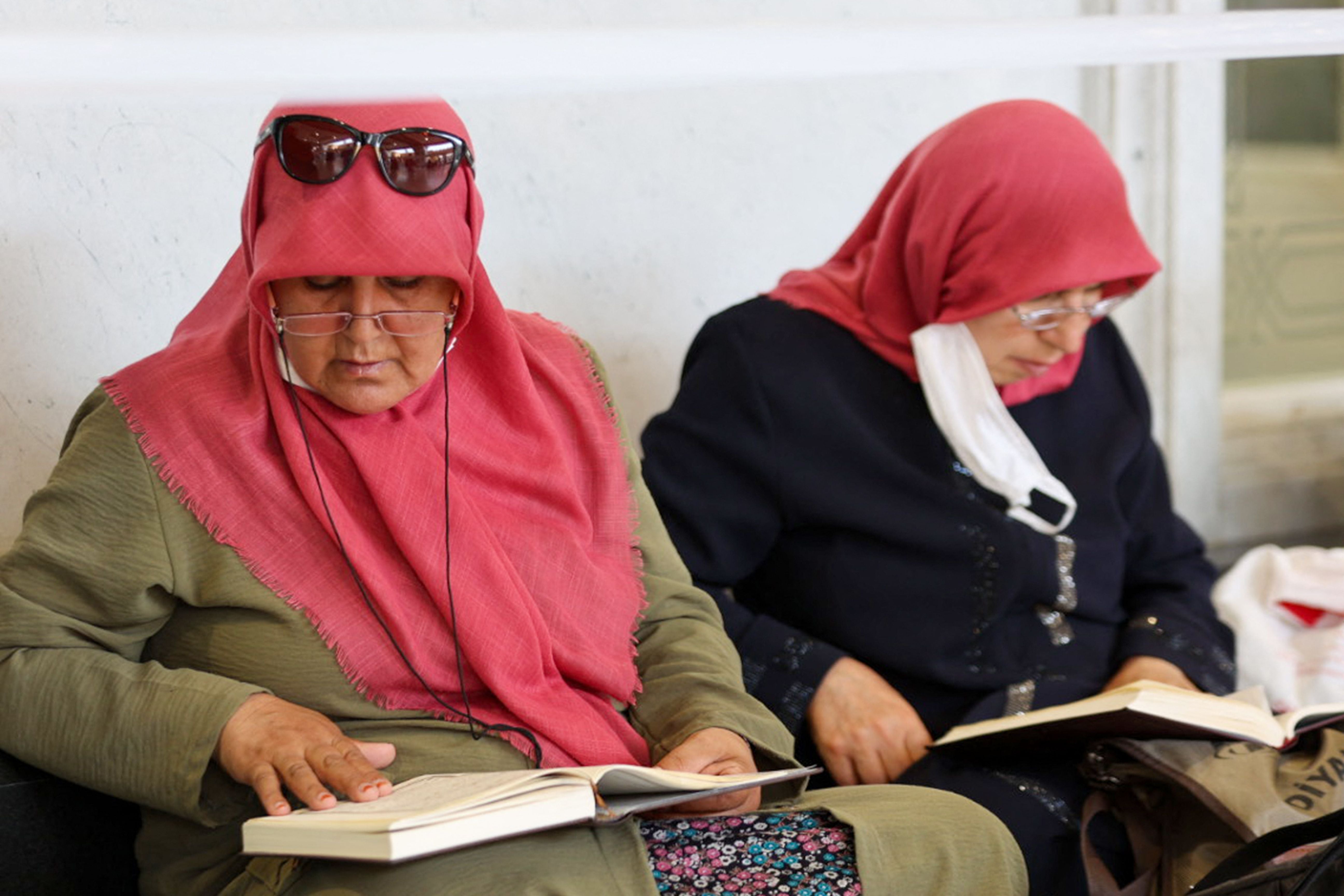
For free real time breaking news alerts sent straight to your inbox sign up to our breaking news emails
Sign up to our free breaking news emails, thanks for signing up to the breaking news email.
One million Muslims are about to embark on the most important religious event in the Islamic calender, as hundreds of thousands of global worshippers arrive in Saudi Arabia for Hajj .
Hajj is one of the five pillars in Islam. It is an obligation upon every physically and financially able Muslim to perform once in their lifetime.
The pilgrimage is an opportunity for Muslims to renew their faith , develop a closer relationship to God and seek forgiveness for their sins.
Muslims from around the world descend upon Makkah, where lies the majestic Holy Kaaba, inside the city’s central mosque, Masjid al-Haram.
This is the first year since the pandemic began in 2020 that international pilgrims are allowed inside Makkah to perform the sacred pilgrimage.
When arriving for the pilgrimage, men must wear two pieces of white cloth called the ihraam, while women wear clothes that cover the length of their body and a hijab which covers their hair.
The simplicity of clothing symbolises the equality of all people before God, as well as a state of purity before embarking on the spiritual journey.
Muslims first perform the tawaf, which is when they walk around the black Kaaba clockwise seven times.
They then walk or run seven times between the two hills of Safa and Marwa to honour the struggle of the wife of Prophet Ibrahim, Hajar, who ran between the hills seven times in search of water for her son, Ismail.
The two acts together are known as Umrah - a lesser pilgrimage which Muslims can perform throughout the year in Makkah.
After this first stage of Hajj is completed, pilgrims go to Mina, a tent city roughly eight kilometres from Makkah.
Here, they spend the night in worship before one of the most important days in the Hajj calender, the Day of Arafat.
Pilgrims flock to Mount Arafat, where the Prophet Muhammad gave his last sermon. They pray for forgiveness and recite the Quran while standing on the mount.
After Arafat, they go to Muzdalifa which is an area of open plains near Makkah where they spend the night.
On the third day, the pilgrims are back in Mina for a ritual known as the stoning of the devil. They throw pebbles at three structures that mark the spot Prophet Ibrahim was tempted by Satan.
This is followed by the sacrifice of lamb whose meats are distributed to the poor, marking the day first day of Eid.
- Hajj pilgrimage: Heartache and confusion for British Muslims left in limbo by new Saudi rules
- ‘It’s been a disaster’: British Muslims turned away at airports amid hajj pilgrimage lottery chaos
- British Muslim tour operators face liquidation following changes to Saudi Hajj
Around the world, Muslims celebrate the holy festival with special prayers at the mosque, followed by meeting food, family and friends. This year, Eid will fall on 9 July.
On the last days of Hajj, pilgrims return to Makkah to perform one more tawaf around the Kaaba and walk between the hills of Safa and Marwa, and also return to stone the three structures.
Join our commenting forum
Join thought-provoking conversations, follow other Independent readers and see their replies
Subscribe to Independent Premium to bookmark this article
Want to bookmark your favourite articles and stories to read or reference later? Start your Independent Premium subscription today.
New to The Independent?
Or if you would prefer:
Want an ad-free experience?
Hi {{indy.fullName}}
- My Independent Premium
- Account details
- Help centre
Makkah Visitors Guide
Religious and Historical Sites to Visit
- Important Principles
- Prayer Salat
- Prophets of Islam
- Ramadan and Eid Al Fitr
- Hajj and Eid Al Adha
- M.Ed., Loyola University–Maryland
- B.S., Child Development, Oregon State University
Whether you are traveling for a pilgrimage (umrah or hajj), or simply making a stop through, Makkah is a city of significant religious and historical significance to Muslims. Here is a list of must-see sites in and around the city of Makkah. Most of these sites are official stops during pilgrimage, while others may take you off the beaten path.
The Grand Mosque
The first stop for many visitors, the Grand Mosque ( al-Masjid al-Haram ) is located in the heart of downtown Mecca. Prayers are said here around the clock, with space for nearly a million worshippers inside the building itself. During peak visiting periods, worshippers also line up in rows along the courtyards and streets surrounding the mosque. The current structure of the Grand Mosque was built in the 7th century AD, and through various imam's leadership has gone through several renovations and expansions since then.
The Ka'aba
Basil D Soufi via Wikimedia Commons
The Ka'aba (literally "the cube" in Arabic) is an ancient stone structure that was built and re-built by prophets as a house of monotheistic worship. It is located in the interior courtyard of the Grand Mosque. The Ka'aba is considered the center of the Muslim world, and is a unifying focal point for Islamic worship.
The Hills of Safa and Marwa
These hills lie within the structure of the Grand Mosque. Muslim pilgrims visit the hills in remembrance of the plight of Hajar, wife of the Prophet Abraham . Tradition holds that as a test of faith, Abraham was ordered to leave Hajar and their young son in the heat of Mecca with no provisions. Facing thirst, Hajar left the infant in search of water. She reportedly raced to these two hillsides, back and forth, rising up each one to get a better view of the surrounding area. After several trips and on the verge of desperation, Hajar and her son were saved by the miraculous springing of the well of Zamzam.
The hills of Safa and Marwa are approximately 1/2 kilometer apart in distance, connected by a long corridor within the confines of the Grand Mosque.
Plain of Arafat
This hillside ("Mount Arafat") and plain is located just outside Mecca. It is a gathering point on the second day of Hajj pilgrimage rituals, known as the Day of Arafat . It was from this site that the Prophet Muhammad gave his famous Farewell Sermon in the final year of his life.
Zamzam Spring Water Well
Zamzam is the name of a well in Mecca which provides natural spring water to the millions of Muslim pilgrims who visit each year. Traditionally dating back to the time of the Prophet Abraham, the well is located a few meters east of the Ka'aba.
Looking for additional sites to visit? Consider Station of Abraham, Mina, and Muzdalifah.
- The Architecture and History of the Kaaba
- The Stages of Hajj, the Islamic Pilgrimage to Mecca (Makkah)
- What Is the Ka'aba in Mecca?
- Madinah City Guide
- Meaning and Significance of the Day of Arafat
- The Specific Dates for the Day of Arafat from 2017 to 2025
- Prophet Ibrahim (Abraham)
- Top Islamic Art Museum Collections
- The Crescent Moon Symbol on National Flags
- The Imams of Mecca: Well-Educated, Mild-Mannered, and Very Busy
- Islamic Marriage and Involvement of Friends and Family
- Converting to Islam
- Introduction and Resource Guide to Islam
- Seven Modern Muslim Musicians and Recording Artists
- These Islamic Charities Are Helping People All Over the World
- Newsletters
Site search
- Israel-Hamas war
- Home Planet
- 2024 election
- Supreme Court
- TikTok’s fate
- All explainers
- Future Perfect
Filed under:
- World Politics
Hajj, the Islamic pilgrimage to Mecca, explained for non-Muslims
It’s like Burning Man, but for Muslims. Okay, it’s nothing like Burning Man.
Share this story
- Share this on Facebook
- Share this on Twitter
- Share this on Reddit
- Share All sharing options
Share All sharing options for: Hajj, the Islamic pilgrimage to Mecca, explained for non-Muslims
/cdn.vox-cdn.com/uploads/chorus_image/image/50787355/GettyImages-93497054.0.jpg)
At this moment in mid-August, 1.5 million people from dozens of countries around the world are in Mecca, Saudi Arabia, to perform the hajj, the Islamic religious pilgrimage.
It’s a huge event — in terms of both its significance in Islam and the massive logistical challenge of having that many people from all walks of life and every corner of the globe descend on one relatively small place all at once.
But what actually goes on at the hajj? What is its religious and political significance? How do they handle all those people? And what is inside that big black box?
We've got you covered: Here are the most basic answers to the most basic questions about the hajj.
What is the hajj?
The hajj — Arabic for “pilgrimage” — is a five-day religious pilgrimage to Mecca and nearby holy sites in Saudi Arabia that all Muslims who are physically and financially able must perform at least once in their lives. It is one of the five pillars, or duties, of Islam, along with the profession of faith in the one God and Mohammed as his prophet, prayer, charitable giving, and fasting during the holy month of Ramadan .
The hajj takes place only once a year, in the 12th and final month of the Islamic lunar calendar; pilgrimages to Mecca made at other times in the year are encouraged but do not count as the hajj. Because the Islamic lunar calendar is about 11 days shorter than the 365 days of the standard Gregorian calendar, the timing of the hajj moves backward each year.
Over the five days of the hajj, pilgrims perform a series of rituals meant to symbolize their unity with other believers and to pay tribute to God. On the last three days of the hajj, pilgrims — as well as all other Muslims around the world — celebrate Eid al-Adha, or the Festival of Sacrifice. This is one of the two major religious holidays Muslims celebrate every year. (The other is Eid al-Fitr, which comes at the end of Ramadan.)
At the end of the hajj, pilgrims return home and are often given the honorific “hajji,” meaning one who has performed the hajj. (One interesting note here: During the Iraq War, US troops frequently used the term “hajji” as a derogatory term for any Iraqi, Arab, or other person of Middle Eastern or South Asian descent. So although they certainly didn’t mean it this way, and it almost certainly wasn’t taken this way by the person on the receiving end of the slur, US troops were inadvertently applying a term of respect and honor to these individuals.)
What is the religious significance of the hajj?
People may be surprised to learn that the hajj has very little to do with the Prophet Mohammed. Rather, it mostly commemorates events in the life of the Prophet Ibrahim — that is, Abraham. Yes, that Abraham.
If you’re from a non-Abrahamic faith tradition or if it’s just been a while since Sunday school, Abraham is a venerated patriarchal figure in Judaism, Christianity, Islam, and the Baha’i faith. He is perhaps best known for being willing to personally kill his beloved son when God commanded him to do so. At the last minute, so the story goes, God stepped in and told Abraham to sacrifice an animal instead, rewarding Abraham’s unwavering faith.
In the Judeo-Christian narrative, the son Abraham almost sacrifices is Isaac. In Islam, however, it’s Abraham’s other son, Ismail (Ishmael), who is almost sacrificed. Muslims consider both Abraham and Ismail to be prophets of God, and Mohammed’s ancestry is said to be traced back to Ismail.
There is another event involving Ismail and his mother, Hagar, that looms large in the hajj. The story goes like this: God commanded Abraham, as a test of faith, to take Hagar and the infant Ismail out to a barren desert area located between the two hills of Safa and Marwah in Mecca, and leave them there alone with only basic provisions. Eventually the water ran out, and the increasingly frantic Hagar ran back and forth from hill to hill seven times searching for water for her parched child.
Then a miracle occurred: A well, later called the Zamzam well, sprang from the ground, saving both of them. The story of how the well was discovered differs: Some accounts say it was the baby Ismail’s distressed kicking of his feet that scratched away the dirt and revealed the water source. Other accounts hold that the angel Gabriel (Jibril in Arabic) tipped his wing into the dirt to reveal the well.
Abraham and Ismail later went on to build the Kaaba, the black cuboid structure in Mecca that Muslims face when they pray, together, as a place of worship of the one God. (Abraham eventually came back and retrieved his family from the desert, evidently.)
Soon after they built the Kaaba, tradition holds, God commanded Abraham to proclaim a pilgrimage to the site — in other words, the hajj — to all mankind (well, all monotheists) so that they can come together in one place to show their devotion to God.
Okay, seriously, what’s the deal with the big black cube?
Muslims around the world face the direction of the Kaaba — Arabic for “cube” — when they pray, but they don’t worship the Kaaba (or the Black Stone). Rather, it is a place of worship of the one God. It is also a focusing mechanism, a central point on the globe toward which all Muslims, in a symbol of unity, direct their thoughts and prayers to God.
According to Islamic tradition, the site of the Kaaba was originally a sacred place where angels would worship God in the days before man was created. Later, Adam (yes, that Adam, partner to Eve) built a shrine to God on that spot, but it too was destroyed by the ravages of time. When Abraham came along, he and his son Ismail rebuilt the Kaaba on the foundations of Adam’s earlier shrine as a place of worship of the one God.
The structure consists of four walls and a roof, all made from stone from the hills surrounding Mecca. The four corners roughly face the four points of the compass. The building is often referred to as a “cube” (that’s where “Kaaba” comes from, after all), but this is not technically correct. To be a true geometric cube , all its edges must have the same length, and every corner in the cube must have an angle of 90 degrees.
The Kaaba’s edges are not all the same length, so therefore it is best described as a “cuboid,” not a “cube.” It is covered by a black silk cloth decorated with verses of the Quran in gold-embroidered Arabic calligraphy. This cloth is known as the kiswah, and it is replaced yearly, on the second day of the hajj.
While Abraham was building the Kaaba, so the legend goes, the angel Gabriel came down and gave Abraham the famous Black Stone, which he placed in the eastern corner of the structure.
There is another squarish stone on the ground a few feet away from the Kaaba with what look like two footprints in it. This is known as the Station of Abraham and is said to be the stone where Abraham stood while watching over the construction of the Kaaba. Today it is encased in a beautifully ornate golden glass-and-metal structure.
There is a famous story in Islam about Mohammed and the Black Stone. By Mohammed’s time, the Kaaba had again been damaged and was being repaired (it has been damaged or destroyed and rebuilt or repaired numerous times over the centuries). The story goes that when construction was finished and it came time to place the Black Stone back in the eastern corner, the final step, the tribes of Mecca argued fiercely over who would get to do the honors.
They decided to ask the next man who walked by to decide for them, and that man happened to be Mohammed. His solution was to put the stone on a large cloth and have each of the leaders of the four tribes hold a corner of the cloth and carry the stone to its place. Mohammed himself then placed the stone into its final position.
This was back before Mohammed had received his first revelation from God. The next time Mohammed was involved with the Kaaba, though, would prove to be much less ... harmonious.
Islamic tradition holds that although Abraham built the Kaaba to worship the one God, over time the Kaaba had been more or less co-opted by the various pagan tribes in the area, all of whom had placed idols to their preferred deity inside the Kaaba, thereby “corrupting” it.
One particularly popular idol was a figure of Hubal, a moon deity worshipped by many in Mecca at the time. Access to the Kaaba (and thus the idol) was controlled by the powerful Quraysh tribe, of which Mohammed was a member, and they basically capitalized on this to get rich, charging fees and selling wares to pilgrims coming to worship the idol.
When Mohammed began receiving revelations from God (he received his first one about five years after the incident with the Black Stone) and preaching his message of monotheism, the rich Qurayshi merchants started getting a little antsy. Worried that the growing popularity of his decidedly anti-idol worshiping message could potentially hurt business, they ran Mohammed and his small band of followers out of town.
Ten years later, Mohammed and his now much larger and more powerful army of followers defeated the Quraysh tribe and took control of Mecca. One of Mohammed’s first acts upon taking control of the city was to go into the Kaaba and smash the idol of Hubal and the hundreds of other idols to pieces, rededicating the shrine as a place of worship of the one God.
Today, the Kaaba is kept closed during the hajj because of the overwhelming number of people, but those who visit the Kaaba during other times of the year are sometimes allowed to go inside. It’s quite beautiful: The walls are white marble on the lower half and green cloth on the upper half. There is very little inside it, though — just three tall stone pillars, a small table, some hanging lamp–looking things, and a staircase to the roof.
Oh, and aliens.
:no_upscale()/cdn.vox-cdn.com/uploads/chorus_asset/file/7077657/inside%20the%20kaaba.jpg)
Just kidding.
What are the main rituals performed during the hajj?
The most well-known ritual is the tawaf (literally “circumambulation”), during which pilgrims circle the Kaaba counterclockwise seven times at both the very beginning and the very end of the hajj. Although it’s not entirely clear exactly why it’s seven specifically, many believe it has to do with the motion of celestial bodies. Seven is also a prominent number associated with the divine in many religions, including Christianity and Judaism.
Other rituals include a ceremony where pilgrims throw small pebbles at three large stone walls, called jamarat, to symbolize the stoning the devil that tempted Abraham to defy God, and the slaughtering of an animal (usually a sheep) to honor the animal Abraham slaughtered instead of his son.
The meat is then given to feed the poor and needy. These days, pilgrims frequently elect to purchase tokens to have an animal slaughtered for them.
:no_upscale()/cdn.vox-cdn.com/uploads/chorus_asset/file/7076775/GettyImages-93445708.jpg)
There is also a ritual called Sa’ee, in which pilgrims walk back and forth between the two hills of Safa and Marwah seven times to commemorate Hagar’s frantic search for water for her infant son.
Today, both hills are enclosed within the Masjid al-Haram (Sacred Mosque) complex (which also houses the Kaaba), and the path between the hills is a long, beautiful indoor gallery with marble floors and air conditioning. Many also drink from the Zamzam well located there.
The only ritual that is solely related to Mohammed is the climbing of Mount Arafat, which is where Mohammed preached his last sermon. On the second day of hajj, pilgrims wake at dawn and walk a short distance to Mount Arafat, where they spend the remainder of the day on or near the mountain in quiet worship and contemplation of God.
Can non-Muslims do the hajj?
No. Although Christians and Jews believe in the God of Abraham, they are not allowed to perform the hajj. Indeed, the government of Saudi Arabia forbids all non-Muslims from entering the holy city of Mecca at all.
:no_upscale()/cdn.vox-cdn.com/uploads/chorus_asset/file/7074591/GettyImages-72956966.jpg)
The Saudi government takes this very seriously, so the odds that a non-Muslim would be able to slip in unnoticed among the throngs of pilgrims undetected or pretend to be Muslim and get in that way are extremely small. It’s not completely impossible — it has happened a handful of times over the centuries — but given the millions who attend every single year, the rate of success is miniscule. The Saudis have been doing this for a long time, and they’re not idiots.
Legal entry into the country is extremely tightly controlled, and the paperwork required to get a hajj visa is incredibly detailed. Pilgrims must book their hajj trip through a Saudi government–approved hajj travel agent. For a Western Muslim convert to be allowed to go on hajj, he or she must present documentation from an imam (Muslim religious leader). The imam must testify in writing that he knows the person in question and that the person is a true convert.
Trying to come in on a regular tourist visa and then stealthily making your way to Mecca is also a nonstarter. Getting a tourist visa as a Westerner is notoriously hard, and the likelihood of you being able to just slip away from your Saudi government minder and travel undetected all the way from the capital Riyadh to Mecca — more than 500 miles away, on the other side of a vast desert — is basically laughable.
The only way for a non-Muslim to get in is essentially to play the long con, pretending to convert to Islam seemingly sincerely enough to convince the local imam that you’re for real. That has happened before: In 2015, WND published a three-part series written pseudonymously by someone who claimed to be a white British non-Muslim man who successfully fake-converted to Islam and went on hajj.
So it’s not impossible. But you have to really, really, really want to go to all that trouble and risk potentially being deported and banned from the country (not to mention causing a major international incident and pissing off just about every Muslim on the planet) just to get into a city to see some sites that aren’t even of religious significance to you.
What about women and children?
Parents may choose to bring even their very young children with them, but the hajj won’t “count” toward fulfilling the child’s personal religious obligation, as that requires the child to be mature enough intellectually and spiritually to understand the significance of the hajj.
Women are also allowed — indeed, required, just like every other physically and financially able Muslim is — to perform the hajj. However, they have to be accompanied by an appropriate male guardian (called a mahram). Here are the rules, per the US State Department:
Women below the age of 45 must be accompanied by a “mahram” (e.g. close adult, male relative such as a husband, son, father, or brother) for Hajj. Women must be met by their sponsor upon arrival. Women who are traveling alone and not met by sponsors have experienced delays before being allowed to enter the country or to continue on other flights. Women over 45 may travel without a mahram in an organized group, provided they submit a notarized letter of no objection from the husband, son, or brother, authorizing travel for Hajj with the named group. Violators face deportation.
Women who are members of the minority Shia sect of Islam (the majority of the world’s Muslims are Sunni), on the other hand, are not required by Saudi authorities to have a mahram when attending hajj and are allowed to travel alone. This is likely because Shia scholars have, unlike Sunni scholars, ruled that a woman may travel alone on hajj if she feels that she will be safe.
And since it’s basically impossible to talk about women in Islam these days without someone bringing up the issue of how much clothing they’re required (or not required) to wear, here’s a fun fact: Although women must cover their hair with a scarf, the face veil, known as a niqab, and the burqa, the garment that covers from head to toe with only a mesh-like panel through which to see, are not allowed during hajj.
Yes, you read that right: The two pieces of clothing that are the most controversial and are seen by many anti-Islam critics as symbols of the pervasive and pernicious cultural intrusion of Islam and its inherent oppression of women, are not allowed during one of Islam’s most sacred rituals, even though men and women mix freely during it.
Some women still wear them, though, despite the prohibition, and it doesn’t seem to be something that’s actually enforced. Some have also come up with rather creative workarounds, such as wearing large, darkly tinted sunglasses and those paper face masks doctors wear.
So why the prohibition? The reason is basically that while Mohammed’s various statements regarding women’s dress are hotly debated among Muslim scholars (Mohammed lived a long time, after all, and he said a lot of things over the course of his life), his statement on women not covering their faces (or hands) during hajj is crystal clear: A woman in the state of ritual purity for hajj “should not cover her face or wear gloves.” Not a whole lot of room for debate there (though, of course, people still do debate it, because humans).
Men also wear special clothing during hajj. Male pilgrims wear two pieces of clean, unstitched cloth (usually plain white) — one wrapped around their waist and one wrapped around their torso — and plain sandals. The purpose of making all men dress in this same simple garb is to strip away all indications of wealth and status so that all pilgrims are seen as equal, as they are in the eyes of God.
How in the world does Saudi Arabia handle such a massive number of people each year?
In general, the Saudi government does a pretty good job at managing things, all things considered. But not always: Over the years, there have been many horrific examples of large numbers of people dying.
1.5 million people are attending the hajj this year. That’s way bigger than the Olympics (10,500 athletes and 500,000 foreign tourists went to Rio for the 2016 Olympics), Burning Man (the annual gathering in the Nevada desert currently has an attendance cap of 70,000 ), and the average Taylor Swift concert combined.
It’s not the biggest world event — that honor probably goes to the Kumbh Mela Hindu religious festival held every three years in India (in 2013, some 100 million people are believed to have attended) — but it’s still pretty impressive. For instance, the Saudi government’s target for the number of people performing tawaf (circling the Kaaba seven times) last year was 107,000 an hour .
But considering there are an estimated 1.6 billion Muslims on the planet, all of whom are required to perform the hajj at least once in their lives if they are financially and physically able, the numbers could actually be a lot higher. The main reason they aren’t is because every year the Saudi government sets quotas for each country on how many pilgrims they’re allowed to send on hajj.
To manage the people who do get to come, the Saudi government has invested billions of dollars in building a vast and elaborate infrastructure in and around the holy sitesa massive hajj terminal at the main airport in Riyadh, a complex network of roads to bring pilgrims to the city of Mecca, wide foot bridges to carry the tens of thousands of pedestrians who move from place to place at preset, staggered times to minimize traffic flow (personal vehicles are prohibited, for obvious reasons, so most people walk everywhere, though some — mostly the elderly — take shuttle buses), multi-tiered galleries around the Kaaba and the jamarat (the stone walls where the symbolic stoning of the devil takes place), and more.
Perhaps the most stunning logistical feat, though, is the vast tent city at Mina, located just a few kilometers from Mecca, where more than 160,000 air-conditioned, fireproof, Teflon-coated fiberglass tents provide temporary accommodation for pilgrims. Men and women, even married couples, sleep in separate tents. The majority of the tents can accommodate about 50 people, and the average price for each pilgrim is $500, according to Al Jazeera’ s Basma Atassi.
However, luxury tents costing as much as $10,000 per pilgrim — including some equipped with jacuzzis — are available for those few wealthy enough to afford them. As Atassi writes, though, the Saudi government in recent years has taken steps to ban them, stating that they “defied the spirit of the Hajj.”
:no_upscale()/cdn.vox-cdn.com/uploads/chorus_asset/file/7078625/Mina%20tent%20city.jpg)
For 51 weeks of the year, the tent city, roads, and other infrastructure built to accommodate pilgrims are almost completely deserted. Then for one week each year, they seethe with humanity.
There is also an extensive security apparatus in place to monitor every aspect of the hajj — to maintain order and safety, but also to ensure that proper Islamic protocol is followed by all in attendance. This year, the Saudis have deployed tens of thousands of security forces to control crowds and help keep pilgrims safe.
Unfortunately, that same number of security forces wasn’t enough to prevent catastrophe from striking in 2015: That year, more than 2,400 people were killed when a stampede occurred at the intersection of two pedestrian walkways leading out of the tent city toward the jamarat bridge.
Though this was the deadliest hajj disaster in history, other disasters have occurred. As Al Jazeera’s Atassi notes:
A 1990 stampede inside a pedestrian tunnel killed almost 1,500 people, while stampedes in the stoning of the devil area in 1990, 1994, 1998, 2003, 2004 and 2006 claimed the lives of hundreds. The eruption of a fire in 1997 burned thousands of tents and killed over 300 people.
Health issues are also a major concern during the hajj. So many people from all corners of the globe gathering in such a small area means the chances of contagious diseases spreading through the population are very high. There is also a high risk of heat stroke, heat exhaustion, dehydration, and sunburn, especially when the hajj falls in the summer months (as it does this year). For instance, in August 1985 , 2,000 cases of heatstroke were reported, and more than 1,000 of the sufferers died within a few days.
To try to prevent this from happening, the Saudi government makes all pilgrims adhere to strict guidelines regarding vaccinations, especially for particularly contagious diseases such as meningitis. Pilgrims are also advised to drink lots of water and to be mindful of the perils of the blistering desert heat.
The Saudi government also provides complimentary water distributed from refrigerated trucks, air-conditioned tents at Mina, large sun-blocking canopies, and thousands of fine-mist sprinklers, according to the US Centers for Disease Control and Prevention .
Medical facilities are also available in and around the main hajj sites. As Asaad Shujaa and Sameer Alhamid write in the Turkish Journal of Emergency Medicine , in 2012 there were 25 hospitals with 4,427 bed capacity (500 critical care and 550 emergency care) and 141 health centers with 20,000 qualified specialized personnel. They also note that all health care is provided at no cost to all pilgrims.
And, finally, there’s the politics.
Saudi Arabia and Iran have for years been in a sort of proxy struggle for dominance of the Middle East and the broader Muslim world. Saudi Arabia's government is officially Sunni, and Iran's is officially Shia. Both countries frequently exploit this by pushing a sectarian worldview of Sunni versus Shia. And that often comes to a head over the hajj.
The political legitimacy of the Saudi royal family rests largely on its religious credentials, which it gets at home from the support of the country's ultra-conservative Wahhabi religious establishment, and internationally from being the "custodian" of the two holiest places in Islam, the Prophet Mohammed's mosque in Medina and Masjid al-Haram in Mecca.
Iran, then, has long sought to portray the Saudis as incompetent custodians in an effort to damage their credibility, and has even called for an international body to take over administration of these places. When a horrific stampede occurred at the 2015 hajj, Iran jumped at the chance to blame the Saudis.
More than 400 Iranian pilgrims were reportedly killed in the incident. But before most of the victims had even been identified, Iranian leaders issued statements blaming the Saudis for the accident.
Iran’s Supreme Leader Ayatollah Khamenei stated , “The Saudi government is obliged to accept its heavy responsibility in this bitter incident and meet its obligations in compliance with the rule of righteousness and fairness; mismanagement and improper measures that were behind this tragedy should not be undermined,” and declared three days of mourning for the victims of the stampede.
The fight bled into the 2016 hajj. Khamenei issued a blistering statement on his website calling the Saudis murderers for their handling of the stampede last year and suggesting they may even have caused the stampede on purpose:
Saudi rulers were at fault in both cases. This is what all those present, observers and technical analysts agree upon. Some experts maintain that the events were premeditated. The hesitation and failure to rescue the half-dead and injured people, whose enthusiastic souls and enthralled hearts were accompanying their praying tongues on Eid ul-Adha, is also obvious and incontrovertible. The heartless and murderous Saudis locked up the injured with the dead in containers- instead of providing medical treatment and helping them or at least quenching their thirst. They murdered them.
Not to be outdone, Saudi Arabia’s top religious leader struck back, accusing the Iranians of being pagan fire worshipers, not Muslims. From Al Jazeera :
In comments to the Makkah newspaper published on Tuesday, Saudi Arabia's Grand Mufti Abdulaziz Al Sheikh was quoted as saying that Khamenei's remarks blaming Riyadh for last year's tragedy were "not surprising" because Iranians are descendants of Magi. Magi refers to Zoroastrians and those who worship fire. Predating Christianity and Islam, Zoroastrianism was the dominant religion in Persia before the Arab conquest. "We must understand they are not Muslims, for they are the descendants of Majuws, and their enmity towards Muslims, especially the Sunnis, is very old," Saudi's grand mufti said, according to the AP news agency.
The Iranians also decided to bar their citizens from attending the hajj at all last year, claiming the Saudis failed to adequately guarantee the safety of Iranian pilgrims and accusing them of having “blocked the proud and faithful Iranian pilgrims’ path to the Beloved’s House [the Kaaba].” The Saudis, of course, blamed the Iranians , arguing they had refused to sign the agreement both sides had reached over the 2016 hajj:
“Saudi Arabia does not prevent anyone from performing the religious duty,” the Saudi foreign minister, Adel al-Jubeir, said at a news conference with his visiting British counterpart, Philip Hammond. “Iran refused to sign the memorandum and was practically demanding the right to hold demonstrations and to have other advantages … that would create chaos during hajj, which is not acceptable,” he added.
Whoever’s fault it was, no Iranian pilgrims were allowed at the hajj in 2016. In 2017, however, Iran lifted the ban, and around 80,000 Iranians performed the hajj that year.
And there are tons of Shia Muslims from other countries, too. For the most part, Sunni and Shia pilgrims on hajj get along just fine — despite the best efforts of the governments of Iran and Saudi Arabia to stir up sectarian tension every year for geopolitical gain.
That Sunni and Shia pilgrims come together as brothers and sisters in Islam during the hajj is a powerful reminder of how religion can unite people as well as divide them. Pilgrims planning to go on hajj are advised to avoid conflict and disagreement with other Muslims, to refrain from judging or being harsh toward others whose customs or interpretations of Islam may seem ignorant or incorrect.
Because that’s what the hajj is really supposed to be about: believers from around the world coming together, putting aside linguistic, cultural, class, and sectarian differences, and worshiping God.
Will you support Vox today?
We believe that everyone deserves to understand the world that they live in. That kind of knowledge helps create better citizens, neighbors, friends, parents, and stewards of this planet. Producing deeply researched, explanatory journalism takes resources. You can support this mission by making a financial gift to Vox today. Will you join us?
We accept credit card, Apple Pay, and Google Pay. You can also contribute via
Next Up In World Politics
Sign up for the newsletter today, explained.
Understand the world with a daily explainer plus the most compelling stories of the day.
Thanks for signing up!
Check your inbox for a welcome email.
Oops. Something went wrong. Please enter a valid email and try again.

Everything’s a cult now

We could be heading into the hottest summer of our lives

How today’s antiwar protests stack up against major student movements in history
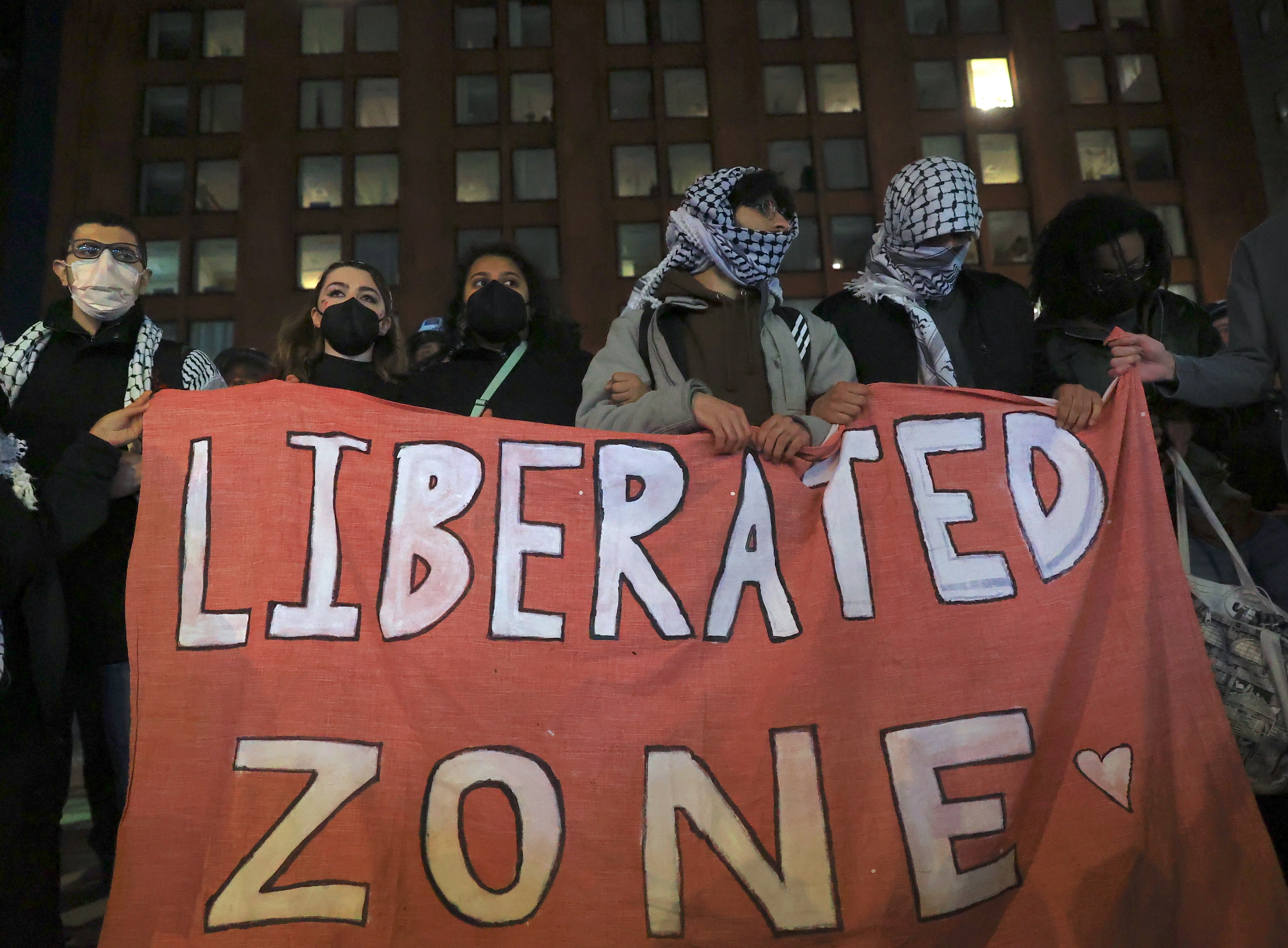
What the backlash to student protests over Gaza is really about

You need $500. How should you get it?

Food delivery fees have soared. How much of it goes to workers?

10 Heartwarming Reasons Why Muslims Adore The City Of Mecca
Whenever I am in Mecca or I see pictures and videos of the city of Mecca in Saudi Arabia, I start to get quite tearful. In fact, Mecca, specifically the Haram Mosque at the centre of that city holds a special place in the hearts of most of the 1.9 billion Muslims worldwide who today make up 24% of the current world’s population.
Each of them longs to visit Mecca, to pray in the Haram Mosque (known as Beit Allah ) or the House of God and to perform the religious pilgrimage.
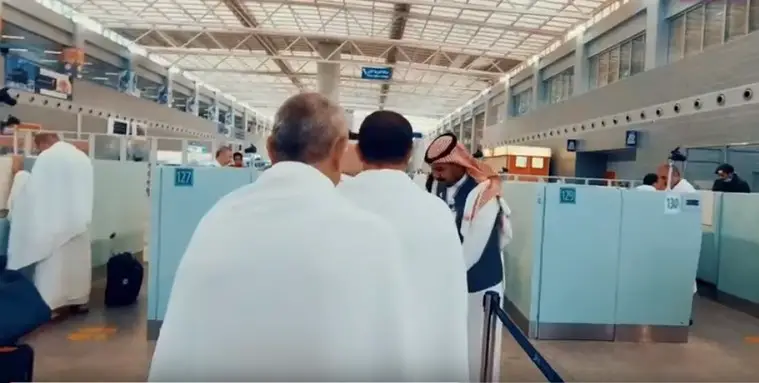
Each year, many Muslims (up to 2 million) do make that journey to Saudi Arabia having scrimped and scraped to save up money for many months even for years in order to do so. MFS
So, why do millions of Muslims feel a great love for the city of Mecca?
The following are the 10 heartwarming reasons why Muslims simply adore the city of Mecca.
- Birth Place of Mohammed (SAW) – The Prophet of Islam
- Focus for the 5 daily prayers
- The Haram Mosque- House of Allah, God (SWT)
- Kiss the Black Stone
- Hajj & Umrah Pilgrimages
- Drink Zam Zam
- The Quran was revealed in Mecca
- Allah Mentions Mecca in the Quran
- Sanctuary for All Muslims
- To Get Closer to Allah (God)
Mecca – Background
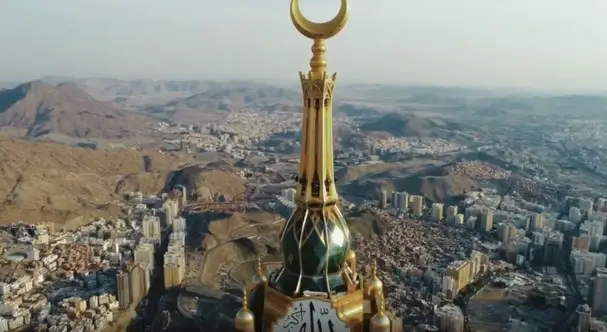
Mecca is an important city built on a hilly valley located 70 km inland from the city of Jeddah on the West coast of Saudi Arabia and next to the Red Sea. More than 2 million people live there but the population swells to more than double during the Hajj season pilgrimage which is in the 12th Islamic month of Duhul Al Hijah.
Mohammed (SAW) – the Prophet of Islam was born in that city in 570 CE. Allah (SWT) started to reveal the Holy Quran to him in Mecca when he was 40 years of age (610 CE) and continued until his death in 632 CE.
Mecca is the holiest city in Islam, with the Kaaba at the heart of the Haram Mosque complex. It is very busy and commercially prosperous. For centuries, it was ruled by generations of Mohammed’s (SAW) family and in 1925 it got conquered by the Bin Saud family.
Mecca today has expanded massively and now the modern infrastructure allows for the easy accommodation of the huge number of visitors who come there each year.
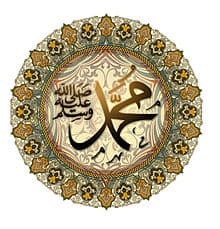
1. Birth Place of Mohammed & Prophet of Islam
The first reason why Muslims adore Mecca, in the main, because of the love they have for the Prophet of Islam, Mohammed (SAW).
Mohammed (SAW) was from Mecca called Abd al-Qasim Muhammad ibn ‘Abd Allah ibn ‘Abd al-Muttalib ibn Hashim and was born in 571. He died 62 years later. His mother was Amina Bint Wahab and his father, Ibn Abdullah Abu Talib who died 6 months before Mohammed (SAW) was born.
Mohammed (SAW) was a Prophet of God and the founder of the major monotheistic religion of Islam. People at that time called him Abu Qasim or Rasoul Allah which means Messenger of Allah (God).
His birth in 571 CE and the love for him that millions of Muslims worldwide feel is significant because during his life he preached a message of unity and oneness to Allah, God (SWT) and to the straight path of Islam leading from a state of ignorance into truth, from darkness into light.
This message of (Tawheed ) or oneness in the worship of Allah jarred with the beliefs of the Arabs living in the peninsula at that time who for generations were steeped in the world of idolatry and the mere satisfaction of their base desires.
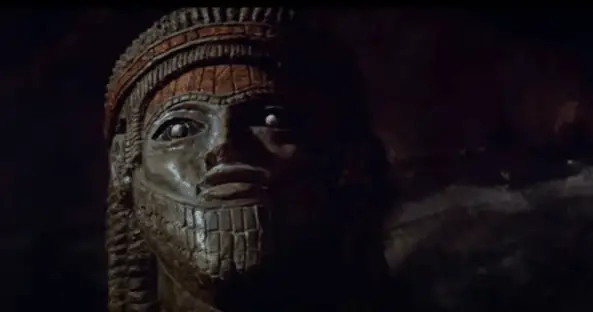
Many bowed, prayed and sacrificed to just about anything they fancied such as planets, ancestors, animals, water, fire and even trees believing that these objects contained special powers to grant them the stuff of life.
Others made up their own beliefs about the truth of things and the correct way to live. Others believed nothing at all and just lived as they pleased.
In that age, the Arab ( Kabilas ) tribes were ignorant, squabbling and divided. They not only disagreed on religious principles, but they also were fierce and proud, fighting over very minor things such as the property of animals and water. MFS
At the age of 40, Mohammed (SAW) started to communicate the Holy Quran piecemeal to the people as the verses were gradually revealed to him over time. MFS
In essence, the message was to worship Allah, God (SWT) alone, to follow the straight path and not to pray to created or inanimate objects with the expectation that they would bring any benefits or good.
Muslims love the city of Mecca because Prophet Mohammed (SAW) was born, lived, worked and preached there. Above all, it is due to the fact that Allah (SWT) sent Mohammed (SAW) as a Messenger, not just to the Arabs, but to the whole of humankind.

In the Holy Quran, Allah (SWT) states why he sent Mohammed (SAW) to humankind:
And We have not sent you, [O Muhammad], except as a mercy to the worlds. Chapter Al Anbyah (21), Verse 107
And with the mission:
Say (Oh Mohammed), “It is only revealed to me that your God is but one God; so will you be Muslims [in submission to Him]?” Chapter Al Anbyyah (21) Verse 108

The message was clear. It was to take the Meccans and all the future generations out of idolatry and have them understand that Allah (God) is the Absolute, the Almighty, the All-Knowing and Ruler of the entire universe, the One who created everything that exists.
This message is at the heart of Islam and a source of joy and contentment for millions of Muslims who accept it.
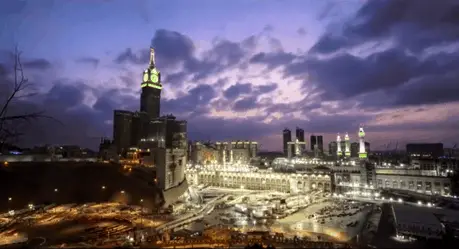
2. Mecca is the Focus for the 5 Daily Prayers in Islam
The second reason why 1.9 billion Muslims worldwide adore the city of Mecca is that they face the city 5 times daily for formal prayer (Salah).
Actually, wherever Muslims are in the world, they actually turn to face the Kaaba five times a day and NOT towards the city itself per se. The direction of prayer is called the Qibla and it is easy to work out if you are in the Haram Mosque or in the city itself.
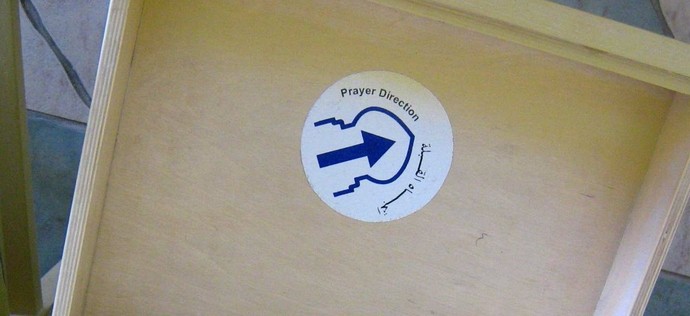
However, most Muslims are not blessed with that good fortune and instead have to use a map, an electronic compass or smartphone program to get the direction.
In the Blessed Quran Chapter Al Baqarah, verses 148-149, Allah (SWT) orders Prophet Mohammed (SAW) and Muslims to face Masjid Al Haram in Mecca for prayers.
So from wherever you go out [for prayer, O Muhammad] turn your face toward al- Masjid al-Haram, and indeed, it is the truth from your Lord. And Allah is not unaware of what you do. Chapter Al Baqarah, Verses 148-149
Standing in prayer to face the Kaaba 5 times a days does not mean that Muslims worship Mecca city, the Kabba , something on or in the Kaaba , nor any aspect of it. In fact, it is clear that they only worship Allah (SWT), the One the Merciful and Most Wise. MFS
The fives times a day salah , or prayer is a powerful act that unifies millions of Muslims each day on this planet in the worship of Allah (SWT), connecting each with one another in a physical act and set of strong beliefs and convictions.
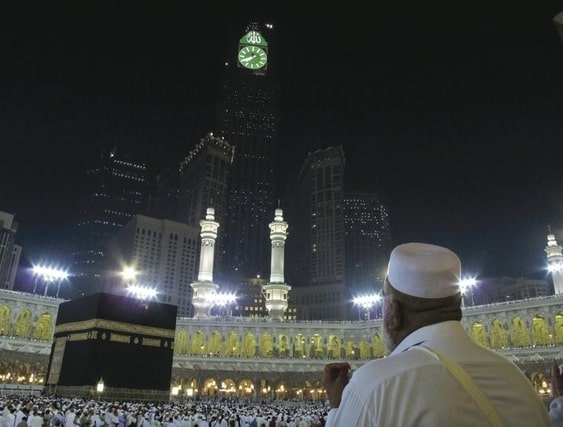
As the earth spins in space, it causes clock time differences. Since the schedule of prayer time is fixed for everyone wherever they are in the world but because of the time differences, the standing time for prayer will differ from country to country.
Muslims are praying the same prayers but at different times of the day and night in their own locations in what from, an individual perspective seems like a superwave of never-ending prayer sweeping over the world 24/7.
It is amazing to consider that at any time, day or night, someone, somewhere in the world is offering prayers and contemplating Allah (SWT) and His wonderful creation.

The First Qibla was Masjid Al Aqsa in Jerusalem
Imagine in the early days of Islam, Muslims did not face Mecca for the five daily prayers, rather to another Mosque in Jerusalem called Al Aqsa . Together with the Jews, Muslims living in Mecca would normally face the Al Aqsa mosque for their prayers.
This continued for more than 15 years during Prophet Mohammed’s (SAW) early years in Mecca preaching the message of the Holy Quran.
The change to the second direction of prayer Qibla occurred just under two years after Prophet Mohammed (SWT) and the companions’ famous migration (623/624 CE) to the old city of Yathrib , now called Madinah Al Munawara.
This how it happened.
One day in Madinah, whilst standing for noon prayers ( Al Duhur ) facing Al Aqsa Mosque in Jerusalem, Prophet Mohammed (SAW) received a revelation from Allah (SWT) commanding him and all Muslims to turn towards Masjid Al Haram in Mecca for the prayers.
‘We have certainly seen the turning of your face, [O Muhammad], toward the heaven, and We will surely turn you to a qiblah with which you will be pleased. So turn your face toward al-Masjid al-Haram . And wherever you [believers] are, turn your faces toward it [in prayer]. Indeed, those who have been given the Scripture well know that it is the truth from their Lord. And Allah is not unaware of what they do.
Chapter Al Baqarah, Verse 144 .
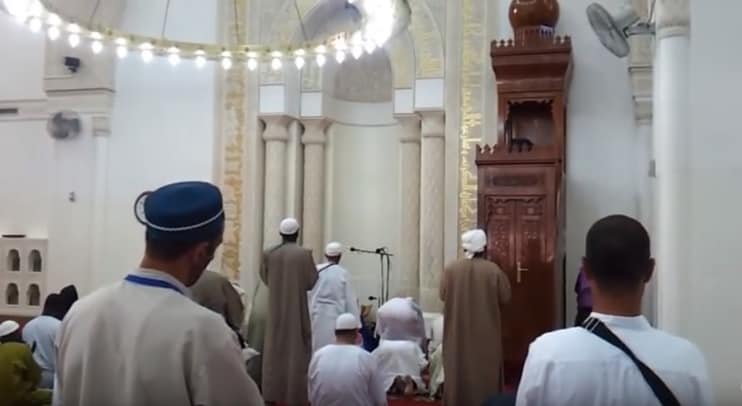
So, he did and we still do today. Ths famous act took place in a mosque which is still known today as the Masjid Al Qiblatain (The Mosque of the Two Prayer Directions) an ancient mosque in Madinah and a stone’s throw away from the Masjid Al Nabawi (The Prophet’s Holy Mosque).

Even until today, you can find two mihrabs there, a kind of semicircular niche in the interior mosque wall offering the direction of prayer and from which the Imam (priest) stands in front of the praying congregation. One mihrab points towards Masjid Al Aqsa and the other towards the Kaaba in Mecca.
Why did the Direction of Prayer Qibla change for Muslims?
In the Holy Quran, Allah (SWT) explains to Prophet Mohammed (SAW) the reason for changing the prayer direction.
And thus we have made you a just community that you will be witnesses over the people and the Messenger will be a witness over you. And We did not make the qiblah which you used to face except that We might make evident who would follow the Messenger from who would turn back on his heels Chapter Al Baqarah, Verse 143
In essence, it was a test of loyalty to know who was a true believer in Islam and who was not. It also showed who was loyal to Prophet Mohammed (SAW) and his teachings, who was not and even those who hypocritically pretended they were.
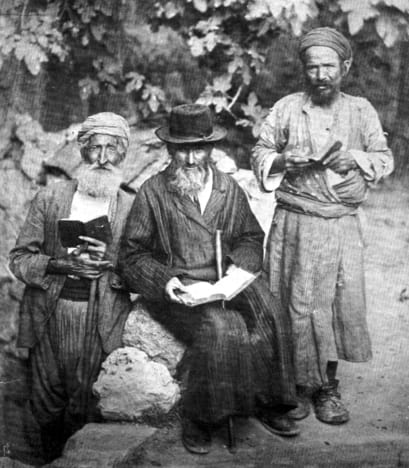
The new move enraged the Jews in Mecca at the time. They actively criticised the injunction, since they refused to convert to Islam. They continued in their claim that the one and only true city was Jerusalem and that their religion, Judaism, was the only religion of truth.
They argued that Prophet Mohammed (SWT) should ignore the Quranic revelations and instead convert himself and his followers to Judaism.
The change of Qibla to Masjid Al Haram in highlighted the importance of Mecca in history as a centre of Ibrahimic faith, finally disassociating Muslims from the Jews and giving them a singularly unique identity in Islam.
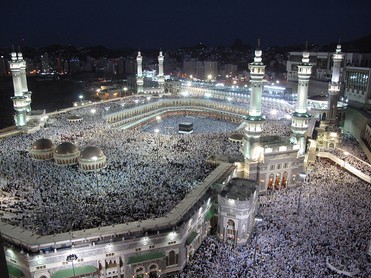
3. The Haram Mosque – House of Allah, God (SWT)
The third reason why Muslims adore Mecca is that they get the chance to visit and pray in Masjid Al Haram (Holy Mosque) or Haram Mosque .
The Grand Mosque in Mecca is the most amazing place for Muslims to visit. It is a huge, centrally located mosque right in the heart of the city of Mecca.
The Haram Mosque covers an area of 370,000 metres square and can hold up to 900,000 pilgrims. It also contains the pure waters of the Zam Zam well, Maqam Ibrahim , (a stone bearing Prophet Ibrahim’s footprint) and the two hills of Safa and Marwa .
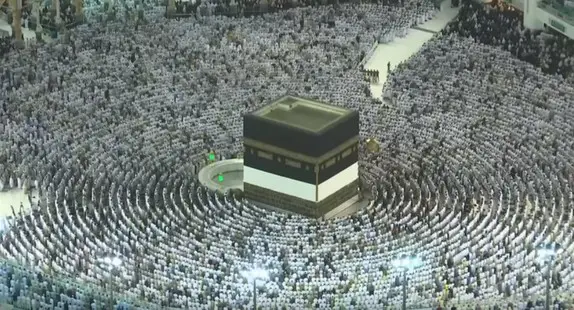
Muslims consider the Great Haram Mosque to be the holiest site in Islam. It is the destination for the annual event of Hajj and lesser pilgrimage called Umrah .
The mosque is open to pilgrims and visitors 24/7. In it, the five daily prayers are offered. Muslims conduct Umrah in its entirety in the mosque which involves circumambulating the Kaaba 7 times, drinking Zam Zam water and also walking between mounts Safa and Marwa 7 times.
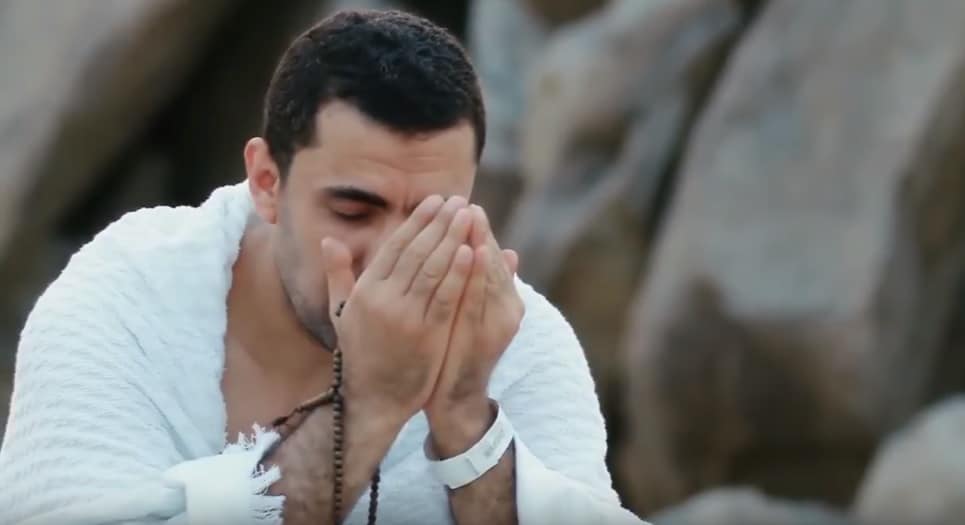
Pilgrims can enter any time day or night, prayer, sit, chat, sleep and simply hang out to enjoy the spectacular architecture or read the Holy Quran and contemplate the Almighty Allah (SWT).
It is truly an amazing place to visit and it is awesome to see so many nationalities, ages and backgrounds all together in one place. When Muslims think of Mecca, it is not the city rather the Haram Mosque which comes to mind and which they cherish in their hearts forever.
4. The Kaaba (Cube)
The fourth reason why Muslims love Mecca is to be at the Kaaba which is a cube-like structure located at the centre of the Haram Mosque.
It is exciting to see Kaaba because it is unique. More importantly, Muslims know that it determines the direction of the formal prayers in Islam for Muslims anywhere in the world. Five times a day they stand up to pray facing the Kaaba from wherever they are in any part of the world.
Also, it is a big part of the Hajj and Umrah rituals. Muslims also walk around the ‘ Kaaba ’ seven times. This in Arabic is called ‘ Tawaf’ or circumambulation. They move together in one circular direction to symbolize their belief in and worship of the one true God, Allah (SWT) .
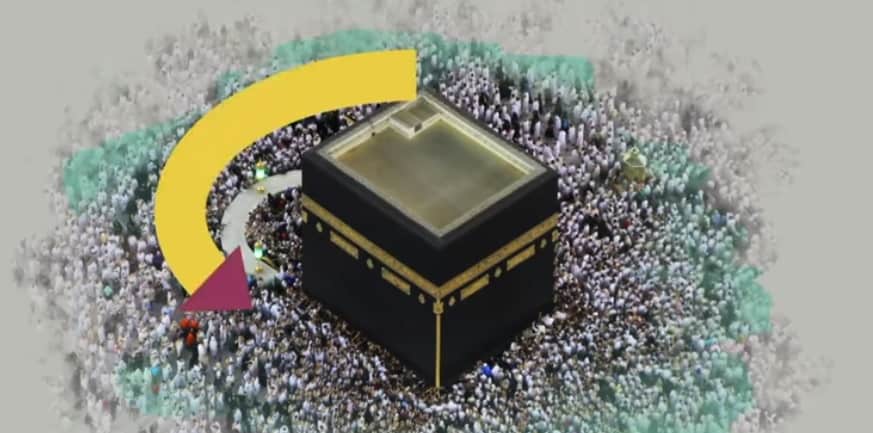
Walking (circumambulating) around the ‘ Kaaba ‘ is not about worshipping it, rather that Muslims understand it to be only a ritual, an act designed to unite Muslims in the worship of the one true God, Allah (SWT).

5. Kiss the Black Stone (Al Hajr Aswad)
The fifth reason Muslims love Mecca is the chance it affords them to kiss the Black Stone ( Al Hajr Aswad) .
Installed in the Eastern corner of the ’ Kaaba ’ there is a black stone called the Black Stone ( Al-Ḥajar al-‘Aswad ). Muslims believe that it dates back to the time before Adam and Eve.
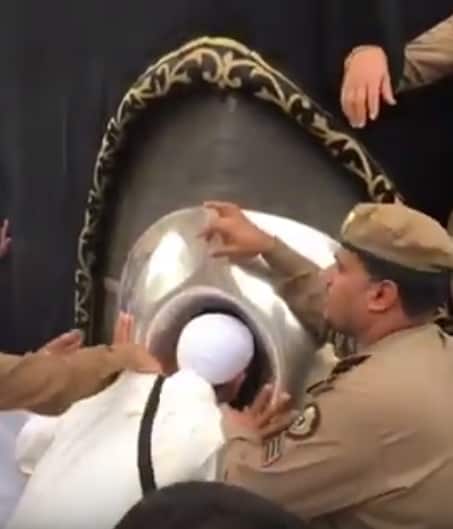
Prophet Mohammed (SAW) himself set it into the wall with his own hands in 605 CE. Since then it was smashed into 7 or 8 smaller pieces. Today, each fragment is displayed embedded in a cement base in a silver frame which is about 20 centimetres in circumference on the Kaaba ’s East corner.
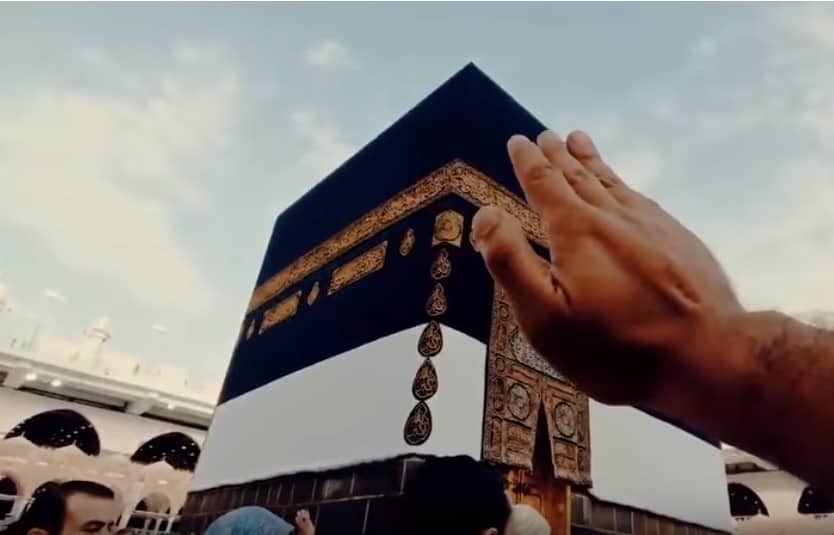
On visiting the mosque, every Muslim yearns to kiss or touch the Al Hajr Aswad , but due to the heavy jostling and clamouring most are unable to. They content themselves by simply pointing towards it as they encircle the Kaaba .
Ignorant of its colourful and eventful history, most understand that the Black Stone really does not have any special powers nor, in fact, do Muslims even try to worship it.
They see it simply as it is …..a rock with a special place in Islamic history and tradition and because of its close association to the beloved Prophet Mohammed (SAW).
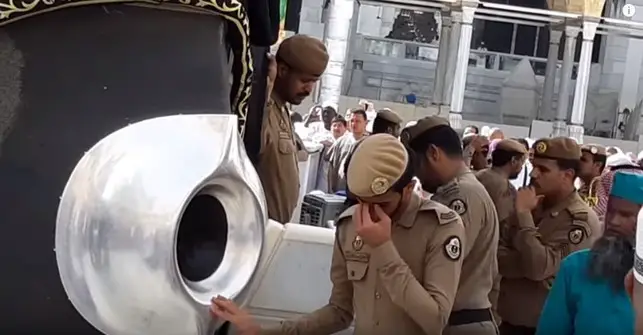
According to Hadith scriptures, Omar, an illustrious companion of Prophet Mohammed (SAW), the Messenger of Allah exclaimed to the Black Stone:
‘ I know that you are a stone and can neither benefit nor harm. Had I not seen the Prophet (pbuh) touching (and kissing) you, I would never have touched (and kissed) you .’ `Umar ibn Al-Khattāb, Caliph 583 CE- 644 CE
During the time of Prophet Muhammad (SAW), people stood on top of the ‘ Kaaba ‘ to call for prayer. If back then, Muslims had regarded the ‘Kaaba ’ or the Black Stone as a holy object of worship, they would not have stood and walked over the very same idol which they supposedly adored.
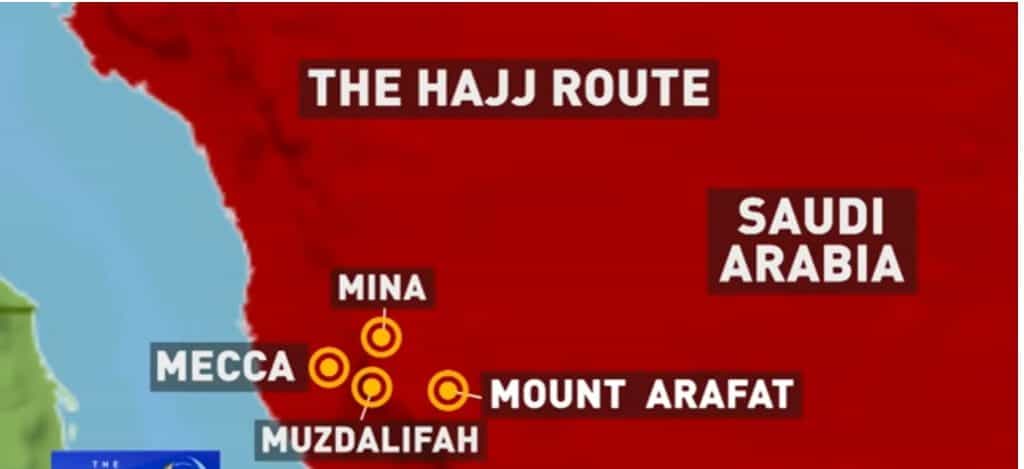
6. Hajj and Umrah Pilgrimages
The sixth important reason why Muslims love Mecca is the chance it affords them to make the Hajj or Umrah pilgrimages.
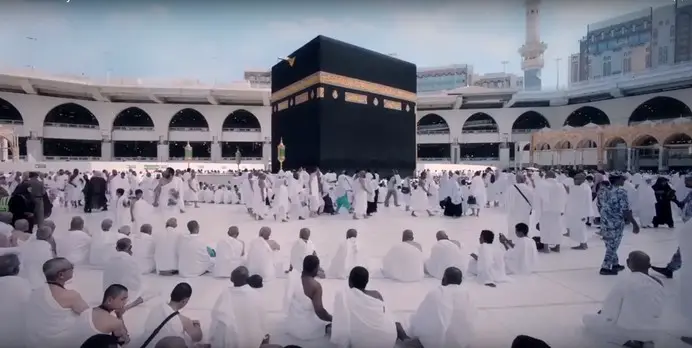
During the last Islamic month of Dhuhul Al Hija , more than two million pilgrims start the five-day Hajj event converging at the Kaaba dressed in Ihram, the two simple white towels for men and loose, light clothing for women.
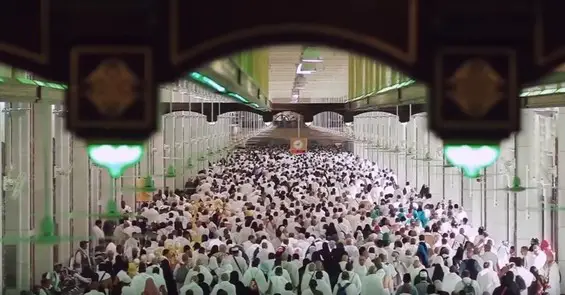
They encircle the Kaaba seven times, drink Zam Zam water, move seven times between Mounts Safa and Marwa before leaving the mosque and trekking out onto the plains of Mina and Muzdalafa a few kilometres away.
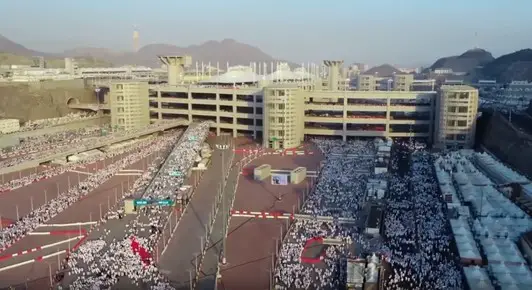
The Hajj experience ends with a visit to Mount Arafat and at Rami Al Jamaraat with the ritual stoning of the devil.
For everyone, especially the women and the elderly, it is a physically and emotionally demanding event, but which every Muslim embraces wholeheartedly because of the great religious and social benefits it brings.
Spiritually, it is a chance for self-renewal. All sins are erased and pilgrims are left as pure as a newborn baby. MFS
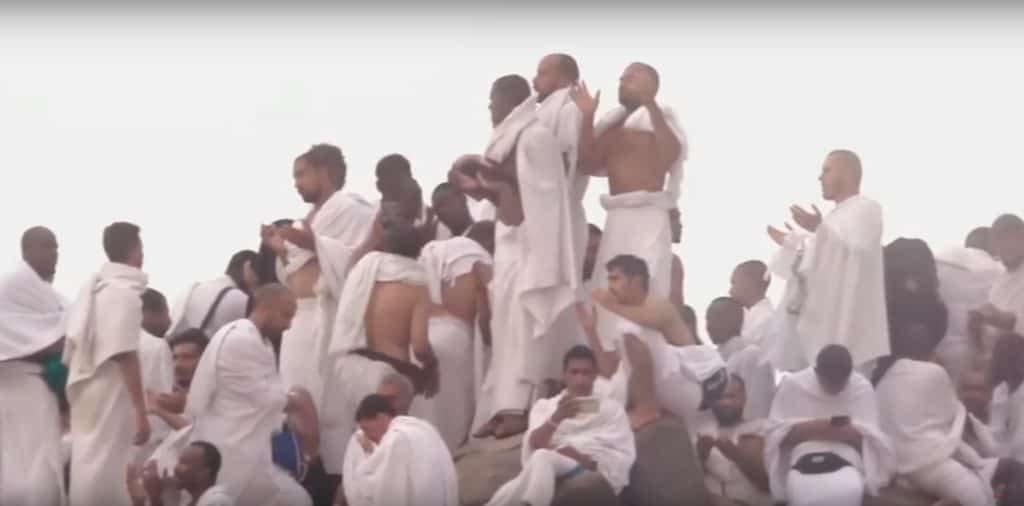
Doing the Hajj satisfies one of the five main (obligatory) pillars of Islam. It is seen as a kind of Jihad (especially for women) but one in which there is no fighting. It is Jihad with the self ( Al Nafs ).
Also, the Hajj rituals focus on the love and remembrance of Allah ( SWT ). It teaches Muslims patience, tolerance for other nationalities and unites them in Islam.
Muslims know that there are untold benefits to making Hajj and for this reason too, they love the city of Mecca.
On the other hand, Umrah is known as the lesser pilgrimage that can be done in just a few hours. It starts when the pilgrim does a ritual ablution ( wudu ), dresses in Ihram and makes the vocal intention to perform it.
Like in Hajj , after making intention and dressing, each pilgrim starts to audibly chant:
‘ La baik Allah humma la Baik. La baik Allah shareeka alla al baik ’’ .
This means: O h, Allah we come to you. We come to you and you alone we worship .’
Then, in a state of reverence, pilgrims enter the Haram Mosqu e, make tawaf around the Kaaba 7 times, drink Zam Zam, move 7 times between Mounts Safa Mounts and Marawa and finally they trim their hair.
These are the rites of Umrah that the majority of Muslims visiting Mecca will undertake and a reason why they yearn to be there.

7. Drink Zam Zam Water
The seventh reason why Muslims adore Mecca is that it gives them the chance to drink the blessed Zam Zam water.
Zam Zam is pristine, miraculously clean well water that is extracted from the Zam Zam well. The well lies 21m away from the East side of the Kaaba some 31 metres under the ground. Zam Zam water is freely available to drink throughout the Haram Mosque area.
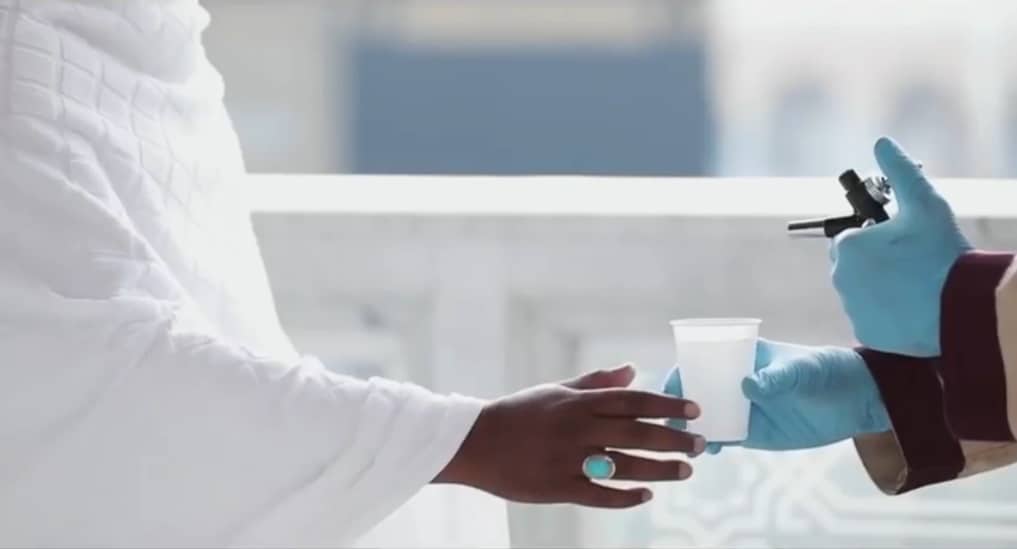
Muslims believe that Zam Zam was divinely created when long before the Kabba was constructed, the magnificent Angel Jibreel (Gabriel) swiped the earth of the barren desert valley leading to Mecca with his huge wing causing pure Zam Zam water to appear.
They also believe that it has extraordinary health benefits and that it is superior to tap water because it is enriched with health-giving minerals that satisfy hunger.
Prophet Mohammed (SAW) said of Zam Zam,
‘The water of Zam Zam is for whatever it is drunk fo r.’ Ibn Maajah, 3062
Zam Zam water not only satiates the thirst, but it also brings about health, relieves sickness and eliminates diseases. If you drink it to fulfil a hope or desire then, this wish will be fulfilled.
Zam Zam water will work for whatever you intend it to do by the will and power of Allah (SWT). MFS
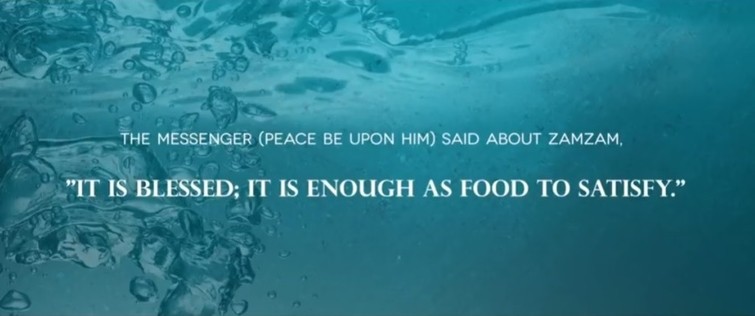
There are a number of testimonies of individuals who have lived on Zam Zam water for 40 days in a row and remained healthy and well.
Also, there are numerous stories and testimonies by individuals claiming that by drinking or using Zam Zam water they were able to cure serious diseases, restore health and fix psychological issues.
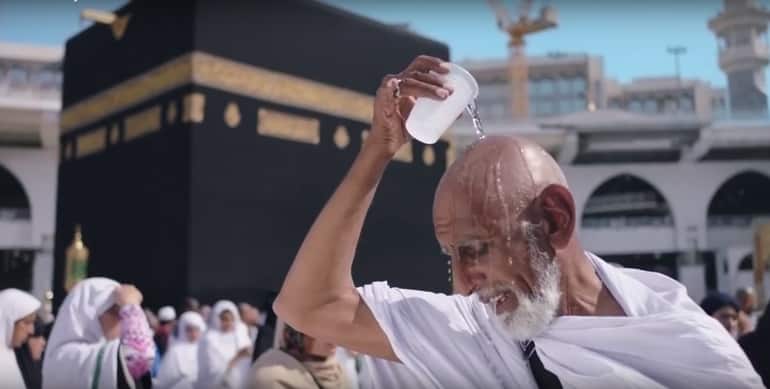
The Saudi government does not allow Zam Zam water to be officially exported. However, each year millions of pilgrims visitors carry personal quantities of 5 or 10 litres of Zam Zam water back to their home countries.
They can take 5 litres free of charge on some airlines but must pay for additional amounts or else include it as part of their check-in luggage.

Back home, the newly arrived Zam Zam water is greeted with great excitement by house guests and friends. Before sipping it, they pray over the water and treat it with reverence and great respect.
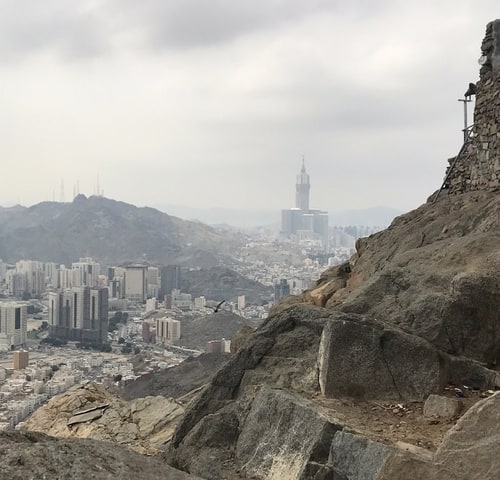
8. The Quran Was Revealed In Mecca
The eighth reason why Muslims adore Mecca is that the Holy Quran was revealed there. This amazing book believed to be authored by Allah, God ( SWT ), and that was communicated in stages to Prophet Mohammed (SAW) has 115 divine chapters.
86 of these were revealed to Prophet Mohammed (SAW) when he was in Mecca. 28 were revealed to him in the city of Yathrib , now called Madinah Al Munawara ( The City of Light ).
Initially, the revelations stunned and terrified Prophet Mohammed ( SAW ). The first took place in a cave called Hira , on Mountain Jabal Al Nour , facing Mina, near Mecca and in which Prophet Mohammed (SAW) would often spend his days in retreat.
This was in 610 CE, on the night of the 17th of Ramadan. Mohammed was then 40 years of age.
Prophet Mohammed ( SAW ) would stay for months in his cave in the worship of Allah. He sat on a rocky platform spending hours thinking about Allah ( SWT ) and admiring the creation.
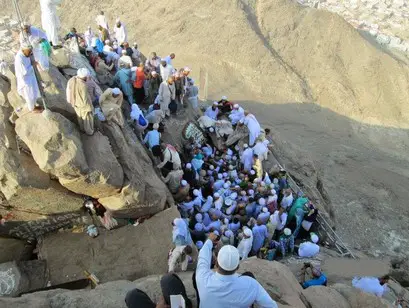
The facts are that while in the cave (big enough to hold three people) and in contemplation, the mighty Angel Jibreel ( Gabriel ) and commanded him to recite the very first lines of the Holy Quran.
‘Read …..in the name of your Lord who created Read ….and your Lord is the most Generous. Who taught by the pen Taught man that which he knew not. ‘ Chapter Iqra Verses 1-4
Prophet Mohammed (SAW) was terrified and since he was also illiterate replied to the angel, ‘’ I cannot read .’ Angel Jibreel grabbed him strongly and commanded him to read again.
After the encounter, Prophet Mohammed ( SAW ) ran home to his wife Khadijah terrified and alarmed not knowing what to make of the experience.
He was so freaked out that he asked his wife Khadijah to cover him. She later took him to her cousin, Waraqah ibn Nawfal who was well-read and wise. He convinced the Prophet Mohammed ( SAW ) that the revelations were quite real and that he (Prophet Mohammed SAW ) was indeed a Prophet of Allah ( God ).
In the accounts of Prophet Mohammed’s life, the authors Tabari and Ibn Ishaq detail how following the first revelation, Prophet Mohammed (SAW) told Zubayr.
‘ When I was halfway up the mountain, I heard a voice from above saying “O Mohammed! you are the Prophet of Allah and I am Jibreel .”
I lifted my head towards the voice to find out who was speaking. Then Jibreel in the shape of a normal man with feet spanning the horizon said,
“O, Mohammed! you are the Prophet of Allah and I am Jibreel.” I stood staring at him not making a move, then I looked away from him. But, where ever I laid my eyes in the sky in whatever area of the sky I fixed my vision, I saw him as had seen him before.’
Prophet Mohammed ( SAW ) received his next revelation three years later in 613 CE. He continued receiving divine revelations for a further 23 years until all 114 chapters were finally completed.
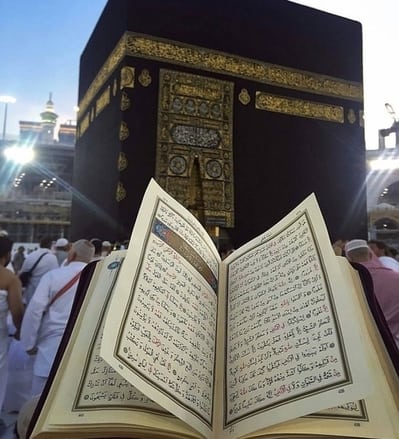
8. The City Of Mecca Is Specifically Mentioned In The Holy Quran
The eighth reason why Muslims absolutely adore Mecca is that the city is mentioned so many times in the Holy Quran.
Many people claim that the name of Mecca only appears twice in the Holy Book, but that is not true.
The reality is that Mecca is mentioned 8 times as a direct reference and referred to indirectly more than 10 times.
Below is a list of chapters in which Allah (SWT) directly mentions the wonderful city and some verses in English.

Why is the city of Mecca mentioned in the Quran?
In the verses, many references are made to Mecca.
First, Allah (SWT). blessed the city. MFS
Second, Allah (SWT) also refers to Prophet Ibrahim (Abraham) invoking Allah to keep Mecca safe and free of idolatry.
Third, in the Quranic verses, Allah ( SWT ) addresses the people of Mecca invoking them to believe in his book, the hereafter, and warning them of the veracity of the hellfire.
Fourth, Allah ( SWT ) swears an oath to the city of Mecca and affirms that it is a safe, secure, and blessed city.
9. Mecca is a Sanctuary for All Muslims
The ninth reason why Muslims cherish Mecca is that it is considered to be a place of sanctuary for them.
This means that millions of Muslims consider it a safe, welcoming city where life, human rights but above all the freedom of religious expression are divinely protected.
Allah made the Haram Mosque a place for Muslims to gather in numbers for the worship of Allah (SWT) and in complete safety
And [mention] when We made the House a place of return for the people and [a place of] security. And take, Chapter Al Baqarah, Verse 125
In the Arabic language ‘ Haram ’ means something banned or forbidden. It is shown in the fact that in the Masjid Al Haram in Mecca all forms of violence, killing, bad behaviour, lewdness, uprooting trees and the like are forbidden.
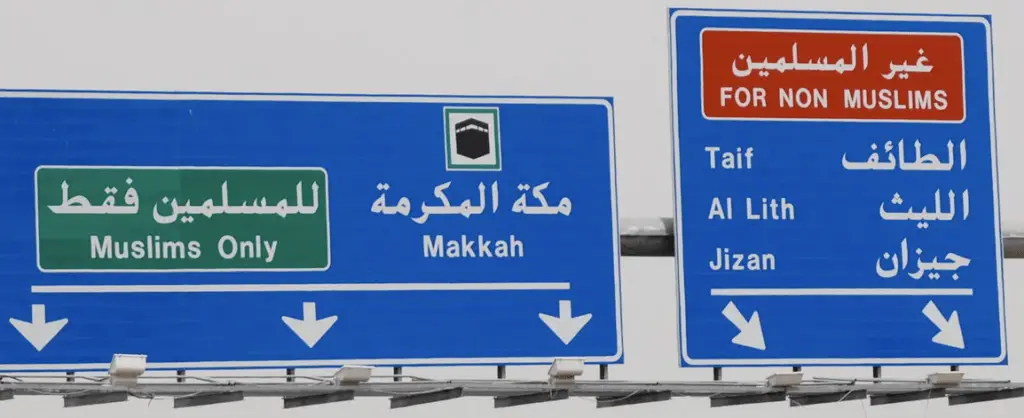
Also, all non-Muslims are banned from entering the city. This includes the outer boundary of the city as well as the open areas used for Hajj , the Arafat plains, the Haram Mosque itself, Mounts Safa and Marwa .
In Mecca, every single person you meet is Muslim. That is not true of the rest of Saudi Arabia where other people of other religions are plentiful.
The reason is given by Allah ( SWT ) in the Quran:
O you who have believed, indeed the polytheists are unclean , so let them not approach al-Masjid al-Haram after this, their [final] year. And if you fear privation, Allah will enrich you from His bounty if He wills. Indeed, Allah is Knowing and Wise. (9:28) Chapter Al Tawbah Verse 28.
The fact that non-Muslims (polytheists) are considered ‘ unclean ’ and therefore unfit to stand at the holy sites in Mecca further highlights it as a place of peace for Muslims, of refuge and the preserve of safety and sanctuary.
In any case, on any day Mecca is usually always very crowded. Open access to the city by non-Muslims visiting for tourist purposes or out of curiosity would further exacerbate the overcrowding and add negatively to the congestion and perhaps create newer conflicts of a different nature.
10. To Get Closer to Allah (God)
The tenth and most important reason why Muslims adore Mecca since the Masjid Al-Haram mosque is considered to be Al Beit Allah ( The House of Allah) .
This is not because Muslims believe that Allah (SWT) somehow lives in the mosque, in some human or animate form. Rather it is that Allah ( SWT ) created everything, all the worlds the heavens, and ultimately is the owner of everything including the mosque itself.
It is also true that the Haram Mosque with the Kaaba was, according to the Holy Quran, the first place established on earth for the worship of the one true God, Allah ( SWT ):
Indeed, the first House [of worship] established for mankind was that at Makkah – blessed and a guidance for the worlds. (3:96) Chapter Al Imran Verse 96.
Muslims perform all the Islamic rituals of washing ( wudu ) obligatory prayers, ( salah) reading the Holy Quran, Hajj and Umrah pilgrimages, avoiding Haram (forbidden) things, doing ethical acts, following Islamic laws, emulating the ways and behaviour of Prophet Mohammed (SWT) and remembrance ( dhikr ) of Allah (SWT) all in order to get closer to Allah, God (SWT) and to win his favour in this life and the next.
In their hearts, Muslims wholeheartedly believe there is no better place to be than in the Beit Allah , the House of Allah in Mecca.
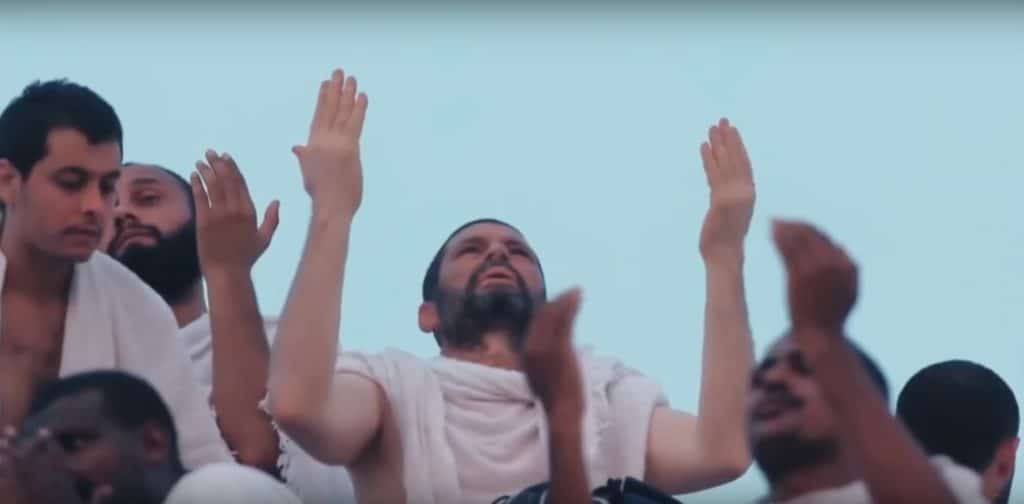
Back in their home countries and towns, the hearts of Muslims groan and ache with the desire to be in Mecca, to visit Beit Allah and to perform these powerful acts of worship.
For the majority, it is a once in a lifetime achievement. I can see it in the faces of the pilgrims whenever I am at the Haram Mosque.
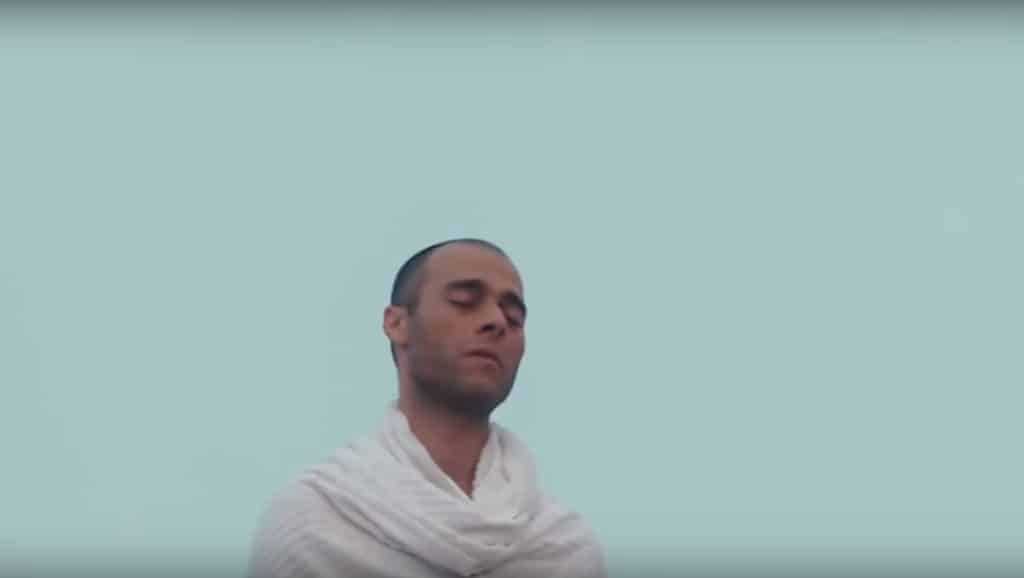
I witness the love, the devotion, the tears, the passion and fervent belief in Allah (SWT) that they display.
I watch them as they circumambulate the Kaaba and see their amazement, wonder, and intense devotion in the belief that such religious acts will win favor with Allah ( SWT ) and bring good to them in this life as well as ultimate happiness in the life hereafter.
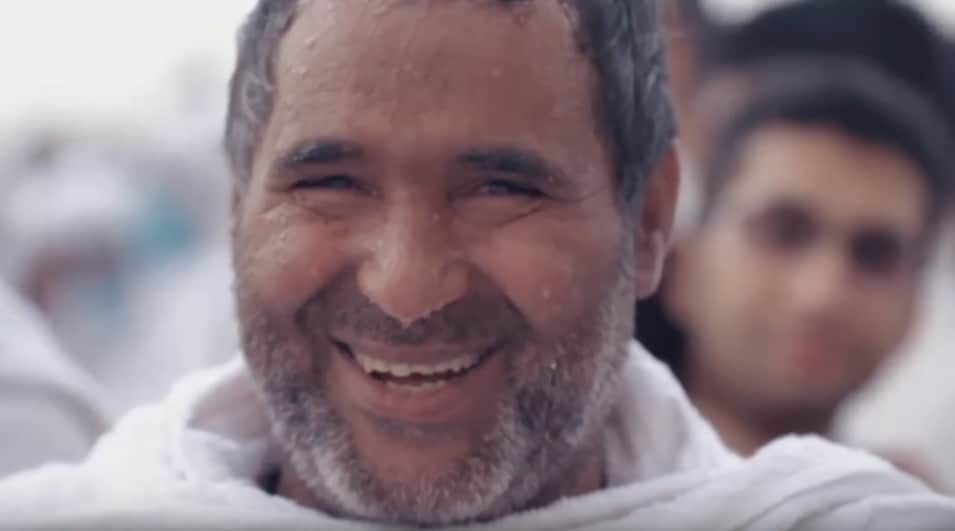
Salam Allekum! Hi there! Thanks for reading. Contact the Editor Mohammed Francis directly at [email protected] with any questions or queries.
Mohammed Francis
I am a UK national, a college teacher, father of 3, writer and blogger.
Recent Posts
Can Muslim Women Wear A Towel As Head Cover (Hijab)?
One day, a Muslim woman wrote me an email to ask if Islam permits women to wear a towel on their heads as an Islamic head cover (Hijab). She explained that she was going on vacation with her...
5 Reasons Women Should Take A Guardian (Mahram) To The Pilgrimages Hajj or Umrah
Today, Saudi Arabia allows Muslim women to do an Islamic pilgrimage (Hajj / Umrah) without a chaperone (Mahram). However, for centuries, it was not possible. A male relative had to accompany...

- Election 2024
- Entertainment
- Newsletters
- Photography
- Personal Finance
- AP Investigations
- AP Buyline Personal Finance
- AP Buyline Shopping
- Press Releases
- Israel-Hamas War
- Russia-Ukraine War
- Global elections
- Asia Pacific
- Latin America
- Middle East
- Election Results
- Delegate Tracker
- AP & Elections
- Auto Racing
- 2024 Paris Olympic Games
- Movie reviews
- Book reviews
- Personal finance
- Financial Markets
- Business Highlights
- Financial wellness
- Artificial Intelligence
- Social Media
What is the Hajj pilgrimage and what does it mean for Muslims?
Water mist is sprayed on Muslim pilgrims as they walk towards the rocky hill known as the Mountain of Mercy, on the Plain of Arafat, during the annual Hajj pilgrimage, near the holy city of Mecca, Saudi Arabia, Tuesday, June 27, 2023. Around two million pilgrims are converging on Saudi Arabia’s holy city of Mecca for the largest Hajj since the coronavirus pandemic severely curtailed access to one of Islam’s five pillars. (AP Photo/Amr Nabil)
Pakistani pilgrim Mubarak Ali Shah leads pilgrims as they pray outside the Grand Mosque, during the annual hajj pilgrimage, in Mecca, Saudi Arabia, Saturday, June 24, 2023. Muslim pilgrims are converging on Saudi Arabia’s holy city of Mecca for the largest hajj since the coronavirus pandemic severely curtailed access to one of Islam’s five pillars. (AP Photo/Amr Nabil)
Muslim pilgrims pray around the Kaaba, the cubic building at the Grand Mosque, during the annual Hajj pilgrimage in Mecca, Saudi Arabia, Sunday, June 25, 2023. Muslim pilgrims are converging on Saudi Arabia’s holy city of Mecca for the largest Hajj since the coronavirus pandemic severely curtailed access to one of Islam’s five pillars. (AP Photo/Amr Nabil)
Thousands of Muslim pilgrims hold umbrellas as they circumambulate around the Kaaba, the cubic building at the Grand Mosque, during the annual hajj pilgrimage, in Mecca, Saudi Arabia, Sunday, June 25, 2023. Muslim pilgrims are converging on Saudi Arabia’s holy city of Mecca for the largest Hajj since the coronavirus pandemic severely curtailed access to one of Islam’s five pillars. (AP Photo/Amr Nabil)
Muslim pilgrims pray in front of the Kaaba, the cubic building at the Grand Mosque, during the annual hajj pilgrimage, in Mecca, Saudi Arabia, Sunday, June 25, 2023. Muslim pilgrims are converging on Saudi Arabia’s holy city of Mecca for the largest hajj since the coronavirus pandemic severely curtailed access to one of Islam’s five pillars. (AP Photo/Amr Nabil)
Muslim pilgrims circumambulate around the Kaaba, the cubic structure at the Grand Mosque, during the annual hajj pilgrimage, in Mecca, Saudi Arabia, Saturday, June 24, 2023. Muslim pilgrims are converging on Saudi Arabia’s holy city of Mecca for the largest hajj since the coronavirus pandemic severely curtailed access to one of Islam’s five pillars. (AP Photo/Amr Nabil)
Pilgrims walk beside pigeons outside the Grand Mosque, during the annual hajj pilgrimage, in Mecca, Saudi Arabia, Saturday, June 24, 2023. Muslim pilgrims are converging on Saudi Arabia’s holy city of Mecca for the largest hajj since the coronavirus pandemic severely curtailed access to one of Islam’s five pillars. (AP Photo/Amr Nabil)
A general view of the Grand Mosque is seen through the fence of the Clock Tower during the Hajj pilgrimage in the Muslim holy city of Mecca, Saudi Arabia, Sunday, June 25, 2023. (AP Photo/Amr Nabil)
Thousands of Muslim pilgrims hold umbrellas as they circumambulate around the Kaaba, the cubic building at the Grand Mosque, during the annual Hajj pilgrimage, in Mecca, Saudi Arabia, Sunday, June 25, 2023. Muslim pilgrims are converging on Saudi Arabia’s holy city of Mecca for the largest Hajj since the coronavirus pandemic severely curtailed access to one of Islam’s five pillars. (AP Photo/Amr Nabil)
Policemen stand alert at the Mina tent camp a head of the Hajj, in Mecca, Saudi Arabia, Sunday, June 25, 2023. Muslim pilgrims are converging on Saudi Arabia’s holy city of Mecca for the largest hajj since the coronavirus pandemic severely curtailed access to one of Islam’s five pillars. (AP Photo/Amr Nabil)
Tents for Muslim pilgrims fill the Mina tent camp a head of the Hajj, in Mecca, Saudi Arabia, Sunday, June 25, 2023. Muslim pilgrims are converging on Saudi Arabia’s holy city of Mecca for the largest hajj since the coronavirus pandemic severely curtailed access to one of Islam’s five pillars. (AP Photo/Amr Nabil)
Water mist is sprayed on Muslim pilgrims as they pray on the rocky hill known as the Mountain of Mercy, on the Plain of Arafat, during the annual Hajj pilgrimage, near the holy city of Mecca, Saudi Arabia, Tuesday, June 27, 2023. Around two million pilgrims are converging on Saudi Arabia’s holy city of Mecca for the largest Hajj since the coronavirus pandemic severely curtailed access to one of Islam’s five pillars. (AP Photo/Amr Nabil)
Muslim pilgrims pray outside Namira Mosque in Arafat, on the second day of the annual Hajj pilgrimage, near the holy city of Mecca, Saudi Arabia, Tuesday, June 27, 2023. Around two million pilgrims are converging on Saudi Arabia’s holy city of Mecca for the largest Hajj since the coronavirus pandemic severely curtailed access to one of Islam’s five pillars. (AP Photo/Amr Nabil)
Muslim pilgrims walk to pray outside Namira Mosque in Arafat, on the second day of the annual Hajj pilgrimage, near the holy city of Mecca, Saudi Arabia, Tuesday, June 27, 2023. Around two million pilgrims are converging on Saudi Arabia’s holy city of Mecca for the largest Hajj since the coronavirus pandemic severely curtailed access to one of Islam’s five pillars. (AP Photo/Amr Nabil)
- Copy Link copied
MECCA, Saudi Arabia (AP) — Over 1.8 million Muslims are taking part in this week’s Hajj pilgrimage to the holy city of Mecca in Saudi Arabia, as one of the world’s largest religious gatherings returns to capacity following years of coronavirus restrictions.
The Hajj is one of the five pillars of Islam, and all Muslims are required to undertake it at least once in their lives if they are physically and financially able to do so. For the pilgrims , it is a profound spiritual experience that wipes away sins, brings them closer to God and highlights Muslim unity.
Pilgrims this week braved temperatures in excess of 45 degrees Celsius (113 degrees Fahrenheit) to perform their rituals in the open air.
For the Saudi royal family, which captured Mecca in the 1920s, organizing the pilgrimage is a major source of pride and legitimacy. Authorities have invested billions of dollars in modern infrastructure, but the Hajj has occasionally been marred by tragedy, as in 2015, when over 2,400 pilgrims died in a stampede .
Saudi authorities had expected some 2 million pilgrims, but official figures released Tuesday put attendance at around 1.8 million, considerably fewer than the nearly 2.5 million who came in 2019. The cost of the pilgrimage, combined with widespread economic woes, may have been a factor .
Here’s a look at the pilgrimage and its meaning.
WHAT IS THE HISTORY OF THE HAJJ PILGRIMAGE IN ISLAM?
The pilgrimage draws Muslims from around the world to Mecca, in Saudi Arabia, where they walk in the footsteps of the Prophet Muhammad and retrace the journey of Ibrahim and Ismail, or Abraham and Ishmael as they are known in the Christian and Jewish traditions.
As related in the Quran, Ibrahim is called upon to sacrifice his son Ismail as a test of faith, but God stays his hand at the last moment. Ibrahim and Ismail later are said to have built the Kaaba together. In the Christian and Jewish traditions, Abraham nearly sacrifices his other son, Isaac, on Mount Moriah, which is associated with a major holy site in Jerusalem.
The Kaaba was a center for polytheistic worship among pagan Arabs until the arrival of Islam in the 7th century, when the Prophet Muhammad consecrated the site and inaugurated the Hajj.
Muslims do not worship the Kaaba, a cube-shaped structure covered in a black, gold-embroidered cloth, but view it as their most sacred place and a powerful symbol of unity and monotheism. No matter where they are in the world, Muslims face toward the Kaaba during their daily prayers.
The Hajj has been held every year since the time of the prophet, even through wars, plagues and other turmoil.
In the Middle Ages, Muslim rulers organized massive caravans with armed escorts that would depart from Cairo, Damascus and other cities. It was an arduous journey through deserts where Bedouin tribes carried out raids and demanded tribute. A notorious Bedouin raid in 1757 wiped out an entire Hajj caravan, killing thousands of pilgrims.
In 2020, amid worldwide coronavirus lockdowns, Saudi Arabia limited the pilgrimage to a few thousand citizens and local residents. This is the first year it is being held without COVID restrictions.
HOW DO MUSLIMS PREPARE FOR THE HAJJ?
Some pilgrims spend their whole lives saving up for the journey or wait years before getting a permit, which Saudi authorities distribute to countries based on a quota system. Travel agents offer packages catering to all income levels, and charities assist needy pilgrims.
Pilgrims begin by entering a state of spiritual purity known as “ihram.” Women forgo makeup and perfume and cover their hair, while men change into seamless terrycloth robes. The garments cannot contain any stitching, a rule intended to promote unity among rich and poor.
Pilgrims are forbidden from cutting their hair, trimming their nails or engaging in sexual intercourse while in the state of ihram. They are not supposed to argue or fight, but the heat, crowds and difficulty of the journey inevitably test people’s patience.
Many Muslims visit Medina, where the Prophet Muhammad is buried and where he built the first mosque, before heading to Mecca.
WHAT HAPPENS DURING THE HAJJ?
The Hajj begins with Muslims circling the Kaaba in Mecca counter-clockwise seven times while reciting prayers. Then they walk between two hills in a reenactment of Hagar’s search for water for her son, Ismail, a story that occurs in different forms in Muslim, Christian and Jewish traditions.
All of this takes place inside Mecca’s Grand Mosque — the world’s largest — which encompasses the Kaaba and the two hills.
On Tuesday, pilgrims headed to Mount Arafat, some 20 kilometers (12 miles) east of Mecca, where the Prophet Muhammad delivered his final sermon. There, they stood in prayer throughout the day asking God for forgiveness of their sins in what many view as the spiritual high point of the pilgrimage .
Around sunset, pilgrims walked or took buses to an area called Muzdalifa, 9 kilometers (5.5 miles) west of Arafat. They picked up pebbles to use in a symbolic stoning of the devil in the valley of Mina, where Muslims believe Ibrahim was tempted to ignore God’s command to sacrifice his son. The pilgrims stay for several nights in Mina in one of the largest tent camps in the world.
The pilgrimage ends with a final circling of the Kaaba and further casting of stones at Mina. Men often shave their heads and women clip a lock of hair, signaling renewal. Many will assume the title of “hajj” or “hajja” — a great honor, particularly in more traditional communities. Some paint murals on their homes with images of airplanes, ships and the Kaaba to commemorate the journey.
The final days of Hajj coincide with Eid al-Adha, or the festival of sacrifice , a joyous occasion celebrated by Muslims around the world to commemorate Ibrahim’s test of faith. During the three-day Eid, Muslims slaughter livestock and distribute the meat to the poor.
Associated Press religion coverage receives support through the AP’s collaboration with The Conversation US, with funding from Lilly Endowment Inc. The AP is solely responsible for this content.
- Table of Contents
- Book Reviews
- About the Book
- About the Author
- Our Ideal Reader
- Blog Contents
The Significance of Mecca
Mecca is the original English translation of the Arabic. Historically, the city has also been called Becca.
According to Islamic tradition, the history of Mecca goes back to Abraham when he built the Ka'aba with the help of his son Ishmael around 2000 BC.
According to other Islamic tradition, Abraham was to have rebuilt the Bait-ul-Allah (House of Allah), a building which had been originally constructed by Adam. Today it is called the Ka'aba, a building in Mecca towards which all Muslims around the world face in prayer, five times each day.
Muhammad was born in Mecca in 570, and thus Islam has been inextricably linked with Mecca ever since.
Mecca was cleansed of all its idols, and all the cult images, in the Ka'aba when Muhammad conquered Mecca in 630 AD. He therefore, ended the Quraysh's tradition of idol-worship by smashing the statue of Hubal along with the other 360 idols (perhaps, one for each day of the year) at the Ka'aba, and re-dedicated the structure to ALLAH, the one God. His triumphant return to Mecca is depicted in the picture to the right.
It needs to be noted that Arabs had been making the pilgrimage to Mecca-to the enormous granite Ka'aba, the old shrine at the center of the city-for hundreds, possibly thousands of years , before Islam to pay tribute to these 360 gods represented inside the Ka'aba's walls. Muhammad destroyed all but two - that of the Virgin Mary, and that of Christ. However, even those representations would eventually be banned under Islam's subsequent prohibition of images. This prohibition was not endorsed by the Prophet.
Controversies have exploded over images depicting the Prophet Muhammad, namely his depiction as a turbaned terrorist in one of a dozen cartoons by Danish artists. Muslims explicitly prohibit images of God, Muhammad, and other prophets. Islam prohibits the representation of the human figure in art.
But does the Qur'an actually ban representations of Muhammad, or others? The answer is no. There is not a single verse in the Qur'an that explicitly prohibits images of Muhammad-or of ALLAH, or God, for that matter, or any other human figure.
In any event, up until that time, Mecca's most important god was the god Hubal (an idol god worshipped in Arabia), having been placed there by Muhammad's ruling Quraysh tribe. Historians state that the Ka'aba became the repository of these 360 idols and tribal gods from all of Arabia's nomadic tribes, and Hubal was the most senior of these 360 god idols worshipped in the shrine.
Muhammad declared Mecca as the holiest site in Islam , ordaining it as the center of Muslim pilgrimage, one of the faith's five pillars. Despite his conquest, however, Muhammad chose to return to Medina, leaving behind Attab bin Usaid to govern the city. Muhammad's other activities in Arabia led to the unification of the peninsula (using a combination of force and diplomacy), putting an end to the wars that had disrupted life in the city for so long
Islamic history states that Zamzam Well was revealed to Hajar, the wife of Abraham and mother of Ishmael, around the year 2000 BC, when she was desperately seeking water for her infant son. See the section on Islamic history. The name of the well comes from the phrase Zomâ Zomâ, meaning "stop flowing," a command repeated by Hajar during her attempt to contain the spring water.
The focal point of Mecca is the Ka'aba, the "House of God" believed by Muslims to have been built by Abraham and his son Ishmael , and which is covered in a gold-embroidered black fabric. The sole reason was to honor ALLAH, and its sole purpose is to worship ALLAH alone. As Abraham raised the foundations of the shrine, together with Ishmael, they prayed: "Our Lord, accept this from us. You are the Hearer, the Omniscient." (Quran, 2:127)
Inside The Ka'aba - A Virtual Tour
A pilgrim's eye view from inside the mosque overlooking the ka'aba.
The Ka'aba is 40' cube style building made of granite, and rests on a marble base. Located in the city of Mecca, Saudi Arabia, it is the most sacred site in Islam . The building predates Islam, and, according to Islamic tradition, the first building at the site was built by Abraham.
The building has a mosque built around it, the Masjid al-Haram. All Muslims around the world face the direction of the Ka'aba during prayers , no matter where they are.
Islamic tradition narrates that Abraham's subsequent visits to the Arabian region, after leaving Ishmael and Hagar (in the area that would later become the Islamic holy city of Mecca), were not only to visit Ishmael, but also to construct the first house of worship for God, the Kaaba — as per God's command.
"Then Abraham stayed away from them for a period as long as ALLAH wished, and called on them afterwards. He saw Ishmael under a tree near Zamzam, sharpening his arrows. When he saw Abraham, he rose up to welcome him (and they greeted each other as a father does with his son, or a son does with his father). Abraham said, 'O Ishmael! ALLAH has given me an order.' Ishmael said, 'Do what your Lord has ordered you to do.' Abraham asked, 'Will you help me?' Ishmael said, 'I will help you.' Abraham said, 'ALLAH has ordered me to build a house here,' pointing to a small hill higher than the land surrounding it.' The Prophet added, 'Then they raised the foundations of the House';" i.e., the Ka'ba. (Translation of Sahih Bukhari, Prophets, Volume 4, Book 55, Number 583)
The Yearly Pilgrimage to Mecca
"Behold! We gave the site, to Abraham, of the Sacred House (That is, the Ka'aba that he built), Saying: 'Associate not anything, in worship, with Me; and sanctify My House for those who compass it round, or stand up, or bow, or prostrate themselves (Therein in prayer). And proclaim the Pilgrimage among men: they will come to thee on foot and mounted on every kind of camel, lean on account of journeys through deep and distant mountain highways." (Quran, 22:26-27)
With the traumatic event of Muhammad's death in 632, there was no succession plan for new leadership left by the Prophet. There were two schools of thought as to who should lead the community: one group adopted the belief that leadership should pass to the most qualified leader; another group adopted the belief that leadership should be through hereditary succession. These two groups have been at odds with each other ever since that time. See section on Islam denominations .
And, this is the background as to how Islam is considered to be one of the "Abrahamic religions" with Judaism and Christianity because of the forefather role Abraham plays in their history, and in their holy books, as these religions evolved out of Abraham's life, and experience with God.
Today, there are well in excess of 3 billion followers of these Abrahamic religions, accounting for more than half of the world's population. The Islam religion has some 1+ billion adherents, and is the 2nd largest religion behind Christianity which is double that size.
THE RITE OF SA'I For HAJJ and Umrah
The Hajj is a pilgrimage to Mecca (the Arabic name is Makkah). It is the largest annual pilgrimage in the world, and is the fifth pillar of Islam — an obligation that must be carried out at least once in their lifetime by every able-bodied Muslim who can afford to do so. The Umrah (meaning, "to visit a populated place") is a pilgrimage to Mecca performed by Muslims that can be undertaken at any time of the year. The Umrah is not compulsory, but highly recommended.
A rite of these pilgrimages involves the story of Hagar's repeated attempts to find water for her son by running between the hills of Safa and Marwa. This has developed into a Muslim rite known as the sa'i. During the two Muslim pilgrimages, pilgrims are required to walk between the two hills seven times in memory of Hagar's quest for water.
The rite symbolizes the celebration of motherhood in Islam, as well as leadership of the women. To complete the rite, Muslims drink from the well of Zamzam. Muslims will often take back some of the water, regarding it as sacred, in memory of Hagar.
- Historical Meaning of Islam
- Articles of Faith
- Islam, an Abrahamic Religion
- God Promises a Nation for Jews and Islam
- Islamic Calendar
- Jihad in Islamic Culture
- Greater Jihad
- Al-aqsa Mosque
- Shahadah (also, Shahada), aka Profession of Faith
- Salat, aka Prayer
- Zakat, aka Charity, or Alms Giving
- Sawm (also, Siyam), aka Fasting
- Migat, aka an entry station to the area of Mecca
- Isra, aka Night Journey
- Hadith, aka an Appendix to the Qur'an (Muhammad's sayings and deeds)
- Sunnah, aka Supplementary Law to the Qur'an
- Shari'a Law
- Sunni (also Sunnis)
- Shi'a (also Shii, or Shiis)
- Wahhabis (also Salafis)
- Pilgrimage to Mecca
- Rite of Sa'i
- Beginnings of Osama Bin Laden
- Radical Islamic Movement
- Al-Qaeda Organization
- Public Support
- Current Situation
- The Pakistan Factor
Learn More...
- Questions For Each Religion
- Why Compare Religions
- Is There a God?
- Christianity
- Other Religions
- Web Log, or Blog
If you would like to keep in touch with the latest news on the major religions, sign-up for our newsletter.
Sign Up For Newsletter
For E-mail Newsletters you can trust
Subscribe To This Site
Home | Book Table of Contents | Reviews of Book | About the Book | About the Author | Purchase Book & Special Reports | Our Ideal Customer | Blog | Contact Us
Copyright 2008-2010 WRF Publishing. All rights Reserved.
- Group Enquiry? NEW
Places to Visit in Mecca
- Saudi Arabia
- Places To Visit
Tourist Places to Visit in Mecca
Here is the list of best places to visit in mecca:.
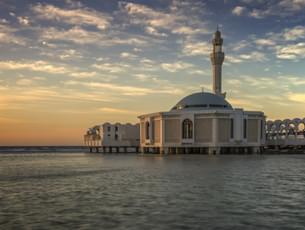
The Kaaba is one of Saudi Arabia's most beautiful and revered sites, and it is also known as the House of Allah since it is the first Qibla for Muslims. Muslims from all over the world visit the Kaaba during the Hajj pilgrimage because it houses a black stone that Muslims believe was once white but has since turned black after absorbing the sins of millions of pilgrims who have visited it over the years.
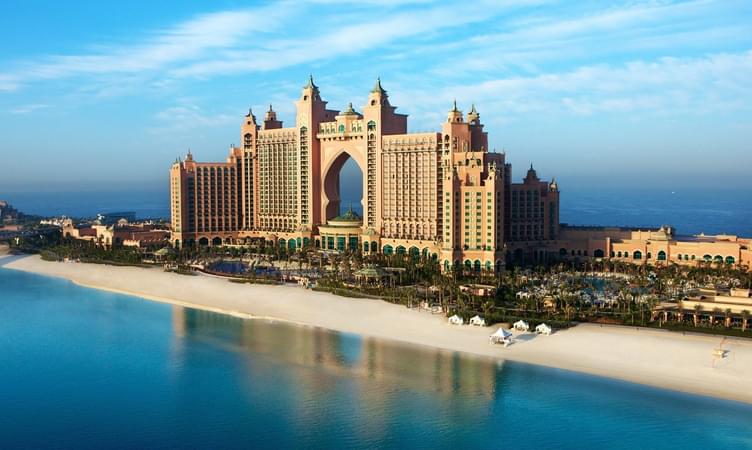

Best of Dubai

Jabal Al Nour
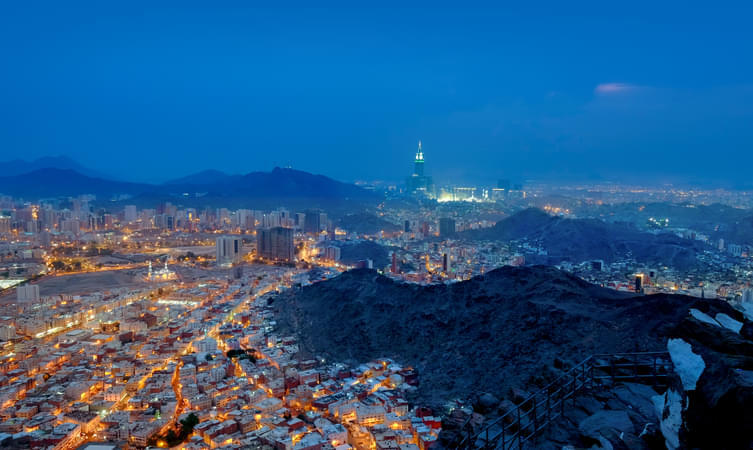
Also known as the Mountain of Light, it is the place where the Prophet is said to have meditated to receive the first revelations. It is an important religious and pilgrimage site for many muslims across the world. The mountain is roughly 620 meters and one can take up a strenuous hike to visit the peak. The unique aspect of this mountain is that it looks as if two mountains are on top of each other and the top of the mountain is a mountainous desert.
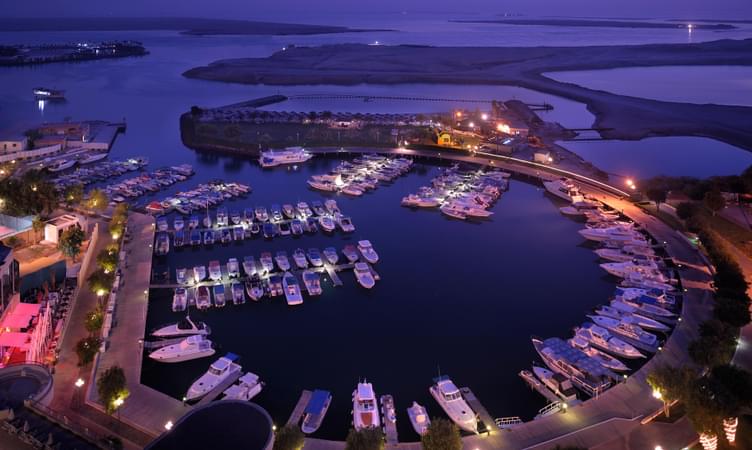
Best of Abu Dhabi

Abraj Al-Bait Tower

Abraj Al-Bait is a giant skyscraper, standing elegantly in the central area of Mecca, Saudi Arabia. The mega tall building is well known as Makkah Royal Clock and also informally called Mecca Clock Tower. The Clock Tower with a tremendous height of 601 meters (1972 feet) is recognized as the world's third tallest building after Burj Khalifa and Shanghai Tower. Nothing is more enchanting than looking up at the majestic Abraj Al-Bait Tower at night.
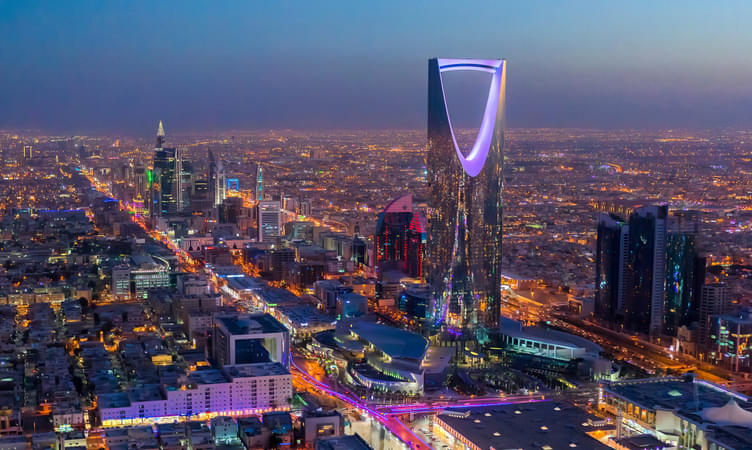
Best of Riyadh

City of Mina
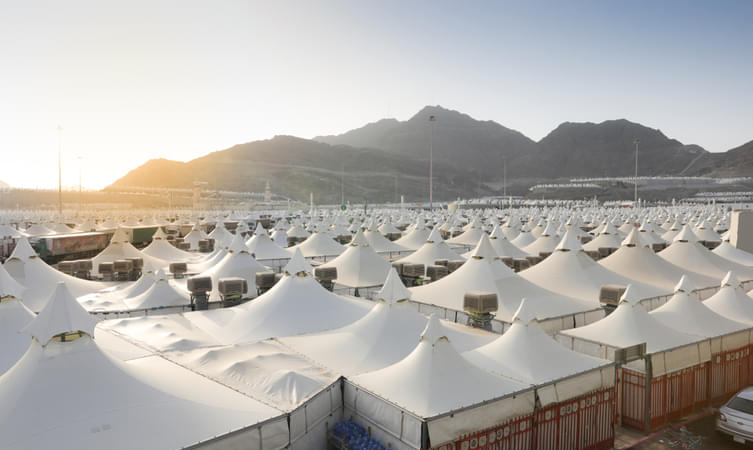
Located in the low-lying Jamarat valley in the region of Makkah, Mina happens to be the city of tents in Saudi Arabia. World’s largest tent city hosts almost 100000 tents for the increasing mass of pilgrims set out from Mecca after their seven rounds ritual at Mecca, Safa, and Murah. Explore the fascinating tent city and experience the stoning of the Devil, a ritual performed by the Hajj pilgrims on the last day of the Hajj.
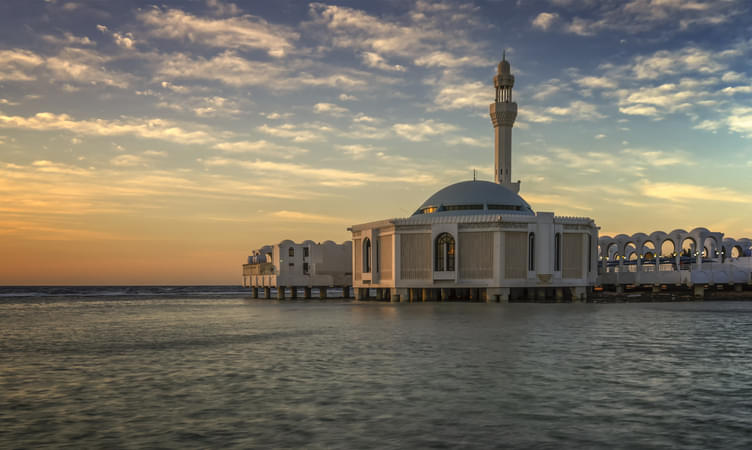
Best of Jeddah

Makkah Museum
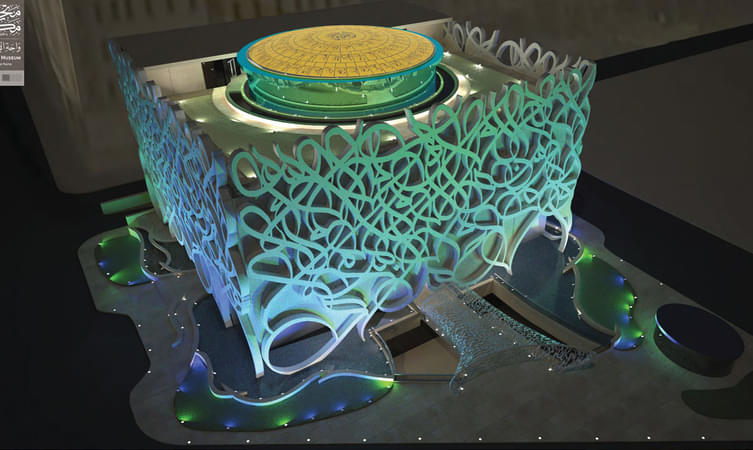
Makkah Museum is the historic center of Muslim pilgrimage that welcomes thousands of pilgrims for thousands of years. The historic Museum houses rare artifacts, fascinating collections, and displays that showcase the culture and heritage of the holy city. Take a tour around the seven main halls highlighting the Islamic civilization and explore the exhibition containing treasures and relics from the era of the Prophet Muhammad’s companions.
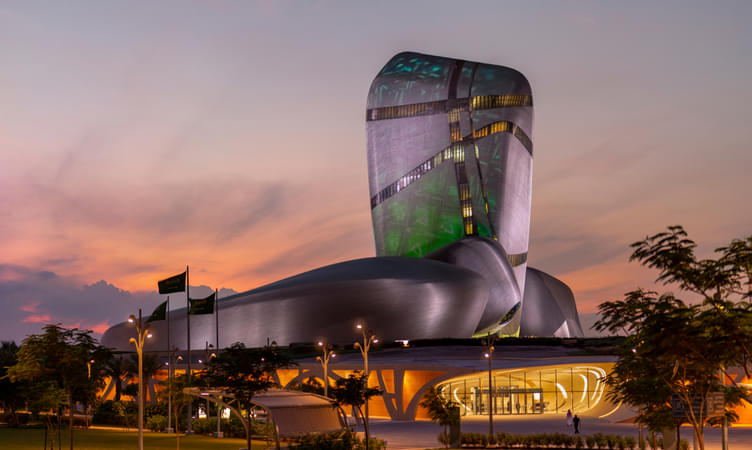
Best of Dammam

Mount Arafat
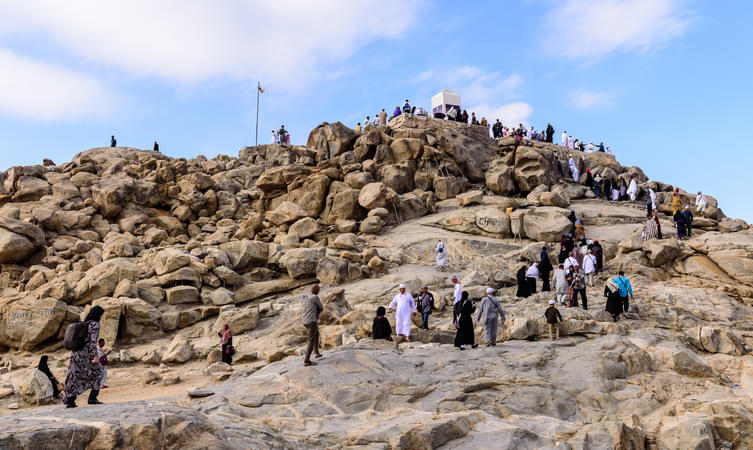
Mount Arafat is a granodiorite hill with a splendid height of approximately 70 m(230 ft) located about 20 km southeast of Mecca. The highest point of the mountain sits at an elevation of 454 meters above ground level and is known as the “mountain of mercy”. According to Islamic tradition, the hill is the place where the Prophet Muhammad stood with a Farewell Sermon to the Muslims who chaperoned him on the Hajj, which is also known as the Khutbat al-Wada.
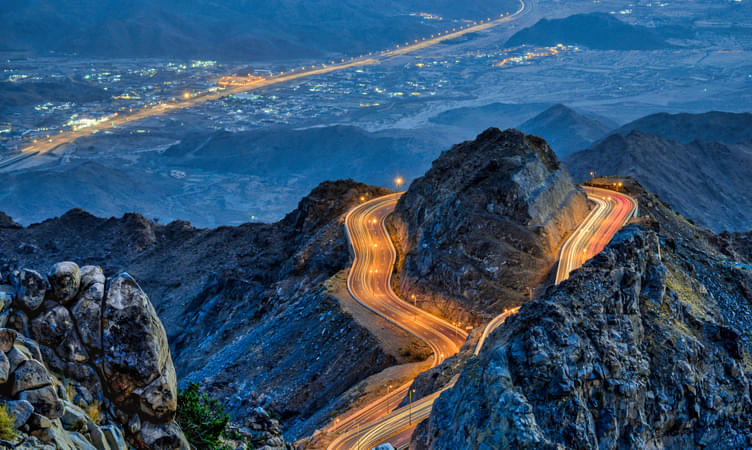
Best of Taif

Jabal Thawr Mecca
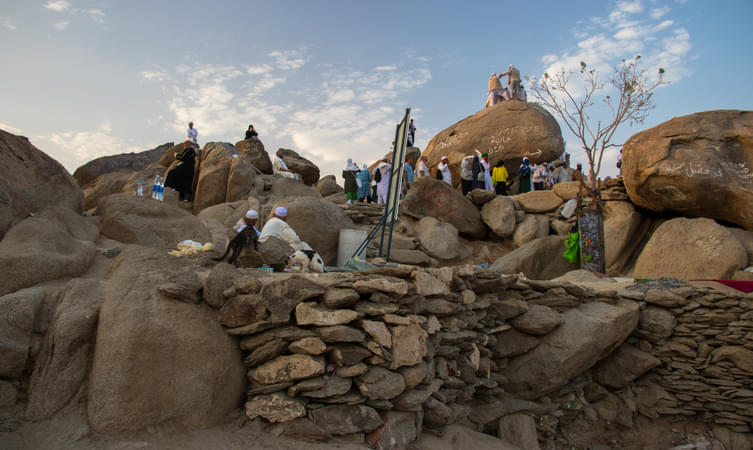
Located in the main spot of Mecca to the south of the district of MisfalahMount Thawr, Jabal Thawr Makkah is a famous holy site in Mecca, Saudi Arabia visited by many pilgrims and tourists all across the globe. The location is a mountain occupying a cave where Prophet Muhammad and his companion Abu Bakr hid for three days and three nights before escaping to Medina.
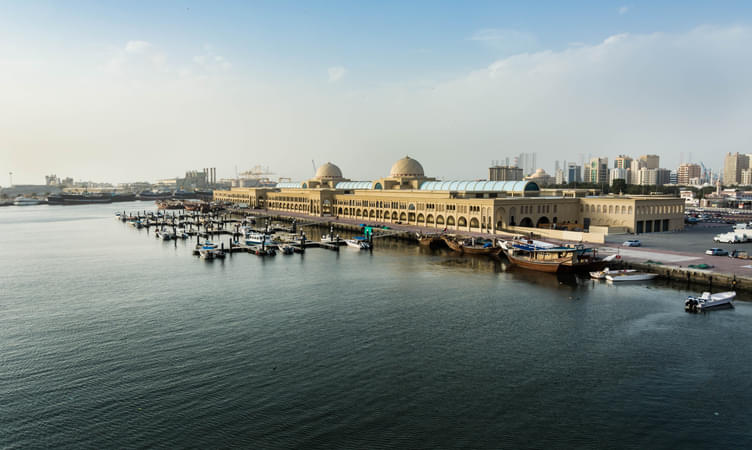
Best of Al Jubail
Jamaraat bridge.
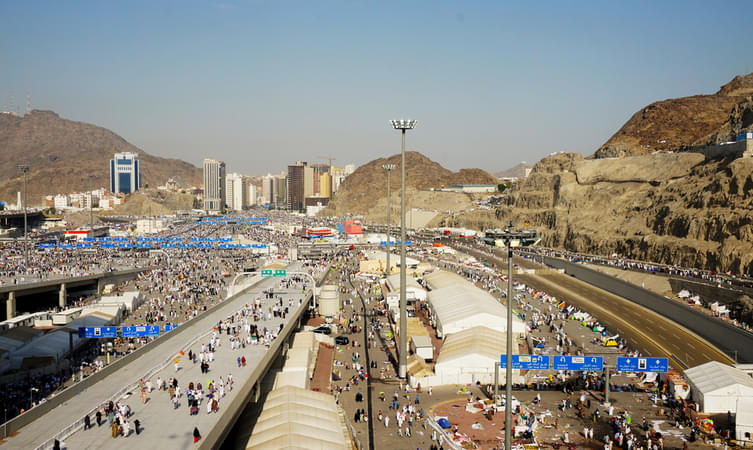
Jamarat Bridge is a pedestrian bridge sited in the city of Mina just east of Mecca. The bridge is one of the holy places which is populated annually by Muslim pilgrims to perform Islamic Hajj. During the ritual named “Stoning of the Devil,” you’ll witness pilgrims striking the Big Jamarah or Al-Jamrah al-Aqaba with seven pebbles. The stoning of the Jamarat represents the spiritual significance of man’s self.

Best of Al Kharj

Clock Tower Museum Mecca
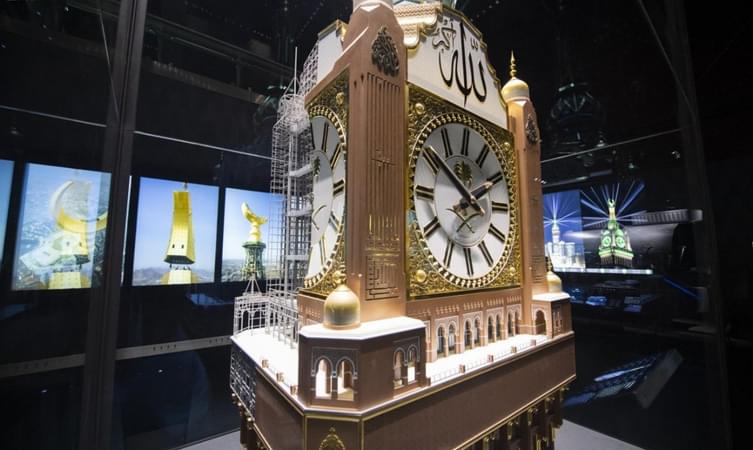
Clock Tower Museum Mecca is the museum located at the most peak point in Makkah, occupying the top four floors of the Abraj Al-Bait clock tower. The Mecca Clock Tower Museum is a unique location possessing the most different motifs and quirky features. Wander around the four different floors, each of them containing exciting things to see.
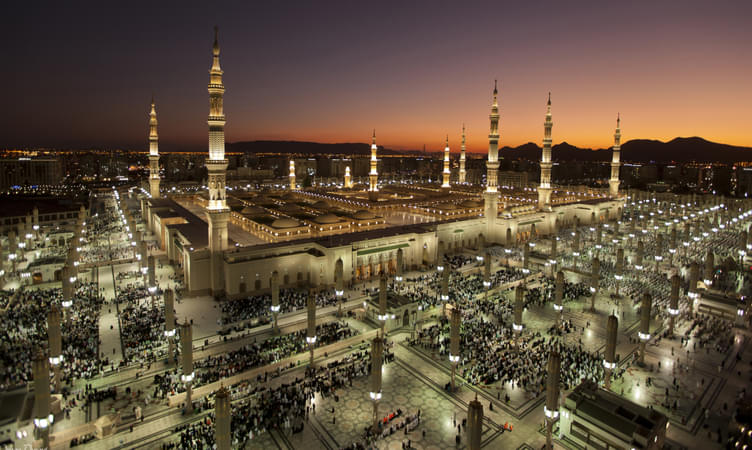
Best of Medina

Masjid Ayesha Miqat For Makkah
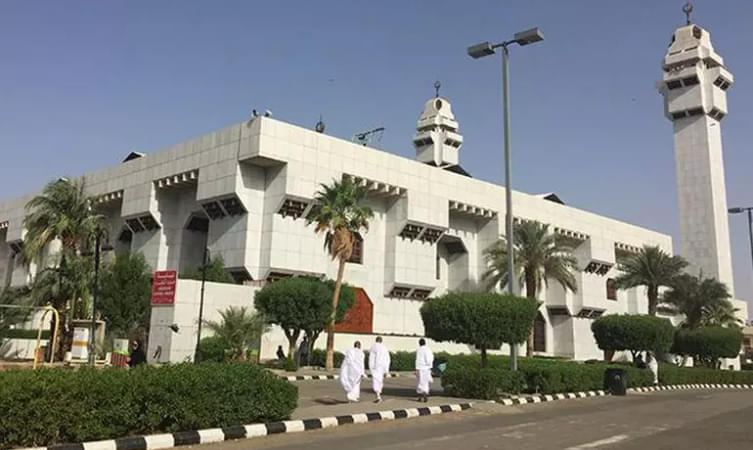
While in Mecca, don’t miss having a special tour of the most popular destination for pilgrims, especially for locals who are urged to begin their Hajj or Umrah journeys. Since Muhammad’s wife Ayesha had put her Ilham from this place, the mosque is also known as Masjid-e-Ayesha. You should go to the Masjid-e-Ayesha and indulge in the beautiful mosque with a peaceful and tranquil environment.
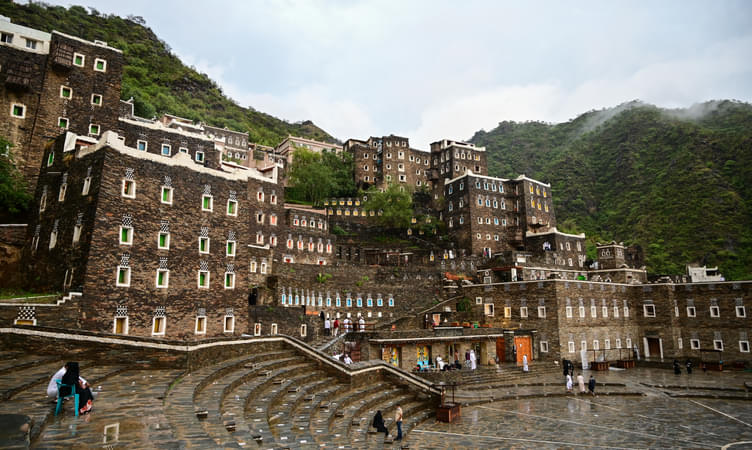
Best of Abha

Al Hukair Funland Mecca
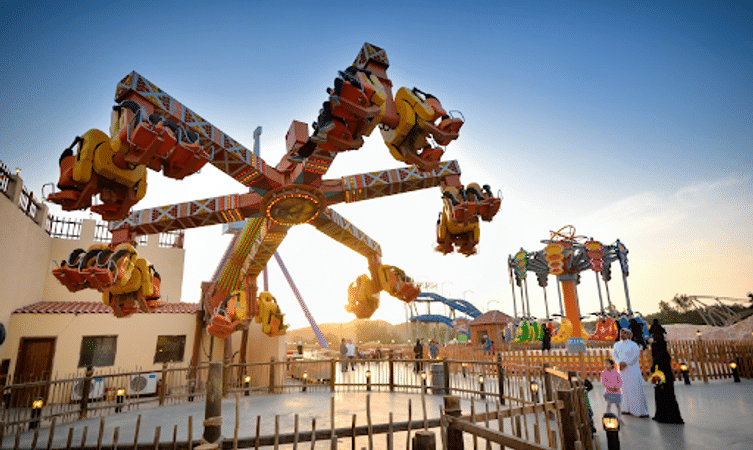
Hop on the indoor amusement park named Al Hokair Funland Mecca and get indulge in the park filled with a potent mix of lights, sounds, and children rides. Being one of the top entertainment hubs in Makkah, this amusement park is home to a large number of exciting games, ice skating halls segregated between internal and outer squares.
Elephant Rock Mecca
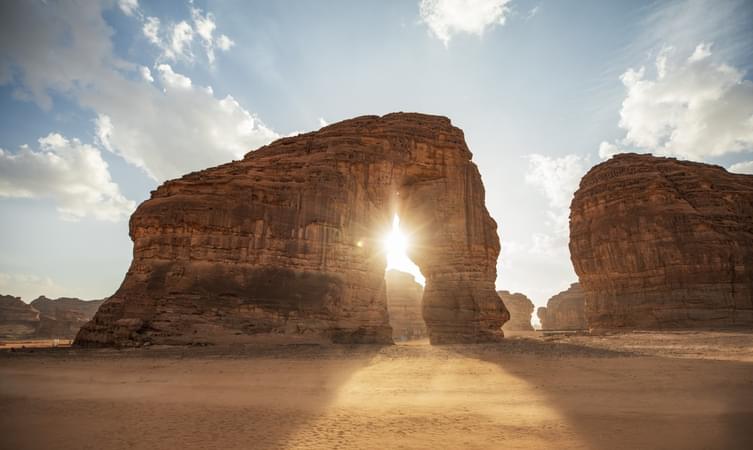
Set in the golden desert sands, The Elephant Rock is one of the most significant rocks in Maiden Saleh which is a highly recommended attraction to pay a visit if you’re at Maiden Saleh. You should definitely visit the giant beauty of the rock formation that stood elegantly in the middle of the desert. The name itself justifies its structures which are naturally formed like an elephant with a ground-bound trunk adjoining other hundreds of rock monoliths.
Globe Roundabout
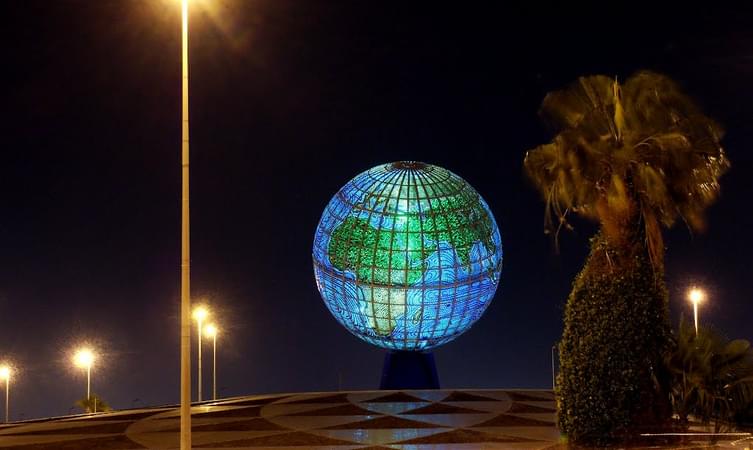
Globe Roundabout is a 1.7-mile route located near Jeddah, Makkah Region, Saudi Arabia which has the best walking trails scattered across the city. While visiting the eye-catching globe, you’ll also pass through other awesome breathing sights along the way to the last traffic circle. Have a great time witnessing the colossal glass and steel monument, Globe Roundabout surrounded by the traffic circle and a pleasing atmosphere.
Bicycle Square (Midan Addarajah)
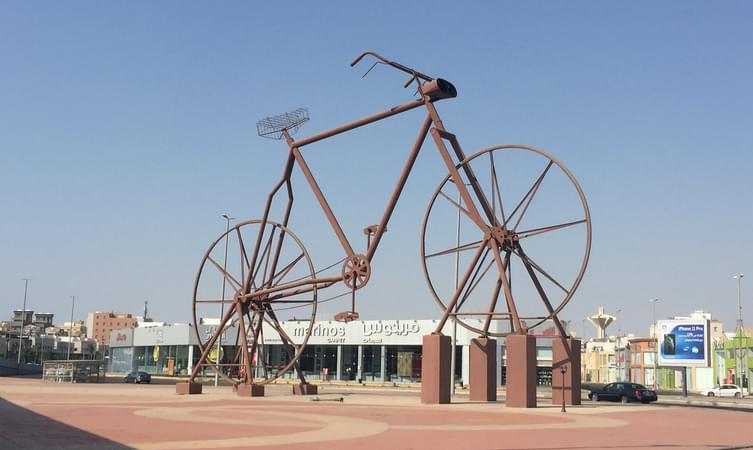
Pay a visit to a monumental Bicycle square(Midan Addarajah) one of Jeddah’s many spacious and artistic roundabouts, a popular attraction due to its enormous bicycle structure. Click photos of the massive art piece of the bicycle and admire its art created by Spanish artist Julio LaFuente. At night the sculpture has a different charm as it is illuminated by glittering lights.
Great Mosque of Mecca - Masjid al-Haram
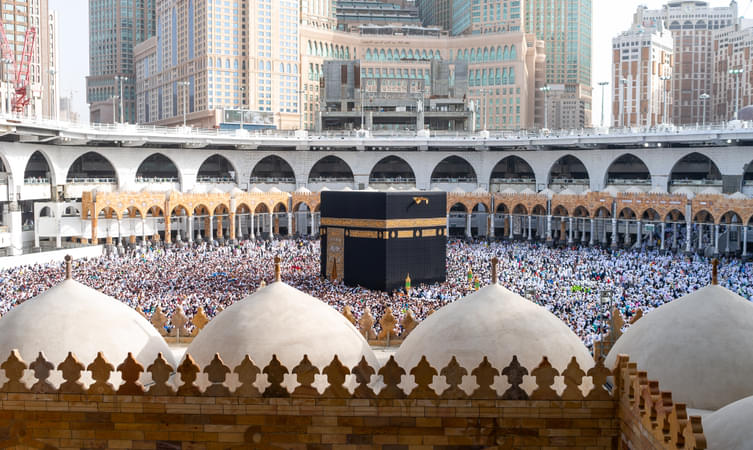
The Great Mosque of Mecca surrounds the Kaaba and is a site of main pilgrimage amongst the Islamic world and houses some important structural elements of religious importance such as the Black Stone, the Zamzam well, Maqam Ibrahim and the hills of Safa and Marwa. This mosque also holds the title of being the largest mosque in the world as well as the title of being the eighth largest building in the world.
People Also Ask About Mecca
Which are the best mosques to visit in mecca.
- Masjid Al-Haram: The biggest Mosque in the world, Masjid Al Haram, has to be on your bucket list of Places to see in Mecca. Known to be the focal point for all Muslims, the Mosque houses the famous Kaaba. Other sacred sites located in its courtyard include the Zamzam holy well and the station of Abraham.
- Masjid Ayesha: Another important mosque that you can include in your list of places to visit in Mecca is Masjid Ayesha, which every Hajj and Umrah pilgrims visit to enter into the state of Ihram. Named after t the Prophet Muhammad’s wife Ayesha, the beautiful mosque will offer you a peaceful ambiance to enjoy.
- Nimra Mosque: One of the famous places to visit in Makkah is Nimra Mosque where Mohammed had delivered his Farewell Sermon. Hajj pilgrims visit this place on the ninth day of the Islamic month of Dhu al-Hijjah.
- Al Khayf Mosque: Visit one of the oldest mosques in Makkah which is located at the foot of a mountain in Mina, near the smallest jamara, one of three walls used for the ritual stoning of the devil. During their stay at Mina, haj pilgrims pray at this mosque.
Which are the best things to do in Mecca?
- Pray At Al-Haram: One of the Places to visit in Mecca is Al-Haram, the Holy Mosque, which houses the Kaaba. While visiting this holy place, you may opt to offer your prayers to this sacred site.
- Go on an Excursion: A popular excursion which you can embark on is to Ghar Al Thawr (Cave of the Bull) on mount Al Thawr. Feel thrilled as you climb on steep and rocky terrains and pass sculptured boulders on your way to this century-old cave.
- Hike Jabal Al-Nour: Go on a hike on this hill which is known as “The Mountain of Light” or “Hill of Illumination” to reach Hira, a cave. The prominence of this hill lies in this cave where Prophet Muhammad meditated for long and received his first revelation from God by the archangel Gabriel.
- Try Different Cuisines: You will get the taste of several international cuisines in this holy city with Muslim immigrates from around the world making this city their home. You can try some traditional Saudi dishes such as Kasbah and Rice Biryani. You may opt for some spicy street eats from Southeast Asia or try some authentic Pakistani cuisine such as lamb curry etc.
- Indulge in shopping: One of the Mecca tourist attractions is the ancient shopping destinations such as ancient street markets, souks, and Old City Bazaars. Feel excited shopping for beads, perfumes, and clothing at these places.
Which are the best places to stay in Mecca?
- Al Kiswah Towers Hotel: Enjoy your stay in the conveniently located Al Kiswah Tower Hotel located only 1 km away from Abraj Al Bait and 900 m from Masjid Al Haram. Enjoy amenities such as free parking and free wifi while staying in this hotel.
- Hilton Makkah Convention Hotel: Delight in the majestic view of the holy city of Makkah while staying at Hilton Makkah Convention Hotel. Have delicious cuisines at the hotel’s three different restaurants and buy souvenirs at its gift shop. If you are a fitness freak, you will love to continue your workout regime at the fitness center.
- Swissotel Al Maqam Makkah: Standing in the heart of the holy city is the Swissotel Al Maqam Makkah. Situated in the famous Abraj Al Bait complex, the hotel faces the holy Kaaba and has direct access to the holy mosque. Relish your stay in this hotel’s luxurious rooms and suites and enjoy a selection of oriental and international cuisines at its restaurant, Al Khairat restaurant, and unwind at the end of the day at Masharif tea lounge.
- Conrad Makkah: Get treated with world-class luxury during your stay at Conrad Makkah. Located just steps away from the Holy Mosque and Kaaba, this hotel will delight you with its spacious and modern rooms with separate dressing rooms and complimentary wifi. Savor international dishes and Arabic specialties at the all-day dining restaurant, Al Mearaj.
How do I get to Masjid al-Haram from the Clock Tower Museum Mecca?
Is it worth visiting mecca, what is the best time to visit mecca, how far is makkah from medina, popular related destinations.
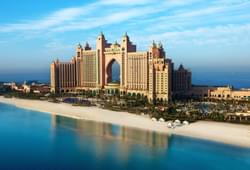
Best Domestic Packages
Best international packages, domestic honeymoon packages, international honeymoon packages, places to visit in india, international places to visit, things to do in india, international things to do, popular on thrillophilia.
- We assure the privacy of your contact data.
- This data will only be used by our team to contact you and no other purposes.
Your enquiry has been received successfully. Our destination expert will reach out to you soon!
- Middle East
- Saudi Arabia
- Why You Should Visit Saudi...
Why You Should Visit Saudi Arabia at Least Once in Your Lifetime

With Saudi Arabia now opening up to visitors thanks to the recent issuing of tourist visas, there’s never been a better time to explore this fascinating Middle Eastern country. Here’s our list of reasons why you should consider planning a trip.
It’s a spiritual haven for muslims.
Mecca and Medina are Islam’s holiest cities, cherished by over 1 billion Muslims around the globe. Mecca is home to the Kaaba, the cubical building that was first built by Prophet Abraham and his son Ishmael, while Medina has the tomb of the Prophet Muhammad, who Muslims believe is the final messenger of God in a long chain of messengers including Moses and Jesus.
The two cities are off-limits to non-Muslims, but if you are of the faith these two are a must-visit. The spirituality, the history and the sense of unity can be overwhelmingly emotional. This is even more prevalent during Hajj when as many as 3 million people will gather for a deeply personal – yet collective – experience, a journey in which all become equal before God.

It gives a rare glimpse into pre-Islamic Arabia
Saudi has fascinating pre-Islamic sites including three recent discoveries that changed how we understand history: Al-Magar site in the south, estimated to be around 9,000 years old; an 85,000 year-old human footprint; and the eyebrow-rising Phironic inscription of Ramses III found in the north.
On the other hand, you can explore an array of pre-Islamic rock art in Hail province covering 10,000 years of history, or visit the astonishing 111 monumental tombs of Mada’in Saleh , an all-time favourite for travellers. The sheer size of the tombs and the level of craftwork is enough to bewilder you.

The diversity is endless
Think about it: around a third of the population here are immigrants from around the globe, and local citizens are diverse, coming from very different backgrounds. You will experience this first hand if you travel across the kingdom.
Saudi is also diverse in history: from sites related to local rulers, such as Barzan area in Hail, Shubra palace in Taif, and the very popular Masmak Fort in Riyadh , to sites related to Islam’s grand empires, including a dam from the Umayyad empire, the Abbasid Darb Zubayada , and the Ottoman castle of Tabuk .
There’s to-die-for scuba diving
Saudi Arabia has endless beaches on the Red Sea, many of them untouched. Vendors now offer boat trips from cities such as Jeddah, Yanbu and Al-lith. A number of sites have shipwrecks, some quite ancient .
The Red Sea offers top diving experiences, warm temperatures and great visibility. You can encounter sharks, barracudas, rays, turtles, morays and a plethora of colorful reef fish. Dolphins are also a common encounter when sailing.
With a mega-project planned on the Red Sea coast, it is expected that Saudi will be a serious competitor in scuba tourism soon.
Local tip: Both the Red Sea and the Gulf coasts offer great birdwatching if you want to see some of Saudi’s wide ranging birdlife .

You can enjoy the greenery. Yes, the greenery!
Saudi Arabia is also diverse environmentally. Mountains in the west and south offer amazing locations for lovers of nature, history, heritage and photography. Photos of the nature in and around mountain cities like Taif , Baha and Tabuk (where it snows !) contrast sharply with the common images of the Saudi desert.
But the most glamorous is probably the city of Abha in the south, with its breathtaking over-the-clouds views in Saudi’s highest peak, Jabal Sawda . Abha has been chosen as the capital of Arab tourism in 2017 , and offers a number of parks, historic sites and festivals.
It’s home to the Arabian leopard
If you’re not a water person, consider visiting this hidden gem: Prince Saud Al-Faisal Wildlife Research Center just outside Taif. Here you will meet endangered Arabian animals in captivity, including the large bustard birds, the beautiful Arabian oryx, and the red-necked ostrich. But the highlight of the visit is the Arabian leopard. It’s virtually impossible to encounter this critically endangered animal in the wild, so meeting one face to face can be magical.
In recent years, the center managed to breed these endangered species including the Arabian leopard. Hopefully we will one day see some of them released in the wild!
Local tip: Before visiting the centre, do give them a call first.
Since you are here, we would like to share our vision for the future of travel - and the direction Culture Trip is moving in.
Culture Trip launched in 2011 with a simple yet passionate mission: to inspire people to go beyond their boundaries and experience what makes a place, its people and its culture special and meaningful — and this is still in our DNA today. We are proud that, for more than a decade, millions like you have trusted our award-winning recommendations by people who deeply understand what makes certain places and communities so special.
Increasingly we believe the world needs more meaningful, real-life connections between curious travellers keen to explore the world in a more responsible way. That is why we have intensively curated a collection of premium small-group trips as an invitation to meet and connect with new, like-minded people for once-in-a-lifetime experiences in three categories: Culture Trips, Rail Trips and Private Trips. Our Trips are suitable for both solo travelers, couples and friends who want to explore the world together.
Culture Trips are deeply immersive 5 to 16 days itineraries, that combine authentic local experiences, exciting activities and 4-5* accommodation to look forward to at the end of each day. Our Rail Trips are our most planet-friendly itineraries that invite you to take the scenic route, relax whilst getting under the skin of a destination. Our Private Trips are fully tailored itineraries, curated by our Travel Experts specifically for you, your friends or your family.
We know that many of you worry about the environmental impact of travel and are looking for ways of expanding horizons in ways that do minimal harm - and may even bring benefits. We are committed to go as far as possible in curating our trips with care for the planet. That is why all of our trips are flightless in destination, fully carbon offset - and we have ambitious plans to be net zero in the very near future.

Places to Stay
The best spa hotels in saudi arabia.

These Are the Best Apps for Muslims

See & Do
Reflections on an incredible mirrored building in the saudi arabian desert.

Ithra: The Creative Hub Driving Saudi Arabia's Cultural Renaissance

Health & Wellness
Feminists in saudi arabia use underground radio station to push for women’s rights.

Saudi Design Week: A Celebration of Heritage and Sustainability

Racing Around the World With Extreme E Driver Jamie Chadwick

Your Guide to Saudi Fashion Week

The Best Hotels in Saudi Arabia for Every Traveller

The Ancient Saudi Arabian City Perfect for Modern Travellers

Saudi Fashion Designers to Watch

Racing Around the World's Most Extreme Locations
Culture trip spring sale, save up to $1,100 on our unique small-group trips limited spots..

- Post ID: 1000267647
- Sponsored? No
- View Payload
If you're seeing this message, it means we're having trouble loading external resources on our website.
If you're behind a web filter, please make sure that the domains *.kastatic.org and *.kasandbox.org are unblocked.
To log in and use all the features of Khan Academy, please enable JavaScript in your browser.
AP®︎/College Art History
Course: ap®︎/college art history > unit 2.
- Introduction to Islam
- The Five Pillars of Islam
- Introduction to mosque architecture
Mecca and the Ka'ba
The rituals, the journey, want to join the conversation.
- Upvote Button navigates to signup page
- Downvote Button navigates to signup page
- Flag Button navigates to signup page
Why Do Muslims Go To Hajj in Mecca?
Every year, millions of Muslims go to Hajj in Mecca , fulfilling one of the Five Pillars of Islam, namely to make the Hajj in the holy and sacred city of Mecca at least once in a lifetime if able to do so.
Yet in addition to the requirement of simply fulfilling one of the Five Pillars of Islam, what are the spiritual reasons for performing the Hajj in Mecca?
Although the reasons for going to Hajj in Mecca may be innumerable, this article sheds light on some of the deeper spiritual aspects of the holy pilgrimage.
Why Do Muslims Go to Hajj in Mecca? Unity
One of the fundamental principles of Islamic spirituality is the principle of unity, derived from tawheed , the principle of oneness. Islam teaches that not only is the Creative Power God Almighty One, but so too are all of creation and thus all of humanity.
Perhaps in no other spiritual or religious event is this principle of unity more evident than in the Hajj in Mecca, during which millions of believers set aside all differences of race, caste, economic status, nationality and even religious sect as they unite in the holy pilgrimage, each donning the simple two-piece white garb of the non-attached traveler, allowing nearly no apparent difference whatsoever between men as they stand together in the Divine Presence of their Creator.
“All men are equal before God as are the teeth of a comb.”
— Prophet Muhammad ﷺ
Hajj in Mecca: Malcolm X

After initially being indoctrinated in the unconventional belief system of the race-focused Nation of Islam, Malcolm X only began to truly realize the real spirit of Islam after making the Hajj in Mecca.
It was during the Hajj in Mecca that Malcolm X sat, ate and slept shoulder to shoulder with believers of every possible race and ethnicity, all equal before God and united in spiritual love and brotherhood.
Why do Muslims go to Hajj in Mecca?
To overcome the superficial differences the ego uses to differentiate, identify and separate with. To achieve unity in heart and soul, and to return to a purified state of oneness, reflecting the holy spirit, nature and presence of God in creation.
Why Do Muslims Go to Hajj in Mecca? Focus
Our lives, are often engrossed and nearly entirely occupied with dunya , the external material world of forms and appearances. This leads to and results in heedlessness, unconsciousness and loss of focus, known as ghaflah in Arabic.
When asking, “ Why do Muslims go to Hajj in Mecca? “, one of the most important reasons for the Hajj in Mecca is to assert focus, regain consciousness and awaken the heart and soul.
All created bodies spin in orbits around their centers and axes, and the proper foundation and center for the life of a human being is the Presence of God. The true focus of life for a human being is a real and authentic spiritual connection to the Creator of all-that-is, for it is through our relationship with the One Power from which all things originate that we rediscover our purpose and awaken to divine potential .
As throngs of pilgrims circumambulate the Holy Ka’ba in counter-clockwise revolutions, he Hajj in Mecca emphatically asserts that the center, focus, root, source and foundation of man’s life is God-based consciousness.
There is no more liberating a choice for a human being than to consciously relinquish attachment to creation and to time, and to thus restore focus on the Eternal, the Unchanging, the Immaterial and the Absolute.
Just as galaxies spin around massive black holes that ultimately result in their annihilation, so too does the life of man revolve around increasing God-based consciousness, ultimately resulting in the annihilation of the self and the ego, and it is through that ‘death’ that a human being awakens to eternal and true life.
“Die before you die.”
Why do Muslims Go to Hajj in Mecca? Context
Islam is not and has never seen itself as an isolated religion or phenomenon. To the contrary, Islam has from the beginning asserted that the revelation of the Holy Qur’an and the prophethood of the Holy Prophet Muhammad ﷺ were but the final revelation, completing, clarifying and unifying all of that which had been revealed prior.
Islam, which is but the path of spiritual surrender, did not begin with the Prophet Muhammad ﷺ, but rather began with the first man and woman, Adam and Eve (as) , and continued as the central teaching of all men and messengers of God, including the prophets Noah, Abraham, Moses and Jesus, divine peace and blessings be upon them all.
During the Hajj in Mecca, Muslims honor the Holy Ka’ba originally built by Adam (as) as the first House of God when he awakened upon the earth, rebuilt by Abraham and Ishmael (as) centuries later, and finally purified by the Prophet Muhammad ﷺ in the seventh century of the idolatry that had desecrated it.
To reaffirm their connection to a much larger historical context, and to remember that Islam is not a separate or unique religion revealed to but a particular people, but rather that Islam is the original message and spiritual path, the way of surrender and divine harmony as it has been revealed from the earliest of times to the earliest of human beings as the road to peace and prosperity.
The Hajj in Mecca is thus intended to lead to greater humility and brotherhood with all of humanity in the context of the realization that all prophets and messengers of God taught the same essential truth.
The same religion has He established for you as that which He enjoined upon Noah, that which We have sent by inspiration to thee and that which We enjoined upon Abraham, Moses, and Jesus. Namely, that ye should remain steadfast in religion, and make no divisions therein.
To they who worship other than God, hard is that to which thou callest them. God chooses to Himself those whom He pleases, and guides to Himself those who turn towards Him.
— Surah ash-Shura (Holy Quran, 42:13)
Why Do Muslims Go to Hajj in Mecca? Transcendence
During the Hajj in Mecca, millions of human beings stand together under the hot sun with nothing but the ihram , which are but a few pieces of plain white cloth covering their bodies. All the trappings of life have fallen away, and all worldly attachments non-existent and left behind. The atmosphere is remarkably reminiscent of the accounts of the Day of Judgement, when humanity will be resurrected and held to face what they sent ahead in deeds and actions.
On that Day, it will not matter what type of car a person drove nor will the square footage of the size of their home be of significance. It will be irrelevant what temporal occupation they had. What will matter is what positive difference we made in the lives of other sentient beings and how honorably we upheld our responsibility as representatives of the Divine, the Most Merciful, the Most Compassionate.
What will matter on that Day is the degree of excellence with which we lived our lives. On that Day, we will not be measured by our bank accounts as we are now, but by the level of spiritual and human development we embraced and cultivated.
During the Hajj in Mecca, one cannot but be reminded of the life beyond, the life eternal when the world and all it contains has fallen away, and all that matters is the eternal destiny of the human soul.
To transcend the world of forms and appearances, and to experience life and dignity beyond the limitations of materialism. To irrevocably grow in spiritual consciousness and awareness.
“The mind, once stretched by a new idea, never returns to its original dimensions.”
— Ralph Waldo Emerson
Why Do Muslims Go to Hajj In Mecca? God

For the believer, the center and focus of life is God-based consciousness and thus awareness and clarity. The five daily prayers are meant to continually reinforce this truth, and the full realization of the Islamic spiritual path is obtained through a deeper realization of the significance of the Hajj.
The realization of truth is that God is not in the Kaaba, but rather that the Divine Presence is to be found within each human heart and soul.
It was when the great Muslim mystic poet Jalaluddin Rumi (qs) realized this divine truth that he began to circumambulate around the center and axis of the essence his very own being, and thus was born the spiritual practice and experience of “sufi whirling.”
God has said, “Neither the heavens nor the earth can contain Me, save the heart of a believer.”
Often, we must make the external journey to realize that we carry within us that which we seek.
5 Steps to Best Experience the Benefits of the Hajj
By incorporating the intentions outlined in this article, you can get the most out of Hajj. In fact, you can share in these spiritual benefits even if you are not physically performing the Hajj in Mecca.
Keep these principles in mind, and make them part of the intention, or niyyah , in your daily practice.
1. Seek Unity
Realize and remember that separation is the ego’s method of maintaining a separate and independent existence from God. Love all of humanity regardless of the superficial differences of culture and creed. In our souls and in our hearts, we are all the same and we are all one.
2. Maintain Focus
Continually maintain focus on Eternity and upon the Divine Presence of God rather than allowing yourself to become overtaken by dunya, the world of form and appearances that continually seeks to distract us and lead us into heedlessness, unconsciousness and loss of purpose. Use the Five Daily Prayers as an opportunity to continually reaffirm your focus and direction in life. Tune in to the power of the present moment.
3. Preserve Context
Remember that Islam is a universal path of peace and brotherhood, and that it’s goal is to move beyond war, conflict, violence and enemies. The goal of Islam, as taught by the Holy Prophet ﷺ and revealed in the Holy Qur’an is for humanity to seek and live in peace, differences allowed and human rights protected. The Muslim is the exemplar of human excellence, and this requires a divine degree of love, tolerance and compassion. This requires the transcendence of the self and ego.
4. Pursue Enlightenment
The one veil that separates a human being from the direct experience of the Divine Presence of God is the self and ego-based consciousness . The Islamic spiritual path is designed to ultimately liberate a human being from this limited, finite and selfish personality, and this is only possible through Jihad an-Nafs, the holy struggle against the lower self. Transcend the self.
5. Discover the Divine Presence
Continually turn inward, take advantage of silence and stillness, and learn to dissolve in the perfection of the present moment, which is the portal and doorway into the Divine Presence of God. Let go of past and future, learn to forgive, and awaken to fearlessness and freedom of life unencumbered in the here and now.
Ultimately, we go to Hajj in Mecca to realize our noble and honored divine destiny and purpose, and to become what God Almighty created humanity: awakened and enlightened spiritual deputies of the One. Muslims go to Hajj in Mecca to become purified and perfected servants and representatives of the Divine in creation, awakened human beings who are open, clear, transparent, purified of selfishness, and who are living exemplars of goodness, beauty, light, compassion and love.
The spiritual path to the Divine Presence necessitates Tazkiyyat an-Nafs , or the “purification of the self,” and Islamic spirituality is designed to facilitate and accelerate this process, and to gently guide a human being to enlightenment and peace.
When the Divine Presence is re-established as the axis and center of our lives, peace and prosperity naturally flow from the ocean of Divine Providence. Our lives become healed and whole. And we rediscover balance and divine purpose.
Recommended Resources
- Free Multimedia Mini-Course
- Guided Meditation: Return to God
- Islamic Meditation Program
Leave a Reply Cancel reply
Your email address will not be published. Required fields are marked *
Save my name, email, and website in this browser for the next time I comment.
Copyright © 2019 All Rights Reserved — BorderPoint Media

Commerce & Finance
- Palestine: Jerusalem
- Palestine: Masjid al-Aqsa
- Palestine: Other
- Makkah: Hajj places
- Makkah: Masjid al-Haram
- Makkah: Other
- Madinah: Masjid-e-Nabwi
- Madinah: Other
- Saudi Arabia: Additional places
Can non-Muslims go to Mecca or Madina? Can Tourists Enter?
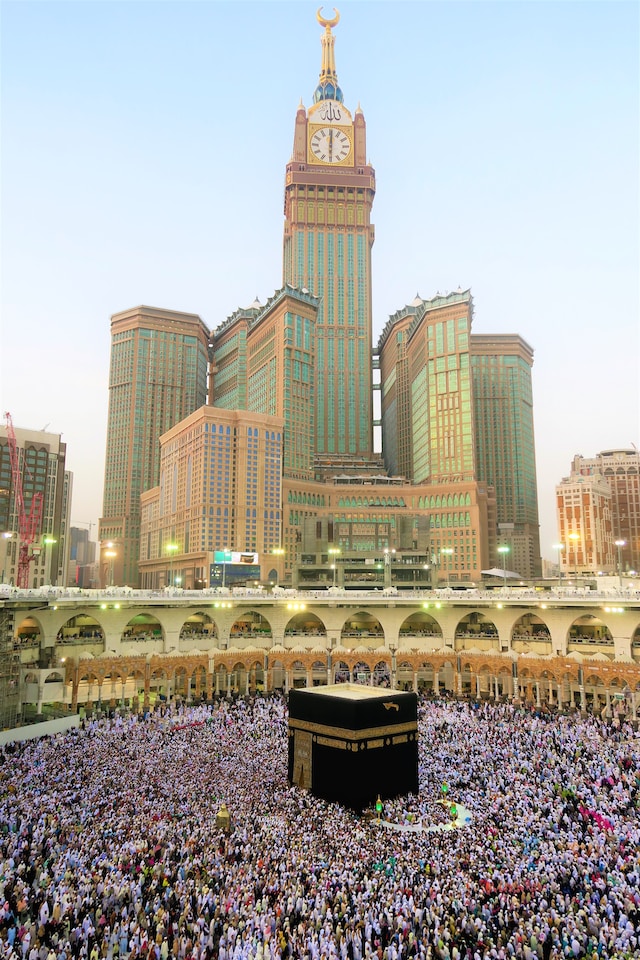
Table of Contents
Mecca and Medina are the two most important cities in the Islamic world, and millions of Muslims from around the world visit these cities each year to perform Hajj or Umrah.
However, non-Muslims are not allowed to enter Mecca, but are allowed to visit Madinah. This raises a lot of questions for people who wish to visit Mecca or Medina, especially for tourists and people of other religions.
Why Are Non-Muslims Not Allowed in Mecca or Madina?
When the question arises, ‘ Can non-Muslims go to Mecca ‘ the answer is No.
Non-Muslims are not allowed to enter the holy cities of Mecca in Saudi Arabia. The reasons for this restriction are deeply rooted in the Islamic faith and history.
Mecca and Medina are considered the holiest cities in Islam and are revered by Muslims worldwide. Mecca is home to the Kaaba, the first house of worship dedicated to the one true God, Allah. It is also the site of the annual Hajj pilgrimage , which is one of the five pillars of Islam and mandatory for every able-bodied Muslim who can afford it.
The Quran, the holy book of Islam, states that Mecca is a sanctuary that is reserved exclusively for Muslims and non-Muslims cannot vsit Mecca.
It says in the Quran,
“O you who have believed, indeed the polytheists are unclean, so let them not approach al-Masjid al-Haram after this, their [final] year” (9:28). This Quran verse is interpreted by Islamic scholars as a commandment to keep non-Muslims out of Mecca.
Furthermore, the Prophet Muhammad (SAW) declared that Mecca and Medina are sacred lands that are not to be polluted by non-Muslims.
“No unbeliever may enter Mecca. No one may circumambulate the Kaaba naked or perform the pilgrimage naked” (Sahih Muslim, 1355).
This restriction on non-Muslims entering Mecca has been in place for centuries and is strictly enforced by the Saudi Arabian government. Non-Muslims who attempt to enter Mecca can face severe consequences, including imprisonment and deportation.
The rationale behind this ban is to preserve the sanctity and purity of Mecca as holy site for Muslims . Allowing non-Muslims to enter Makkah could potentially lead to the desecration of these sacred sites and compromise their spiritual significance for Muslims.
In addition to the religious and cultural reasons, there are also security concerns that justify the ban on non-Muslims entering Mecca. The Saudi Arabian government takes the responsibility of protecting the holy cities and their visitors very seriously. It believes restricting access to these cities is necessary to ensure their safety.
How Do They Check if You Are Muslim in Mecca?
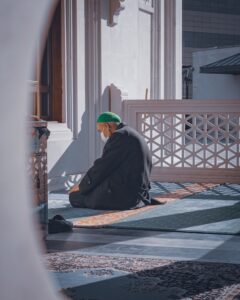
The passport will be checked at the arrival registration counter at airport when arriving in Saudi Arabia, and if the passport has any visa stamps from Israel, it will be deemed invalid.
Additionally, non-Muslims are not allowed to apply for the special Hajj or Umrah visas, which are required to enter Makkah and Medina.
Furthermore, there are checkpoints and barriers set up on the roads leading to Mecca to ensure that only Muslims enter the city.
At these checkpoints, visitors will be asked to show their Hajj or Umrah visas as well as their ID cards, which will indicate their religion.
Additionally, there are officers who will be observing the visitors’ behavior and dress to ensure that they are adhering to Islamic norms and customs.
What if I’m a Tourist Visiting Saudi Arabia?
If you are a non-Muslim tourist visiting Saudi Arabia, you will not be allowed to enter the holy citiy of Makkah. However, you can still visit other parts of the country, such as Madina, Riyadh or Jeddah, and experience the culture and hospitality of the Saudi people.
The government has also started promoting tourism in the country, and there are many tourist attractions that you can visit.
Can a Revert/Converted Muslim Go to Mecca?
Yes, a revert Muslims can of course go to Mecca.
However, it is important to note that the Saudi Arabian government has implemented strict rules and regulations for Hajj and Umrah pilgrims, and you must follow these rules to perform the pilgrimage.
Can a Christian Enter Mecca?
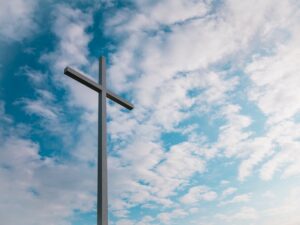
No, Christians are not allowed to enter Mecca. According to Islamic teachings, Christians are considered to be polytheists, and they are not allowed to enter the holy cities.
However, there have been reports of some non-Muslims being allowed to enter the cities for diplomatic or business reasons, but these are rare cases.
Can a Hindu Enter Mecca?
No, Hindus are not allowed to enter Mecca or Medina. Hindus are considered to be idolaters, and according to Islamic teachings, idolaters are not allowed to enter the holy cities.
However, there have been some exceptional cases of Hindus being allowed to enter Mecca for diplomatic or business reasons.
Can a Jew Enter Mecca?
No, Jews are not allowed to enter Mecca. The Saudi Arabian government strictly prohibits non-Muslims from entering the holy city of Mecca, and this includes Jews.
This rule is in place to preserve the sanctity and purity of the holy sites for Muslims and to prevent any potential harm to the religious and cultural identity of the city.
Is There an Age Limit for Hajj?
There is no specific age limit for Hajj, but the pilgrim must be physically and financially capable of performing the journey. However, due to safety concerns, the Saudi government has set the minimum age for performing Hajj at 12 years .
Elderly people and those with underlying health conditions are advised to consult their doctors before embarking on the Hajj journey.
What Happens if a Non-Muslim Enters Mecca?
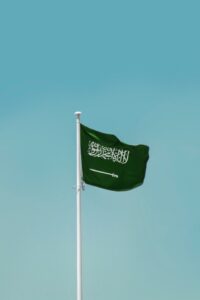
If a Non-Muslim is found entering Mecca, they will be arrested and deported back to their country.
The Saudi government takes the ban on non-Muslims entering Mecca seriously, and violators can face severe punishment, including imprisonment and fines.
Incidents When Non-Muslims Entered Mecca
There have been instances in the past where non-Muslims have entered Mecca. In 1979, a group of armed militants led by Juhayman al-Otaybi took control of the Grand Mosque in Mecca.
The militants were from Saudi Arabia and Yemen, and they believed that the ruling Saudi monarchy had become corrupt and unIslamic.
The Saudi government eventually regained control of the mosque after a two-week siege, during which many people were killed or injured. This incident highlighted the potential security risks that non-Muslims could pose if they were allowed to enter Mecca.
In 2002, an American Jew and TV journalist in Israel named Gil Tamary secretly entered Mecca to record footage for a travelogue.
Despite the strict enforcement of the ban on non-Muslims in Mecca, Tamary managed to gain entry along with only 17 other non-Muslims known to have done so in recent decades.
The incident caused an uproar among Muslims, Israelis, and Westerners alike, as they feared it would increase hostility. The Saudi government pressed criminal charges against Tamary and his Saudi driver.
Tamary later issued an apology and claimed his intention was to highlight the significance of Mecca and the beauty of the religion to promote religious tolerance.
These incidents demonstrate the importance that Muslims place on the sanctity of Mecca and the need for strict measures to prevent non-Muslims from entering the city.
While there may be some curiosity among non-Muslims about what lies inside the holy city, it is important to respect the religious beliefs and practices of others and refrain from attempting to enter Mecca without permission.
Can Non-Muslim Enter Mosques?
Non-Muslims are allowed and welcomed to enter mosques in Saudi Arabia, however the only mosques they are not allowed to enter is Masjid Al Haram and sacred areas around it.
In many Muslim-majority countries, non-Muslims are allowed to enter mosques, although there may be certain restrictions or protocols that they need to follow, such as dress code and behavior. Visitors are often required to remove their shoes and dress modestly, and photography and loud talking may not be allowed.
In some cases, non-Muslims may be allowed to enter mosques but only in certain areas, such as a designated viewing area or the outer courtyard. In other cases, non-Muslims may be allowed to enter the mosque but only during certain times, such as outside of prayer times. But in most cases non Muslims are welcomed to visit mosques.
There are times when some mosques that do not allow non-Muslims to enter at all. This may be because the mosque is considered to be a particularly sensitive or sacred site or because there have been security concerns in the past.
In general, it is recommended that non-Muslims who wish to visit a mosque should be respectful of Islamic customs and traditions. This may include dressing modestly, removing shoes before entering the mosque, and refraining from any behavior that could be seen as disrespectful or disruptive.
Overall, non-Muslims are permitted to enter mosques, unless that mosque is Masjid Al Haram. With proper respect and consideration for Islamic customs and traditions, it is often possible for non-Muslims to visit and appreciate these important cultural and religious sites.
Islam Is Not the Only Religion That Bans/Restricts Access to Holy Sites
It is important to note that Islam is not the only religion that restricts access to certain holy sites. Many religions around the world have similar practices, and it is often done to preserve the sanctity and religious significance of these places.
For example, in Hinduism, non-Hindus are not allowed to enter certain temples.
In addition, there are also many secular restrictions on access to certain areas around the world, such as military zones, national parks, and private property.
Summary – Can Non-Muslims Go to Mecca or Medina?
The bottom line is non-Muslims are generally not allowed to enter Mecca, which are considered the holiest cities in Islam. This is due to the religious significance of these places and the Islamic belief that only Muslims are allowed to enter.
There are strict checkpoints and guidelines in place to ensure that only Muslims are able to enter, and those who attempt to enter without permission may face severe consequences.
However, tourists and visitors to Saudi Arabia are still able to experience the culture and history of the country, and there are many other places to visit and explore.
It is important to be respectful of local customs and traditions and to follow all laws and regulations while visiting the country.
Browse by place

Download our free Ziyarah guides

You may also like
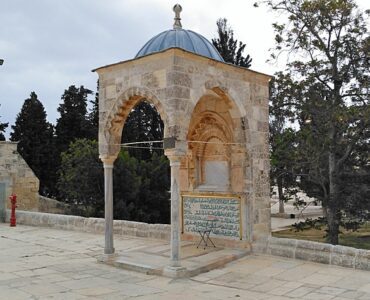
Dome of Yusuf bin Ayyub
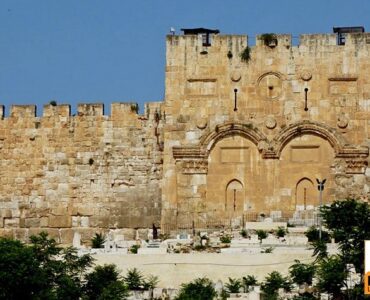
The Golden Gate (Bab ad-Dhahabi)
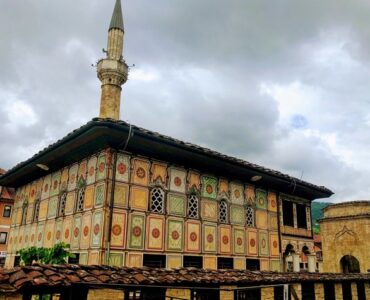
Šarena Mosque (The Painted Mosque), Macedonia
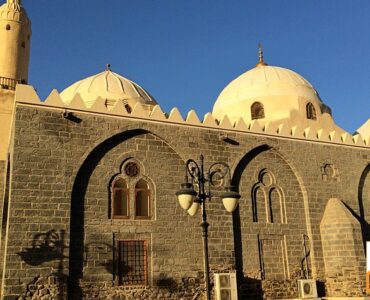
Masjid al-Ghamama
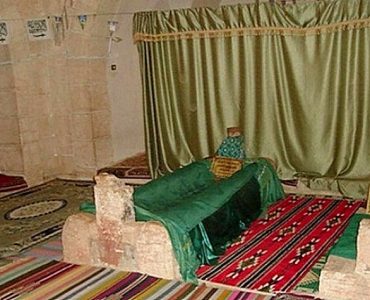
Tomb of Umar bin Abdul Aziz (رحمه الله)
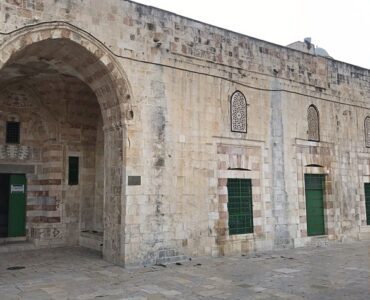
Madressa al-Ashrafiyah
Find answers to over 300 Hajj and Umrah questions
About this site
Please note that some of the places featured on this site cannot be verified for certain. The knowledge of these places has been passed down through the ages and in some cases more than one location make claim to hosting the same historical place. In such instances IslamicLandmarks.com has shown the most commonly believed site. And Allah (ﷻ) knows best.
Our social media channels
If you've benefitted from this website please consider making a donation . It will help us to expand the site and create more functionality which will insha'Allah benefit many others.
Stay up to date and informed on:

0 Visitors since 2020

Worcester County Wonders: Taking center stage at Mechanics Hall

WORCESTER — The history of Mechanics Hall is palpable from the moment one steps into the grand concert space. At its core, the venue stands as a musical mecca for Worcester, with the E. & G.G. Hook "Worcester Organ" sitting front and center, its pipes and Corinthian-style columns framing its magnificence.
Today it remains the oldest unaltered four-keyboard pipe organ in the Western Hemisphere still located at its original installation site.
That installation site is key to the spectacular sound, and it all comes down to the acoustics. The near-perfect acoustics are internationally regarded as being among the world's best. The stage and the small recording studio have welcomed great musicians throughout the years, including Yo-Yo Ma, Ella Fitzgerald and Linda Ronstadt.
"You wouldn't believe the number of times I've heard someone say, 'Oh, yes, I've played at Carnegie Hall, but I much prefer this place,'" said Kathleen Gagne , the executive director of Mechanics Hall.
And it's easy to see why. Stepping onto the stage on a beautiful Tuesday morning, I was given the opportunity to test out the acoustics myself. Taking center stage, I opened my mouth and let out a loud sigh. The sound immediately swept into the furthest corners of the space before folding back in the direction of its origin.
Opting to sing the national anthem, each note that left my mouth felt different as it bounced off the historical walls. The louder the sound, the harder the notes would return, slapping the stage much like a wave upon the shore. The incredible experience of hearing my own voice echo across the space gave me just a taste of what professional musicians encounter.
"Anyone can record here," said Amy Sklar, director of sales and marketing. "We have lots of local students come in to record musical pieces for college and university applications."
Aside from musicians, the stage has welcomed presidents — including Bill Clinton, Gerald Ford, Woodrow Wilson, William Howard Taft, Theodore Roosevelt and William McKinley — along with important historical figures including Mark Twain, Susan B. Anthony and Charles Dickens .
"It's just so much fun to hear stories from the people that visit," Gagne said. "Often their story is about someone I didn't even know performed or spoke here."
Even with an empty audience, the painted eyes in portraits of distinguished Americans watch within their frames. These portraits have been hanging on these walls since 1866 and include George Washington and Abraham Lincoln. Earlier this year, portraits of Frederick Douglass, Sojourner Truth, and William and Martha Brown were unveiled.
The hall's history dates to the mid-19th century, when Worcester began flourishing into an industrial epicenter. More people moved into the area, bringing tradesmen like mechanics and craftsmen by the dozens.
By 1841, the Worcester County Mechanics Association was formed to help members advance their skills and give them a platform to understand and voice concerns about the state of the industry. The association held a number of debates, not just about professional concerns but also societal issues, including the treatment of Indigenous peoples, abolition and women's rights. By 1848, the organization hosted its first-ever Mechanics Fair, showcasing regional manufactured goods and inventions.
As the association grew, so did its need for space. Thus plans were put forth to build a hall on Main Street to serve the organization. By July 1855 the first shovels had hit the soil.
The building was dedicated in March 1857 and now sits on the National Register of Historical Places . Also in 1857, the first graffiti was sprawled inside one of the ticket booths on either side of the hall entrance. Since then, more names, phrases and promises of "forever" have been etched onto the wood and stained glass of the booths.
Throughout the years, the organization has changed with the times, opting to rent out the hall during the mid-20th century for roller skating and wrestling matches. By the 1970s the building was in need of a massive revitalization or risked being torn down. Thankfully the city of Worcester rallied behind the icon, raising $5 million to restore the space.
"The people of Worcester saved this place," Gagne said with a smile across her face. "It's truly amazing."
During the pandemic, the organization had to get creative as in-person concerts were put on hold.
"We survived," she added. "It was hard to get people together but with this space, we were able to have about 50 recording sessions throughout the pandemic."
Now the hall is entering an extremely busy season, hosting several high school proms in April and May, along with other community events , including performances by the Worcester Symphony Orchestra and even a yoga class on the floor of the hall at the end of the month.
"I think one of our best events is the Brown Bag Concerts ," Sklar said. "It really gives those who may not typically be able to come to any other event a chance to come and listen to some amazing music."
The free concert series has been a staple at the hall since 1983, offering visitors a chance to bring their own "brown bag" lunch and enjoy a concert in the middle of the day.
Thanks to Cara for her suggestion of Mechanics Hall for this edition of Worcester County Wonders.
T&G engagement editor Sarah Barnacle is getting to know Central Mass. by exploring some of the best places to go and things to do in Worcester County. If you have an idea or suggestion, please email [email protected] .
- Share full article

Opinion Lydia Polgreen
The Student-Led Protests Aren’t Perfect. That Doesn’t Mean They’re Not Right.
Supported by
By Lydia Polgreen
Photographs by Mark Peterson
Ms. Polgreen is an Opinion columnist and a co-host of the “Matter of Opinion” podcast for The Times. Mr. Peterson is a photographer based in New York and a member of Redux Pictures.
- April 26, 2024
On Wednesday morning, on a corner across the street from Columbia University, a man dressed in black, a huge gold cross around his neck, brandished a sign that featured a bloodstained Israeli flag and the word “genocide” in capital letters. He was also shouting at the top of his lungs.
“The Jews control the world! Jews are murderers!”
I watched as a pro-Palestinian protester approached the man. “That is horribly antisemitic,” she said. “You are hurting the movement, and you are not a part of us. Go away.”
The man shouted vile, unprintable epithets back at her, but the woman, who told me she had come to New York from her home in Baltimore to support the protesting students, walked away.
Hours later, a well-known congressional reporter covering House Speaker Mike Johnson’s visit to Columbia’s campus posted a photograph of the same man. “One sign here at the Columbia protest,” the reporter, Jake Sherman, wrote. “This man is ranting about Jews controlling the universe.”
The man wasn’t at the Columbia protest. The university’s campus has been closed to outsiders for over a week — even as a journalist and an alumna, I had trouble getting in. He was, several people on social media told Sherman, a well-known antisemitic crank completely unconnected from what was unfolding on campus. Indeed, last week I had seen a man wearing an identical cross carrying a similarly lettered sign that read, “Google it! Jews vs. TikTok” protesting outside Donald Trump’s criminal trial in Lower Manhattan. He was, for the record, standing on the pro-Trump side of the protest area.
But the incident is emblematic of how difficult it has become to make sense of what is actually happening on college campuses right now. As the protests have spread to dozens of campuses and counting , competing viral clips on social media paint vastly different versions of what’s happening inside these pro-Palestinian camps. Are they violent conflict zones, filled with militant protesters who hurl antisemitic abuse and threaten Jewish students, requiring, as some political leaders have suggested, deployment of the National Guard? Or is it a giant love-fest of students braiding daisy chains and singing “Kumbaya”?
I tried to figure this out the only way I know how: by reporting. I happened to have been on campus on April 18, the day Columbia’s president, Minouche Shafik, decided to call in the New York Police Department to clear the protesters from campus, and I returned a week later to spend the day reporting on the protests and the mood on campus.

What I saw were moving, creative and peaceful protests by people seeking to end the slaughter in Gaza, where more than 34,000 people have died, a majority of them women and children. I also saw things that left me quite troubled and heard from Jewish students both inside and outside the camps navigating a campus fraught with emotions. But while reporting on the protests up close gave me insight into how unsettling some aspects of activism can be, it doesn’t mean the protesters’ actions are misguided. These young people seek a worthy cause: to end what may be the most brutal military operation for civilians in the 21st century.
In the days since Shafik called for the N.Y.P.D. to break up protests, copycat encampments have sprung up on dozens of campuses across the country, and at least 17 of them have faced police intervention. My social media feeds have filled with horrifying images of students and professors being violently dragged away by the police. In one especially shocking video from Emory University captured by CNN, a police officer shouts at Caroline Fohlin, a middle-aged economics professor: “Get on the ground! Get on the ground!” The officer grabs her and flips her onto the grass as she screams: “Oh my God! Oh my God!”
On Wednesday afternoon during his visit to campus, Johnson made it clear what he thought was happening there. He all but called the university a war zone and declared the protests as antisemitic, conflating, as many proponents of Israel do, opposition to Israel’s policies with hatred of Jews. “It’s detestable, as Columbia has allowed these lawless agitators and radicals to take over,” he said. “If this is not contained quickly and if these threats and intimidation are not stopped, there is an appropriate time for the National Guard. We have to bring order to these campuses.”
While Johnson was meeting with a group of Jewish students, I was wandering among the lawless agitators, who have been camping out on a lawn on campus. In one corner of the encampment, a small group of students sat cross-legged, discussing the poem “Kindness” by the Palestinian American poet Naomi Shihab Nye. Another group had broken out art supplies to reapply the paint to its Gaza Solidarity Encampment banner. Others were napping or doing yoga. There was a well-stocked food tent, with options for all — gluten-free, vegan, nut-free and more. I have spent more than my share of time in war zones. This felt more like an earnest folk music festival.
On campus, I spoke to Muslim and Arab students who told me how frightened and angry they were. I spoke to Jewish students who participated in the pro-Palestinian protests and scoffed at the notion that the protests endangered them. I also spoke to Jewish students who told me that they felt the protests targeted them as Jews and made them fear for their safety.
Whether you are watching student protesters on social media or experiencing the protests in person, the way you understand these protests depends on your perception of what they are protesting. It could not be otherwise. If you feel that what is happening in Gaza is a moral atrocity, the student protests will look like a brave stand against American complicity in what they believe is genocide — and a few hateful slogans amid thousands of peaceful demonstrators will look like a minor detail. If you feel the Gaza war is a necessarily violent defense against terrorists bent on destroying the Jewish state, the students will seem like collaborators with murderous antisemitism — even if many of them are Jewish.
I heard both of these perspectives from Columbia students themselves on campus. “When I sit in statistics class and I am hearing ‘globalize the intifada,’ ‘from the river to the sea and so on,’ I cannot study, and I cannot focus on the class,” Saar, a junior at Columbia who asked that I not include her last name, told me. “I don’t know who will sit behind me in class, who might follow me after class, and God knows what might happen. You’re living in fear all the time. People are hiding their faces. You don’t know who is who.”
David Pomerantz, a sophomore who was among the group that met with the House speaker, told me that he didn’t personally feel he was in imminent danger but worried about others. “I think especially my friends who are visibly Jewish, who walk around in kipa, get dirty looks, get chastised for that,” he said. “I think they do feel like they’re in real physical danger. It’s a problem that can’t continue.”
While Jewish students who object to the pro-Palestinian encampment navigate fear and uncertainty, those inside the camp are facing a different type of threat. I spoke to Jared, a Jewish student participating in the protests. He had given an interview in which his full name appeared, and he said someone in his family had received a threatening voice mail.
“They like to dress us up as a token minority or as self-hating Jews,” he told me. “But I was raised as a Jewish person to call attention to injustice whenever I see it. Palestinians should be the focus, not my safety on campus. The only threat to my safety comes from the administration.”
Just outside the campus gates, the scene was more tense. The protests have become a destination for opportunists of all kinds. Nasty purveyors of chaos. Gavin McInnes, the right-wing founder of the Proud Boys, turned up , student journalists reported. On Thursday, Christian nationalists descended on Columbia to stage their own, ostensibly pro-Israel protest, screaming through the campus gates to the student protesters inside: “You want to camp? Go camp in Gaza!” according to a reporter on the scene.
At times I saw pro-Israel protesters seek to provoke pro-Palestinian groups into confrontations. A white-haired man in a khaki military-style shirt with a small Israeli flag stitched onto the chest approached a group of protesters I was interviewing just off campus. They were standing around, not chanting or holding signs.
“Israel has had 400 Nobel Prize winners,” he falsely claimed (13 Israelis have won the prize), tapping the flag. “How many has your side won?”
One of the protesters, a man with a kaffiyeh wrapped around the top of his head, replied: “I don’t care about Nobel Prizes right now. I care about dead Palestinian babies.”
Interactions like those make up the flood of “evidence” we’re seeing online, much of it placed there by the moral combatants themselves. Some videos, like one that supposedly depicted a Jewish Yale student getting stabbed in the eye by a Palestinian flag, turn out to be misleadingly portrayed by the victim. Others depict what appears to be clear harassment of Jewish students, such as the one filmed outside the gates of Columbia’s campus where a protester shouted, “Go back to Poland,” at Jewish students and another declared that Oct. 7 would happen “10,000 times.” Many videos show peaceful, even joyful protests or feature Jewish students who support the pro-Palestinian protests and declare that they feel safe on campus.
What are we to make of these competing claims? Having spent the past week immersed in these protests, I understand the desire to fix upon some singular piece of evidence that will decode, definitively, their moral core. But there is plenty of evidence ready-made for any side to claim moral high ground here. The camps are on the whole peaceful but it must be acknowledged that problematic things are being said.
On Thursday, video from January began circulating of one of the student protest leaders at Columbia, Khymani James, saying that “the same way we are very comfortable accepting that Nazis don’t deserve to live, fascists don’t deserve to live, racists don’t deserve to live, Zionists, they shouldn’t live in this world,” and “be grateful that I’m not just going out and murdering Zionists.” On Friday James released a statement apologizing for the video.
On Monday, after the arrest of more than 100 N.Y.U. protesters, the demonstrations outside Police Headquarters went on all night. I live nearby and went down to see the protest for myself. It was a different vibe from the night the Columbia students had been arrested. There were more chants, delivered with much tighter unison and at greater volume.
“From the river to the sea, Palestine is almost free,” one chant went.
“Move, cops. Get out the way. We know you’re Israeli trained.”
“There is only one solution: intifada revolution,” went another.
I winced upon hearing the last chant. Not so much the word intifada, which has many meanings and intonations depending on the context. But why choose the word “solution,” one so redolent of the Nazis’ “final solution,” which murdered six million Jews across Europe?
When the time came for a late-evening prayer, some protesters laid down their banners to use them as prayer rugs, turning toward Mecca, which in this case meant bowing down before a line of police officers in riot gear. After the prayer concluded, some of the men wandered over to the line of officers who stood behind barricades. They singled out one officer in particular, a dark-skinned man who they seemed to think was a fellow Muslim.
“There’s no way he is a Muslim and he supports the killing of 15,000 kids,” one of the protesters said (it’s estimated nearly 14,000 children have been killed in Gaza since the war began). “Impossible, unless he is not a Muslim.”
“May Allah forgive you, bro,” another said.
The officer stared straight ahead, betraying no reaction to what he was hearing. Standing next to him was another officer, a Black woman. Another protester seemingly shouted her way: “Your ancestors are ashamed of you. Your ancestors were murdered by colonizers, and you are here standing with the colonizers.”
Almost instinctively, I took umbrage at the sight of a group of light-skinned young men badgering a Black woman doing her job. Personally, I found these tactics unpleasant, even repellent. It made me uncomfortable. I can see how they may make someone feel unsafe. But to me, this discomfort came nowhere near constituting a crisis requiring extraordinary interventions, like bringing in the National Guard.
Pretending that there is no antisemitism whatsoever in the movement is foolish and self-defeating. Antisemitism is widespread, not to mention on the American right . It stands to reason that there are some people who hold antisemitic views among a mass movement of protesters.
It is easy when looking backward to remember the fight for a good cause as pure and untainted, even if it did not seem so at the time. In the same way, we now remember the Vietnam War as an American tragedy. The students at Columbia University who protested it seem, in retrospect, to have been right. But our memories elide some of their more outré tactics. A list of popular chants employed by antiwar protesters at a time when thousands of American soldiers were dying each year fighting in the war included things like “One side’s right. One side’s wrong. We’re on the side of the Viet Cong!” and “Save Hanoi. Lose Saigon. Victory to the Viet Cong!”
These slogans are sickening. But by 1968, when the protests reached their peak, the U.S. government had already realized, according to the Pentagon Papers, that the war was all but unwinnable. Yet its brutal killing machine ground on for five more years, and an additional 38,000 Americans and countless Vietnamese, Cambodian and Laotian people died pointless deaths in a senseless, futile war.
There are clear signs that Israel is prosecuting a war just as brutal and unwinnable as the United States did back then. Some people may not like the slogans, tactics or proposals of today’s pro-Palestinian protesters. But the truth is that a majority of Americans have qualms about Israel’s pitiless war to root out Hamas, whatever the consequences for civilians. As politicians send riot police onto campuses to try to smother a new protest movement, we’d do well to keep in mind why we’ve forgotten the ugliest aspects of the Vietnam protests: Those memories have been replaced, instead, by an enduring horror at what we did.
Mr. Peterson is a photographer based in New York and a member of Redux Pictures.
The Times is committed to publishing a diversity of letters to the editor. We’d like to hear what you think about this or any of our articles. Here are some tips . And here’s our email: [email protected] .
Follow The New York Times Opinion section on Facebook , Instagram , TikTok , WhatsApp , X and Threads .
Lydia Polgreen is an Opinion columnist and a co-host of the “ Matter of Opinion ” podcast for The Times.
Advertisement

IMAGES
VIDEO
COMMENTS
Mecca, or Makkah, is the birthplace of the Prophet Muhammad SAW, the final messenger of Allah. He was born in the Year of the Elephant, marking 570 AD on the Gregorian calendar. As the "Seal of the Prophets," his mission was to convey Allah's message to humanity. The revelation of the Quran and the establishment of Islamic teachings began ...
Mecca, city, located in the Sirat Mountains in western Saudi Arabia, inland from the Red Sea coast. It is the site of the Kaaba, which is the holiest site in Islam, the central focus of the hajj pilgrimage, and the direction of Muslims' daily prayers. Mecca is also the birthplace of Muhammad.
Mecca is a city of terrific importance in Islamic tradition. It is a center of pilgrimage and prayer -- a sacred place where Muslims are free from the distractions of daily life. Only Muslims are allowed to visit the holy city of Mecca and enter its inner sanctum, the birthplace of the Prophet Muhammad and Islam.
Introduction: Why Visit Mecca? Mecca is the holiest city in the Islamic faith and a mandatory pilgrimage site for all able-bodied Muslims. Located in present-day Saudi Arabia, Mecca was where the Prophet Muhammad was born and received the revelation of the Quran. For people who follow Islam, Mecca is a place of great religious significance and ...
Around the world, Muslims celebrate the holy festival with special prayers at the mosque, followed by meeting food, family and friends. This year, Eid will fall on 9 July. On the last days of Hajj ...
The purest place in the world, and the city that embraces the qiblah of Muslims. Learn about its ancient history, its great Islamic status, ways to reach it, and the best seasons to visit it to see its many historical and Islamic landmarks.
Mecca, Saudi Arabia. The Ka'aba (literally "the cube" in Arabic) is an ancient stone structure that was built and re-built by prophets as a house of monotheistic worship. It is located in the interior courtyard of the Grand Mosque. The Ka'aba is considered the center of the Muslim world, and is a unifying focal point for Islamic worship.
At this moment in mid-August, 1.5 million people from dozens of countries around the world are in Mecca, Saudi Arabia, to perform the hajj, the Islamic religious pilgrimage. It's a huge event ...
During the Hajj the Pilgrims perform acts of worship and they renew their sense of purpose in the world. Mecca is a place that is holy to all Muslims. It is so holy that no non-Muslim is allowed ...
The Kaaba (Kaʿbah) surrounded by pilgrims during the hajj, Mecca, Saudi Arabia. The cube-shaped structure (the word kaʿbah means "cube" in Arabic) is roughly 50 feet (15 meters) high, and it is about 35 by 40 feet (10 by 12 meters) at its base. Constructed of gray stone and marble, it is oriented so that its corners roughly correspond to ...
Mecca (/ ˈ m ɛ k ə /; officially Makkah al-Mukarramah, commonly shortened to Makkah) is the capital of Mecca Province in the Hejaz region of western Saudi Arabia and the holiest city in Islam. It is 70 km (43 mi) inland from Jeddah on the Red Sea, in a narrow valley 277 m (909 ft) above sea level.Its last recorded population was 2,385,509 in 2022. Its metropolitan population in 2022 is 2.4 ...
1. Birth Place of Mohammed & Prophet of Islam. The first reason why Muslims adore Mecca, in the main, because of the love they have for the Prophet of Islam, Mohammed (SAW). Mohammed (SAW) was from Mecca called Abd al-Qasim Muhammad ibn 'Abd Allah ibn 'Abd al-Muttalib ibn Hashim and was born in 571. He died 62 years later.
Published 11:26 PM PDT, June 24, 2023. MECCA, Saudi Arabia (AP) — Over 1.8 million Muslims are taking part in this week's Hajj pilgrimage to the holy city of Mecca in Saudi Arabia, as one of the world's largest religious gatherings returns to capacity following years of coronavirus restrictions. The Hajj is one of the five pillars of ...
The Umrah (meaning, "to visit a populated place") is a pilgrimage to Mecca performed by Muslims that can be undertaken at any time of the year. The Umrah is not compulsory, but highly recommended. A rite of these pilgrimages involves the story of Hagar's repeated attempts to find water for her son by running between the hills of Safa and Marwa.
hajj, in Islam, the pilgrimage to the holy city of Mecca in Saudi Arabia, which every adult Muslim must make at least once in his or her lifetime.The hajj is the fifth of the fundamental Muslim practices and institutions known as the Five Pillars of Islam.The pilgrimage rite begins on the 7th day of Dhū al-Ḥijjah (the last month of the Islamic year) and ends on the 12th day.
Tourist Places to Visit in Mecca. Great Mosque of Mecca - Masjid al-Haram, Kaaba, Jabal Al Nour, Abraj Al-Bait Tower, City of Mina, Makkah Museum, Mount Arafat, Jamaraat Bridge, Clock Tower Museum Mecca, Masjid Ayesha Miqat, Elephant Rock Mecca, and many more. If you are planning to go on a Hajj or Umrah pilgrimage or just wish to vacation in ...
Mecca and Medina are Islam's holiest cities, cherished by over 1 billion Muslims around the globe. Mecca is home to the Kaaba, the cubical building that was first built by Prophet Abraham and his son Ishmael, while Medina has the tomb of the Prophet Muhammad, who Muslims believe is the final messenger of God in a long chain of messengers including Moses and Jesus.
Masjid al-Haram (Arabic: ٱَلْمَسْجِدُ ٱلْحَرَام , romanized: al-Masjid al-Ḥarām, lit. 'The Sacred Mosque'), also known as the Sacred Mosque or the Great Mosque of Mecca, is considered to be the most significant mosque in Islam. It encloses the vicinity of the Kaaba in Mecca, in the Mecca Province of Saudi Arabia.It is among the pilgrimage sites associated with the ...
Hajj involves a series of rituals that take place in and around Mecca over a period of five to six days. The first of these is tawaf in which pilgrims walk around the Ka'ba seven times in an anti-clockwise direction. Muslims believe that the rituals of Hajj have their origin in the time of the prophet Ibrahim (Abraham).
Mecca. Mecca is the birthplace of the Prophet Muhammad. The Kaaba is located in the center of the Great Mosque in Mecca and universally considered by Muslims to be the most sacred spot on Earth. ... God commanded him to call the people to perform Hajj and urged them to visit his sacred house, in accordance with the Almighty's saying in the ...
Great Mosque of Mecca, mosque in Mecca, Saudi Arabia, built to enclose the Kaʿbah, the holiest shrine in Islam.As one of the destinations of the hajj and ʿumrah pilgrimages, it receives millions of worshippers each year. The oldest parts of the modern structure date to the 16th century. The mosque, which comprises a rectangular central courtyard surrounded by covered prayer areas, is the ...
Ultimately, we go to Hajj in Mecca to realize our noble and honored divine destiny and purpose, and to become what God Almighty created humanity: awakened and enlightened spiritual deputies of the One. Muslims go to Hajj in Mecca to become purified and perfected servants and representatives of the Divine in creation, awakened human beings who ...
When the question arises, ' Can non-Muslims go to Mecca ' the answer is No. Non-Muslims are not allowed to enter the holy cities of Mecca in Saudi Arabia. The reasons for this restriction are deeply rooted in the Islamic faith and history. Mecca and Medina are considered the holiest cities in Islam and are revered by Muslims worldwide.
WORCESTER — The history of Mechanics Hall is palpable from the moment one steps into the grand concert space. At its core, the venue stands as a musical mecca for Worcester, with the E. & G.G ...
The Student-Led Protests Aren't Perfect. That Doesn't Mean They're Not Right. Ms. Polgreen is an Opinion columnist and a co-host of the "Matter of Opinion" podcast for The Times. Mr ...
Brasilía is a hotspot, but dengue is spiking across Brazil and Latin America. In 2023 the region hosted 80% of the world's confirmed dengue cases, according to the UN's World Health Organisation.